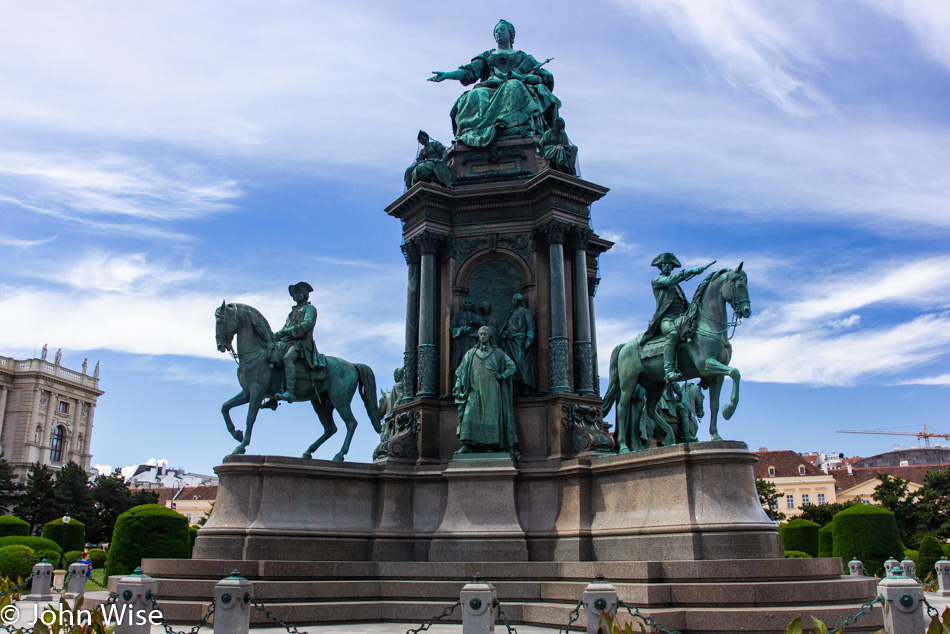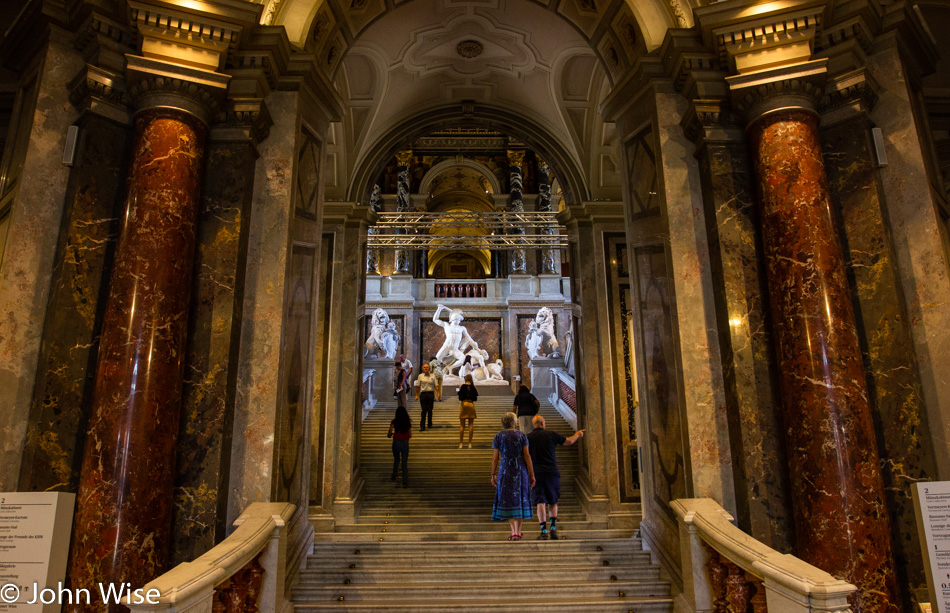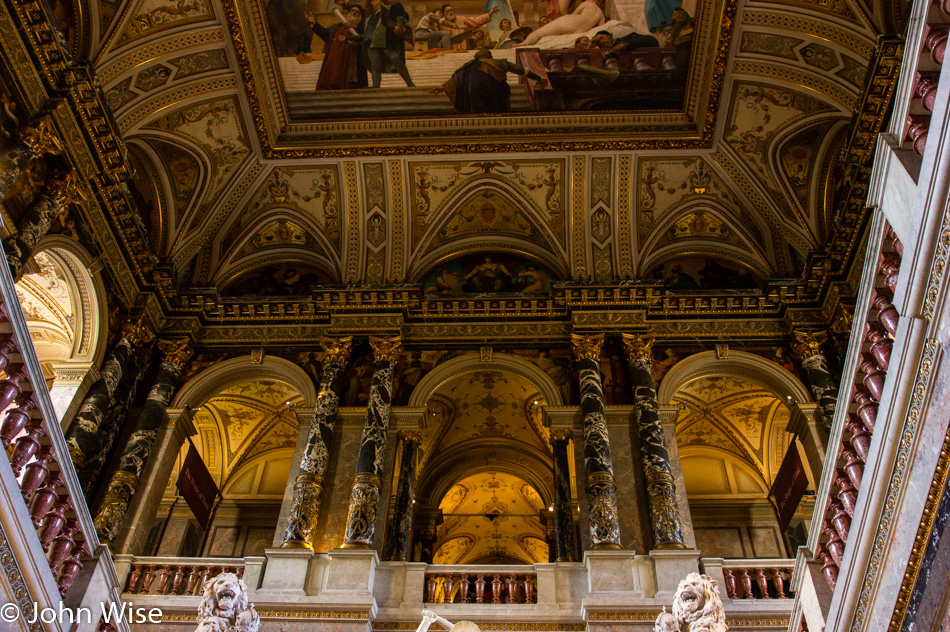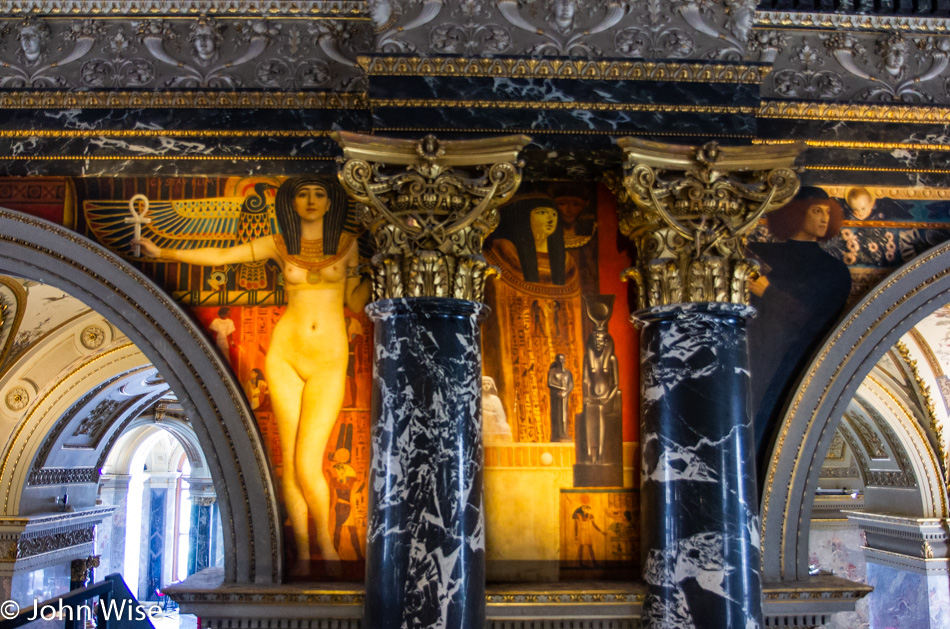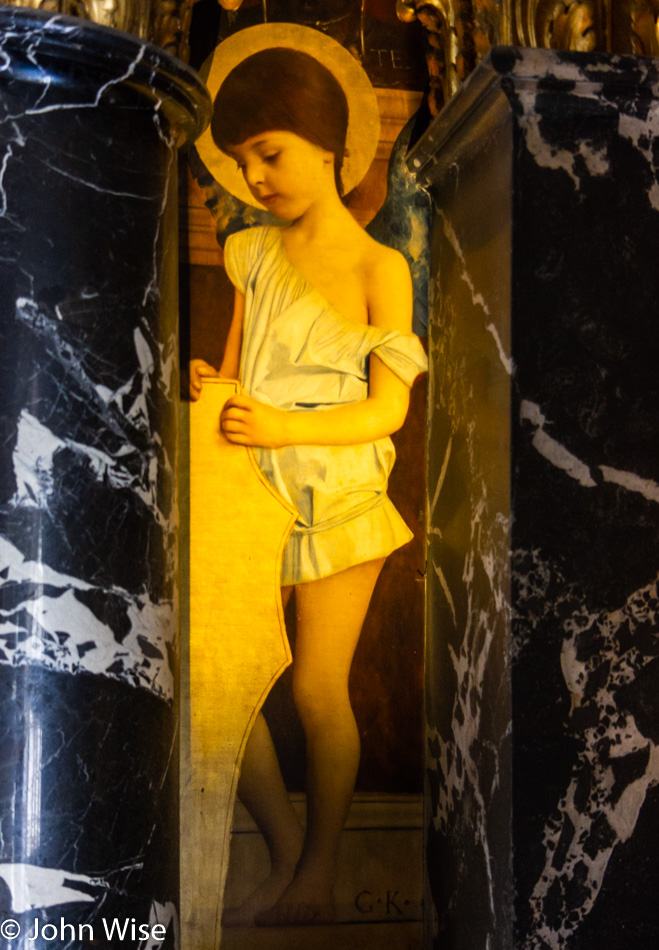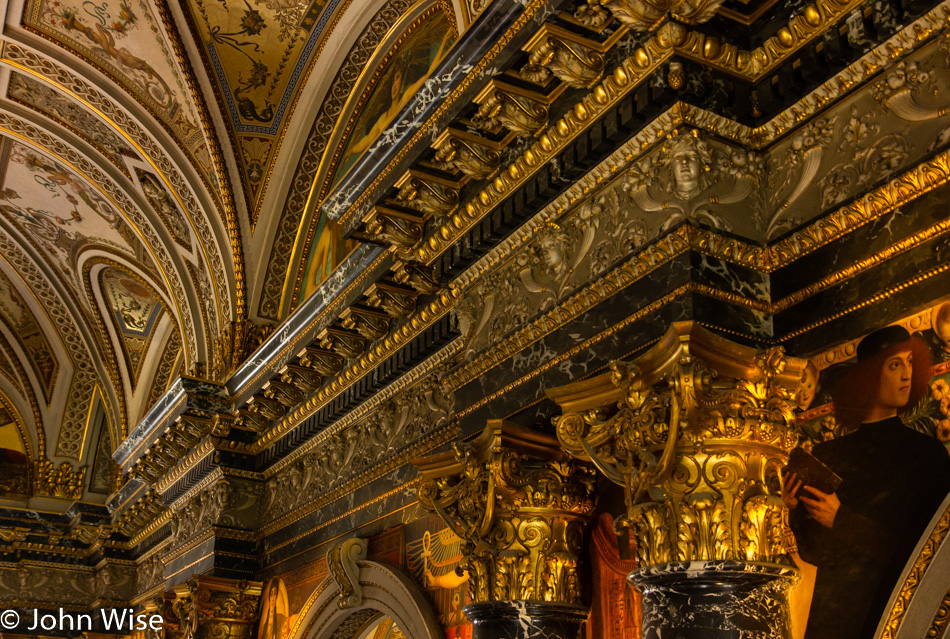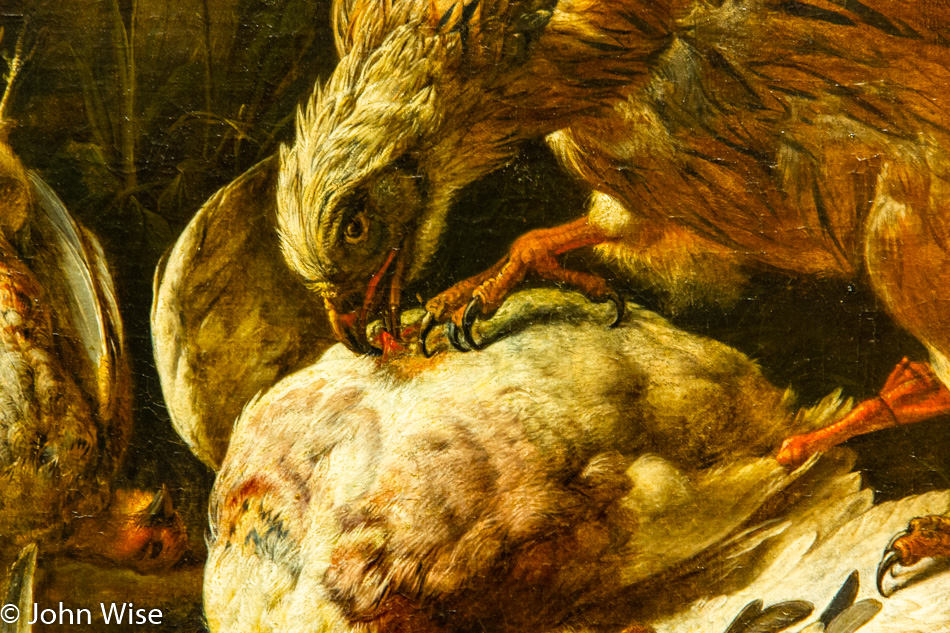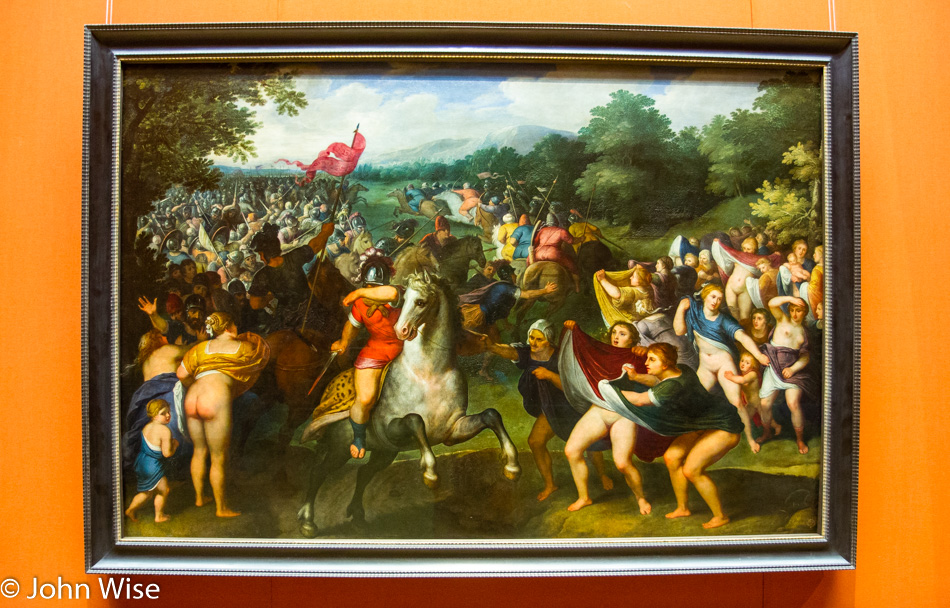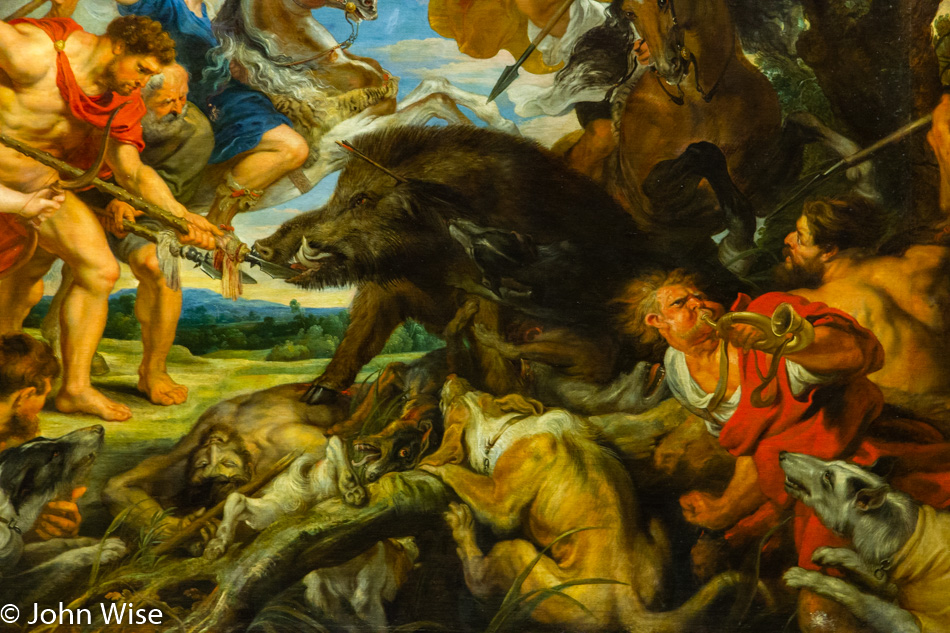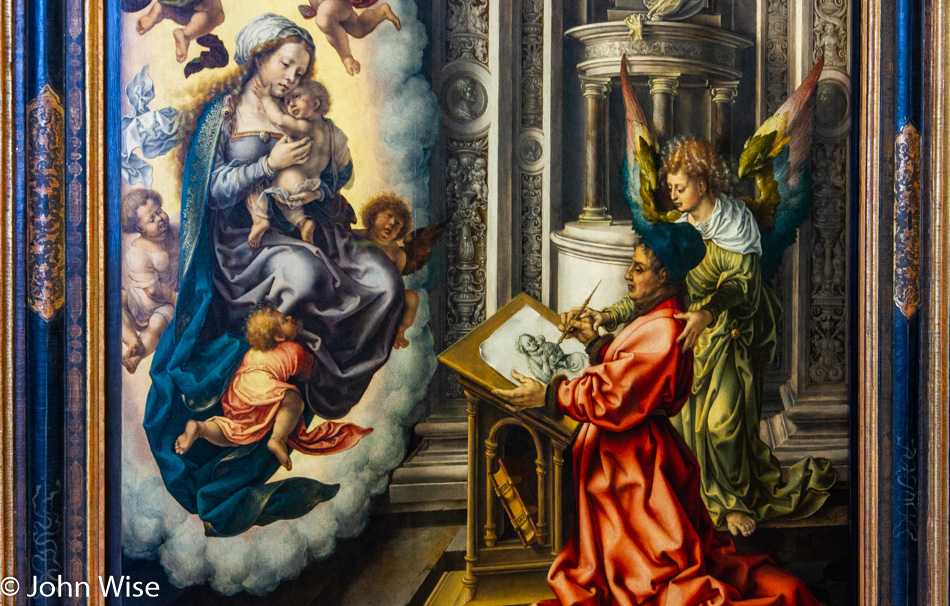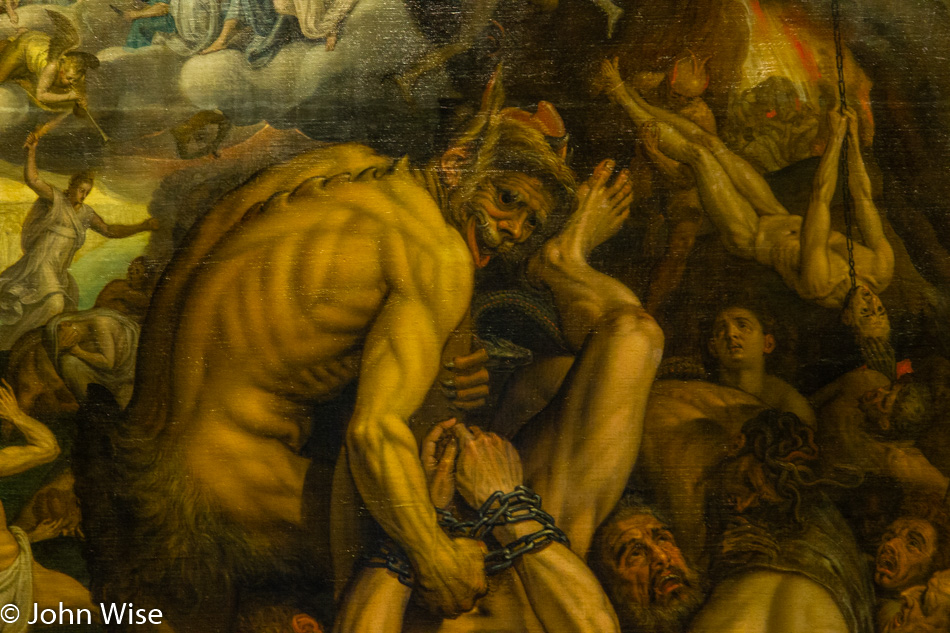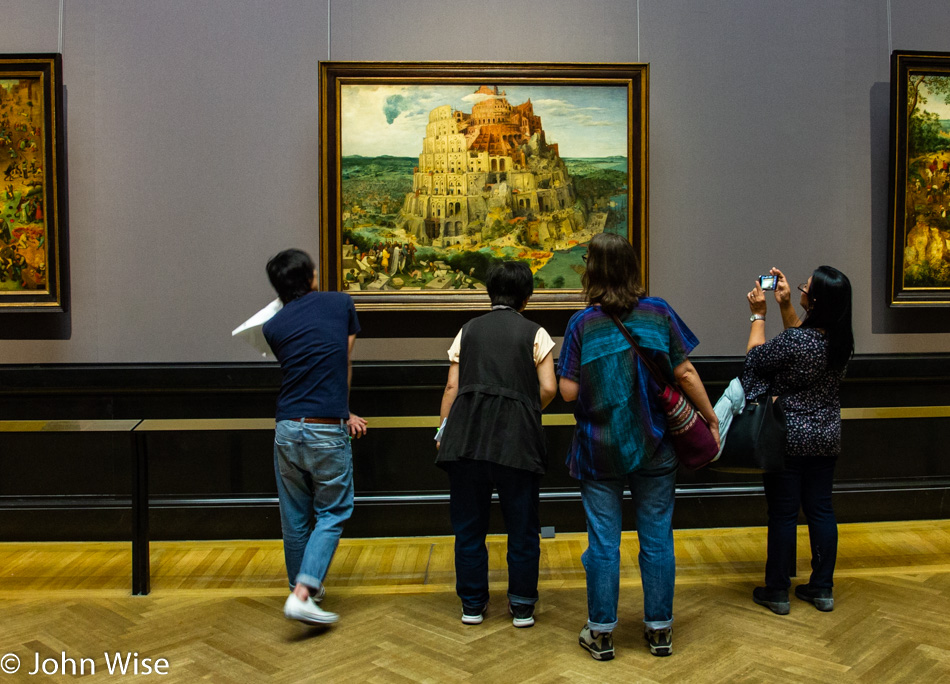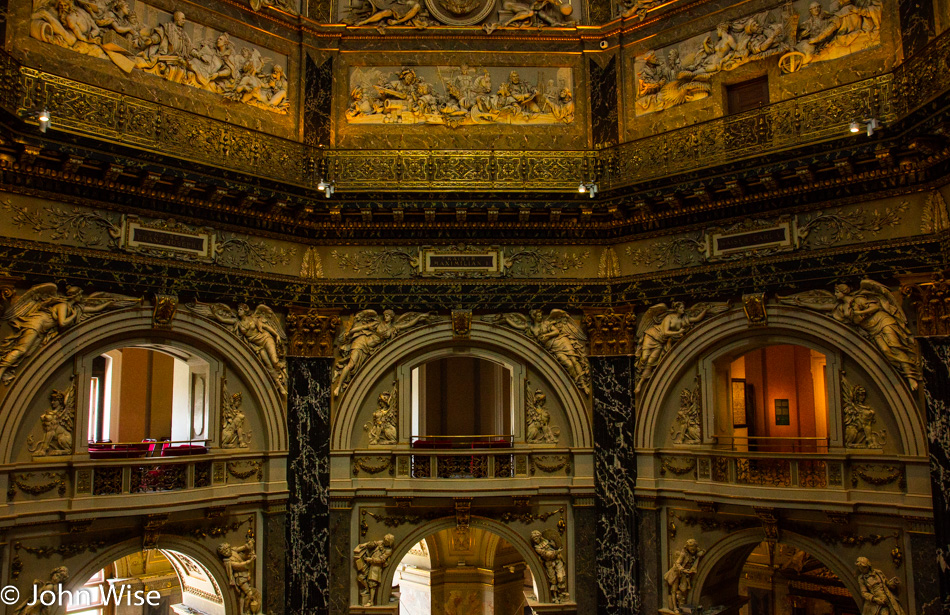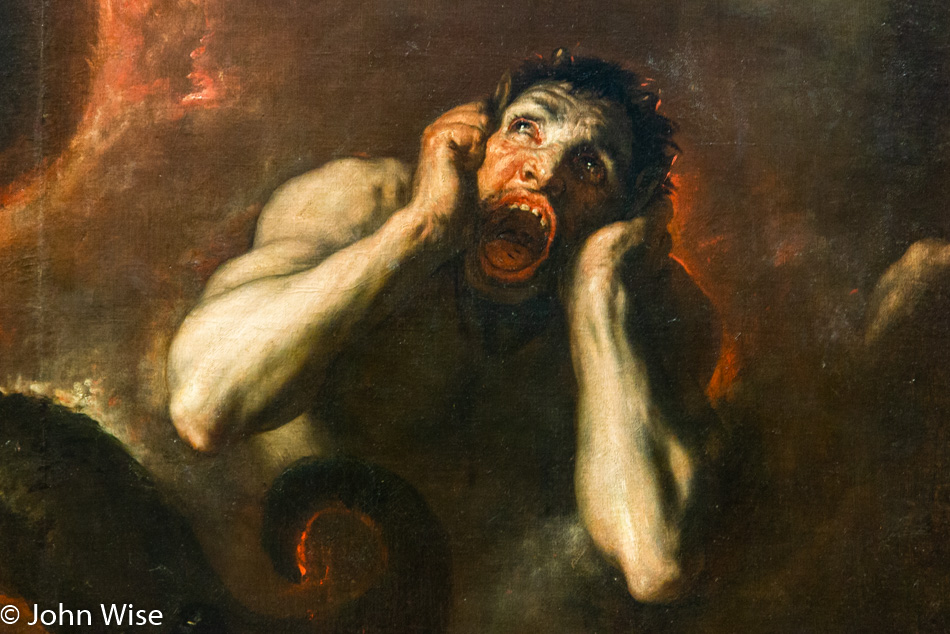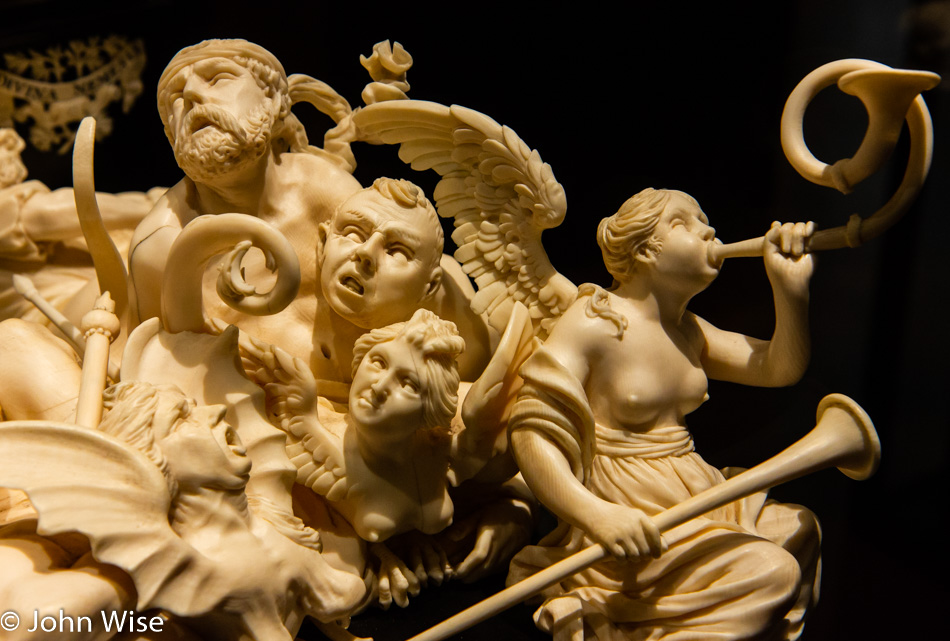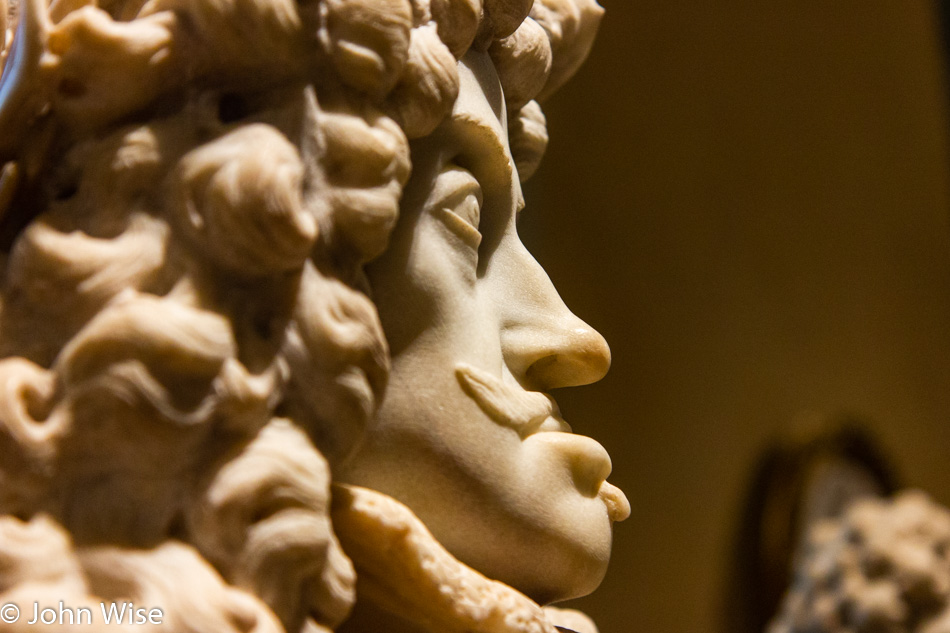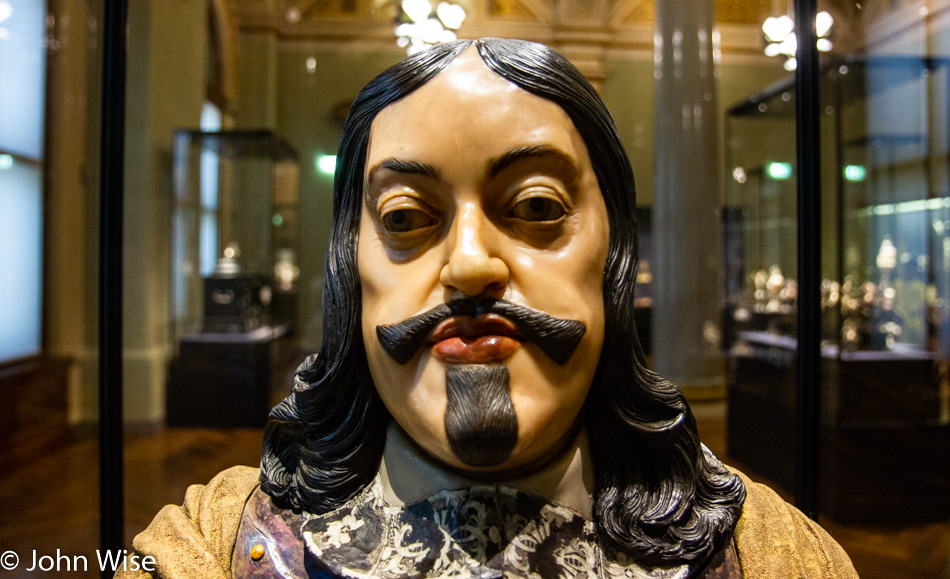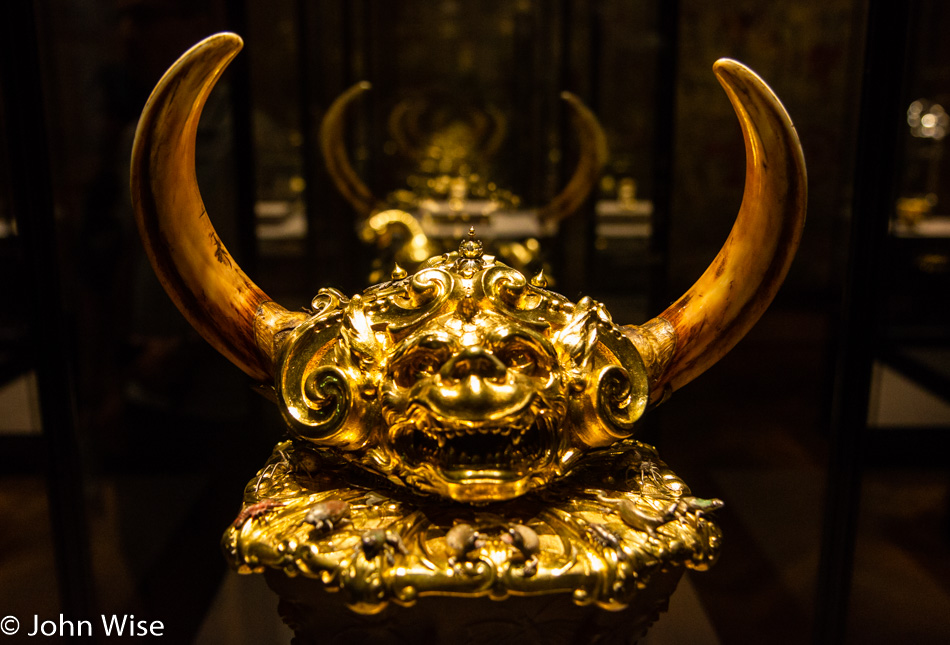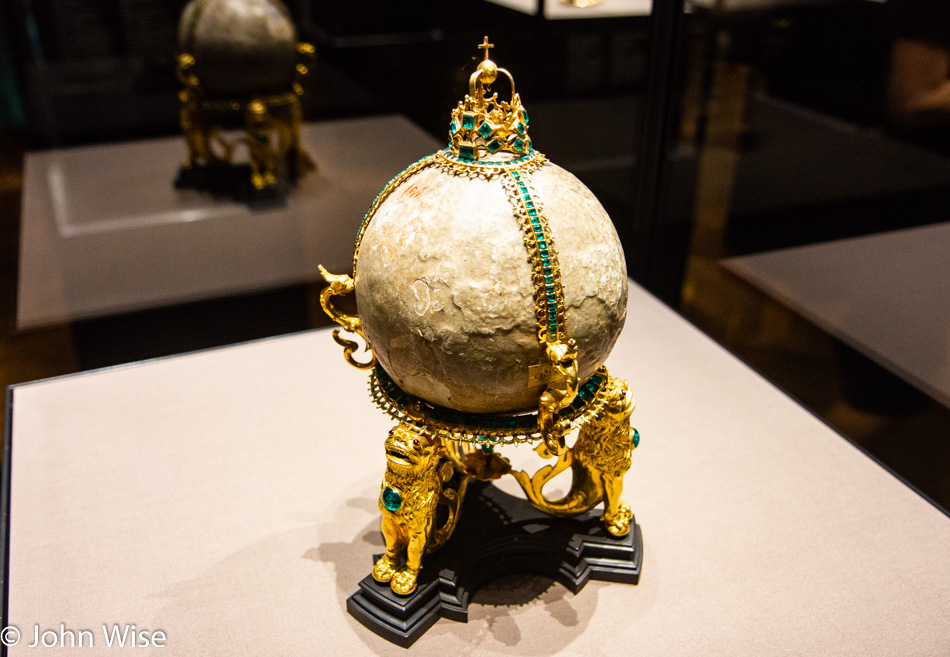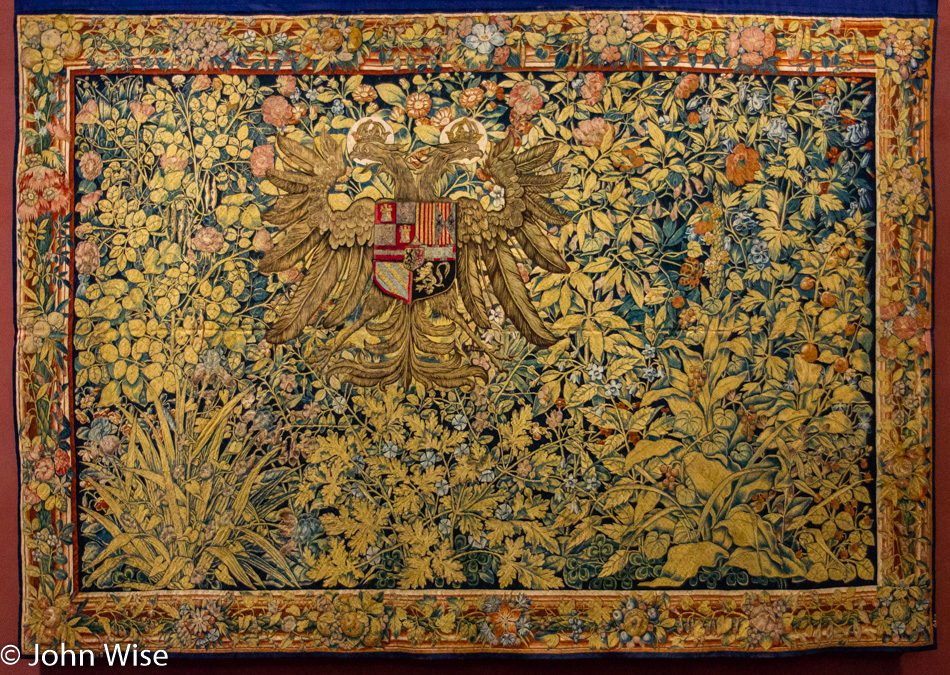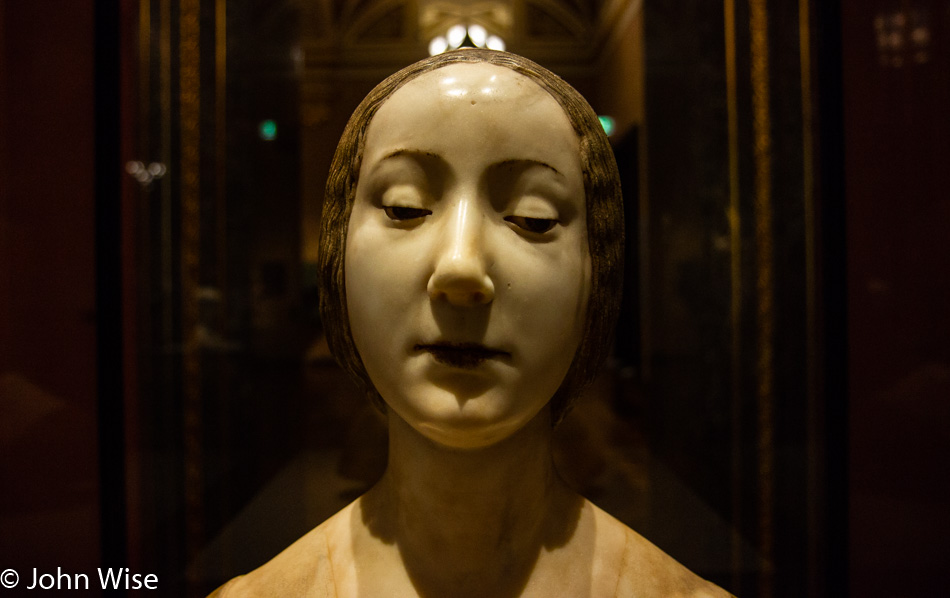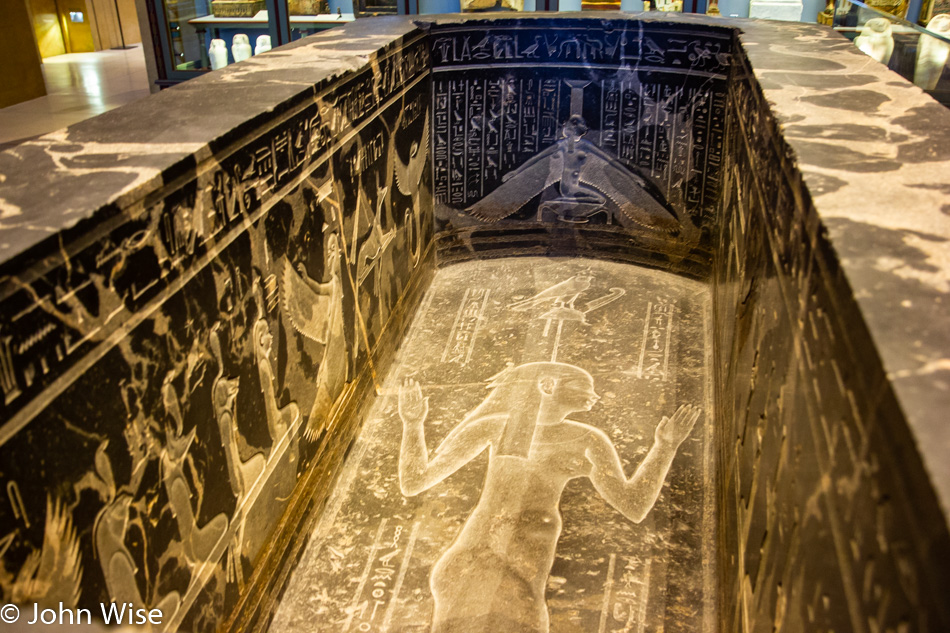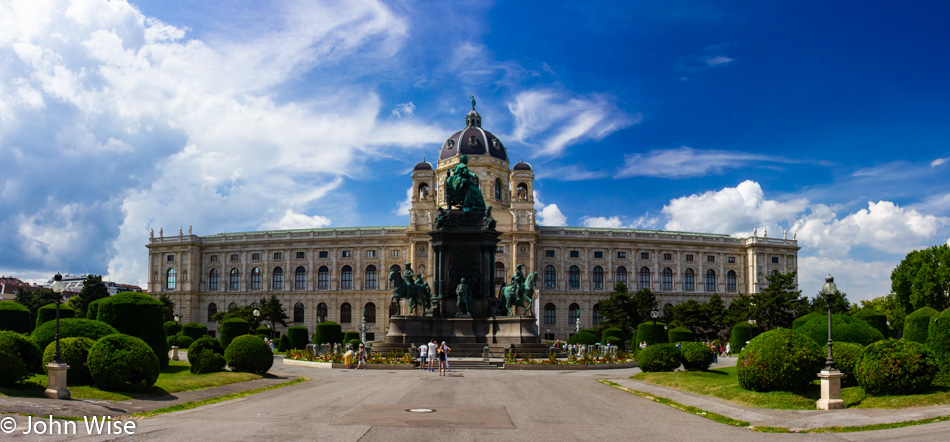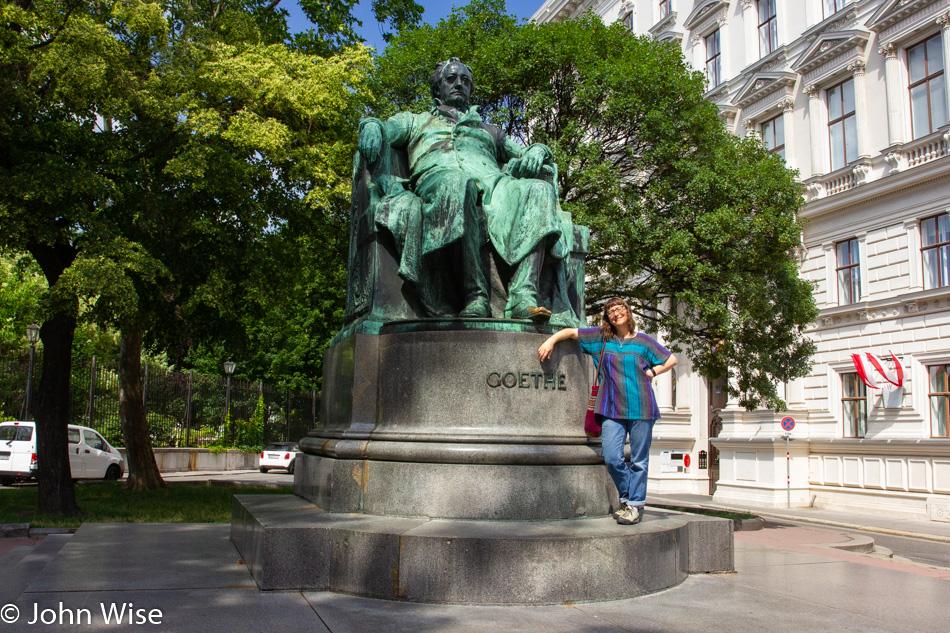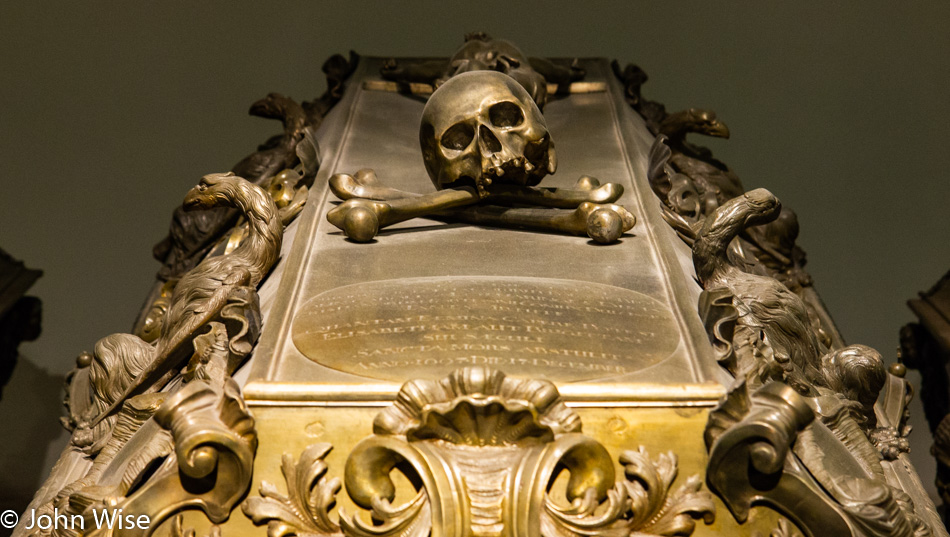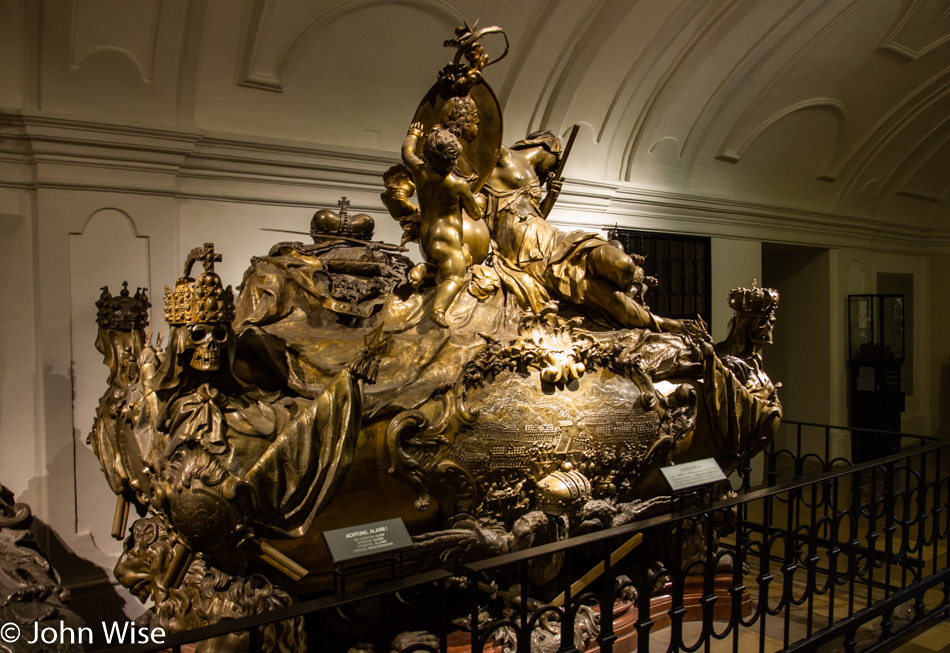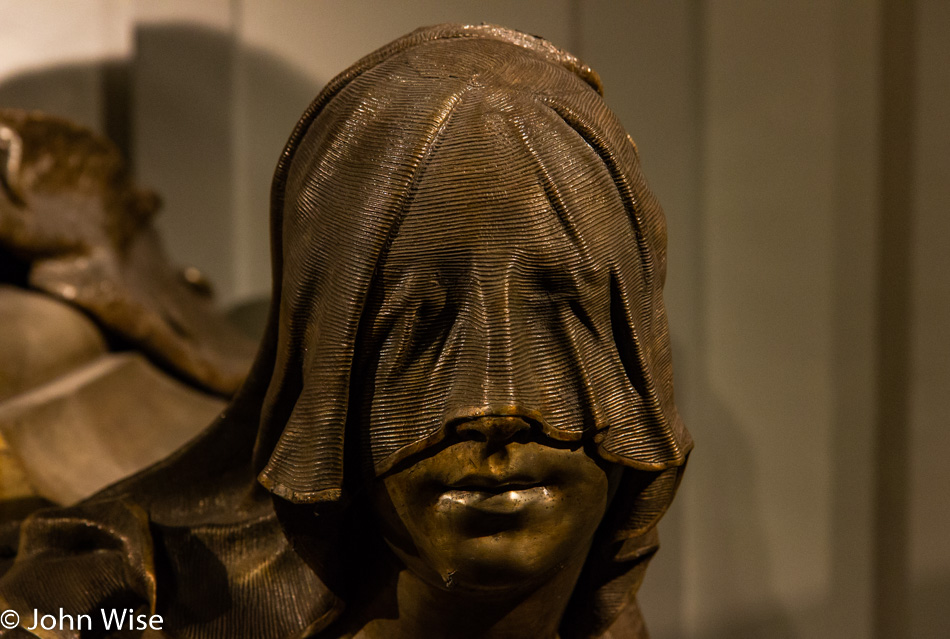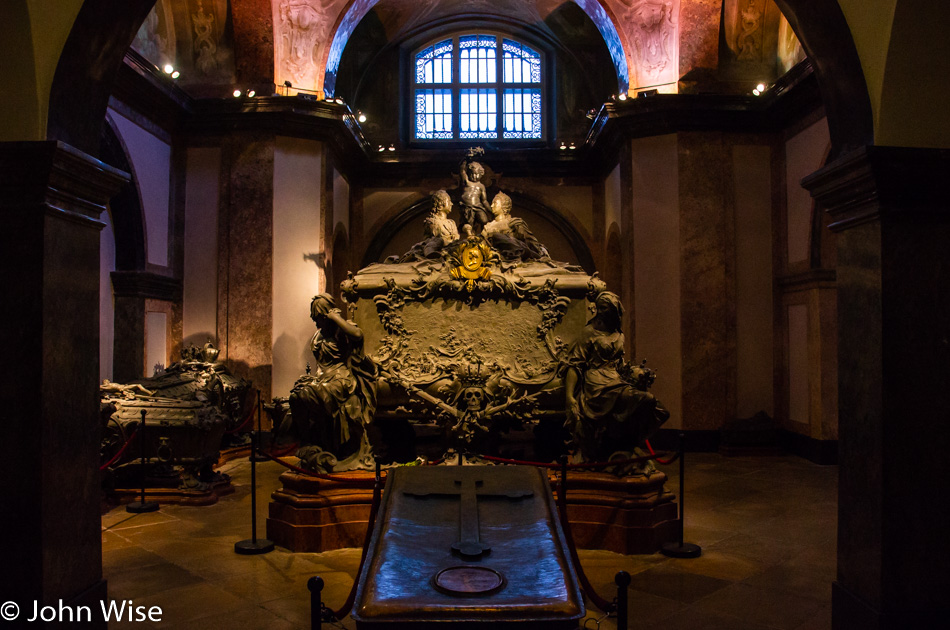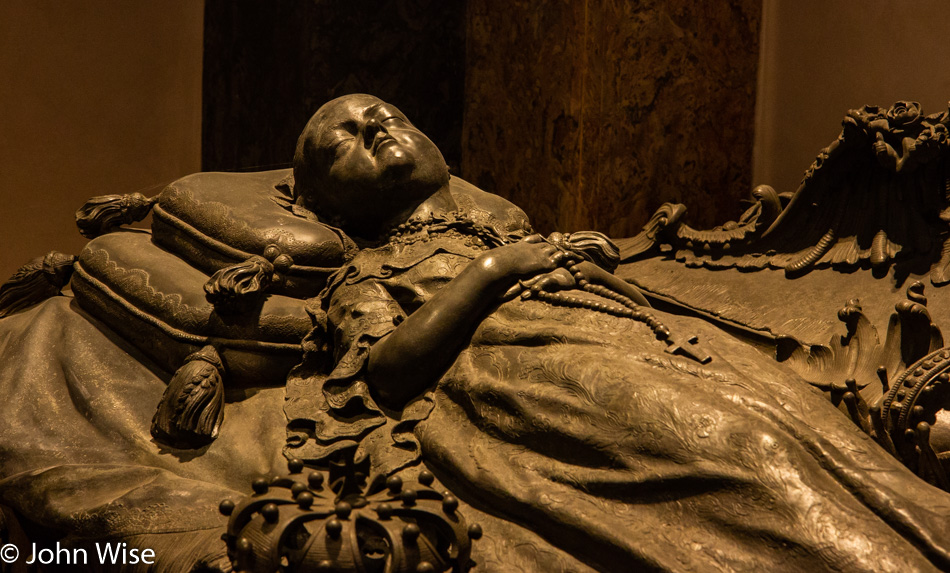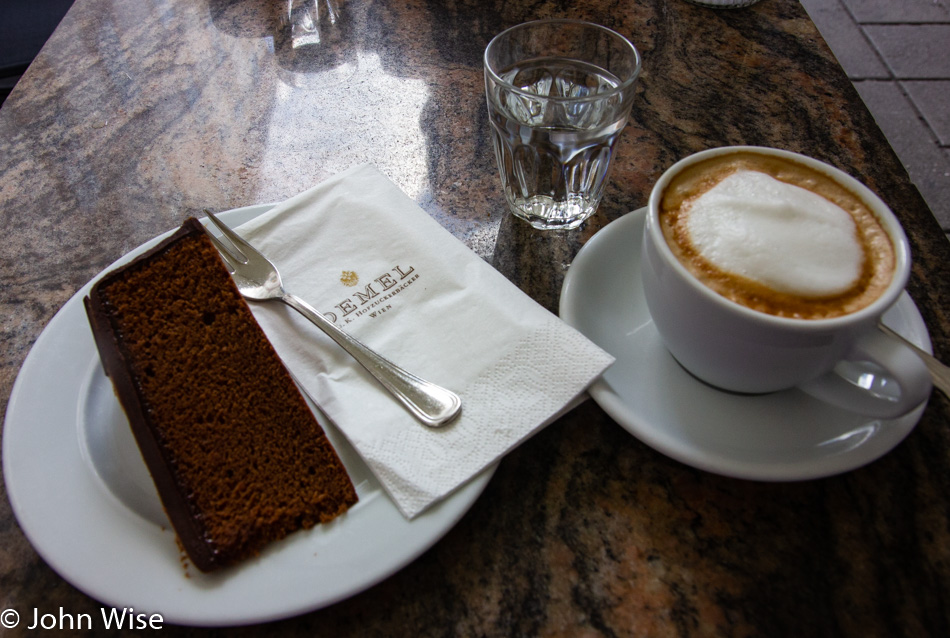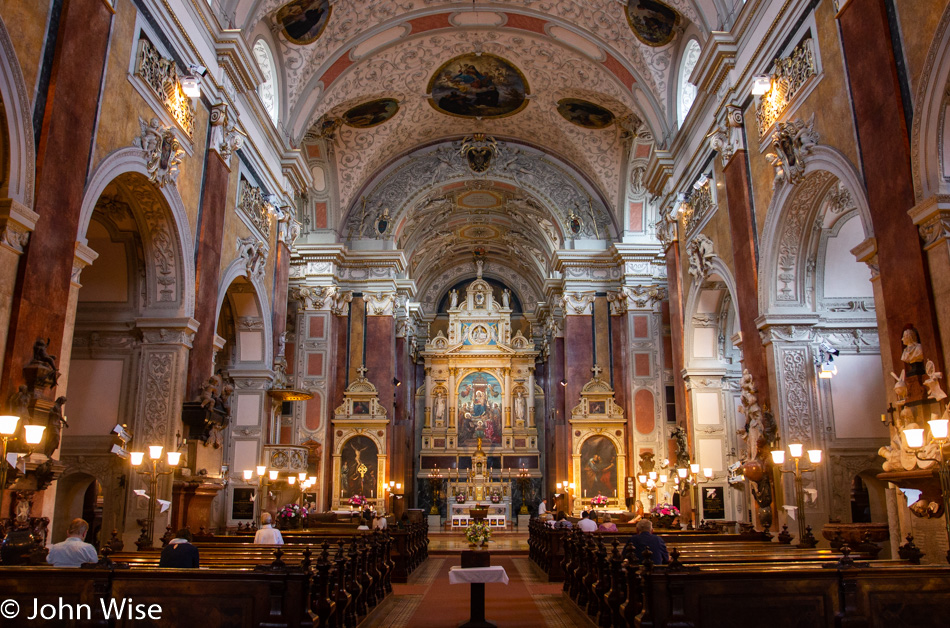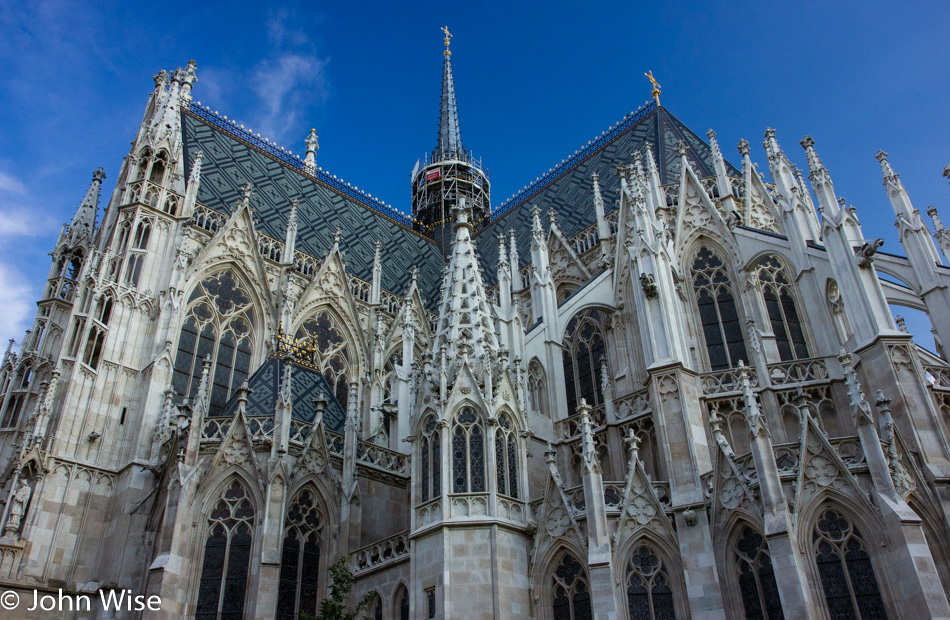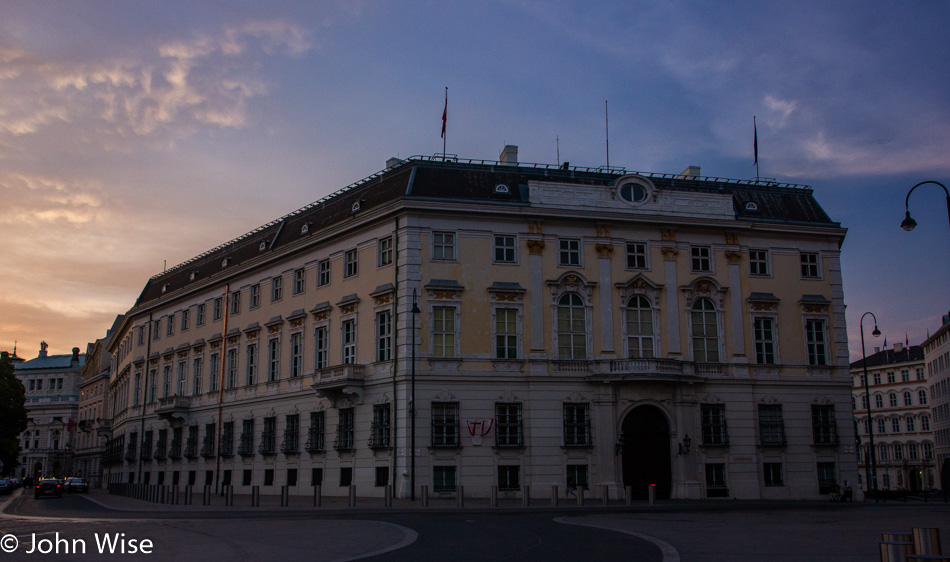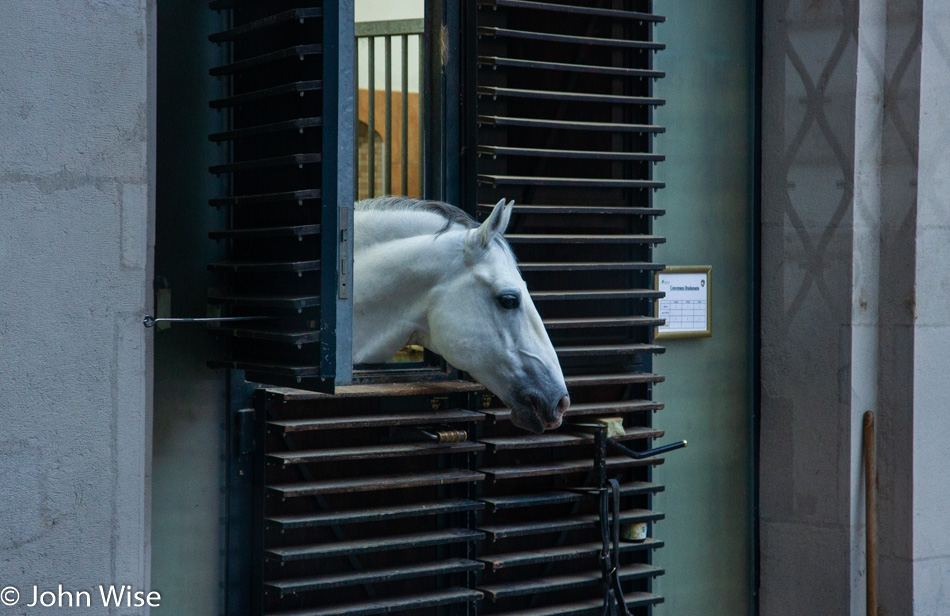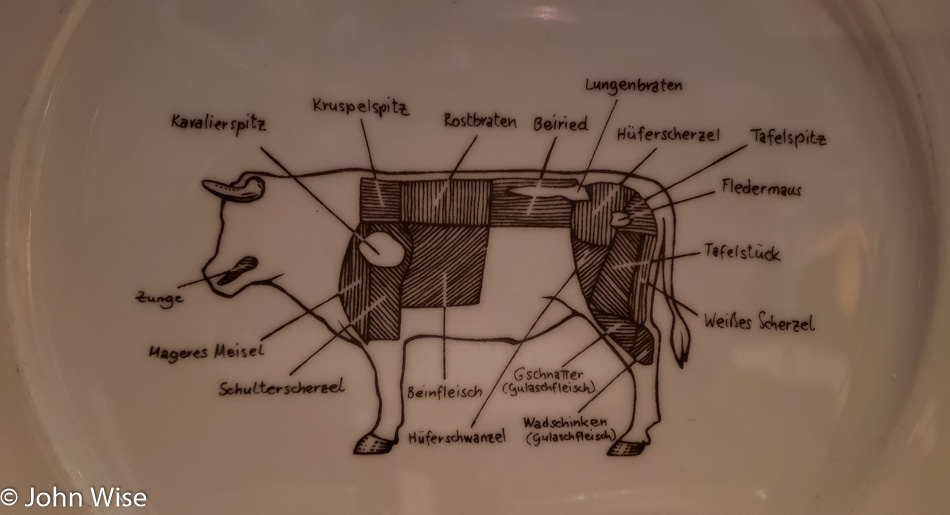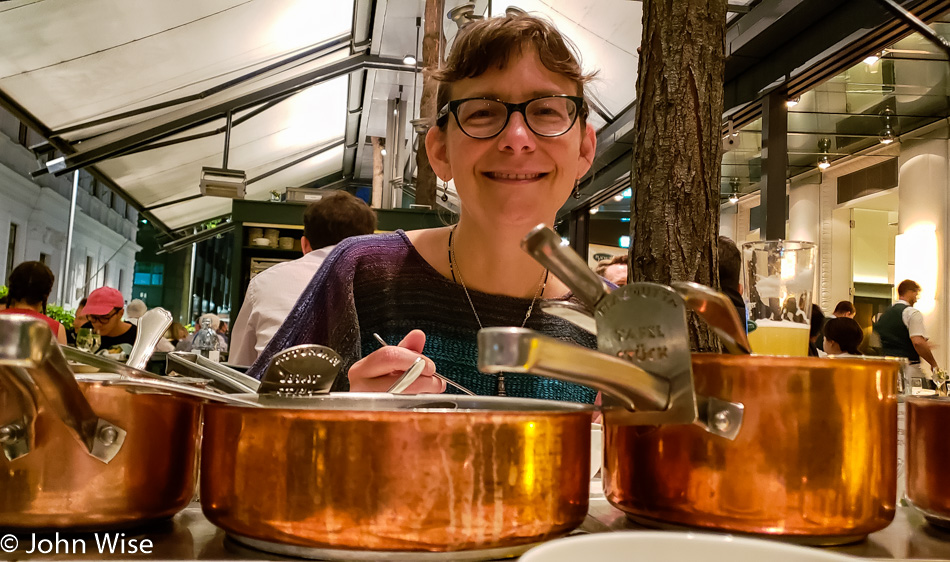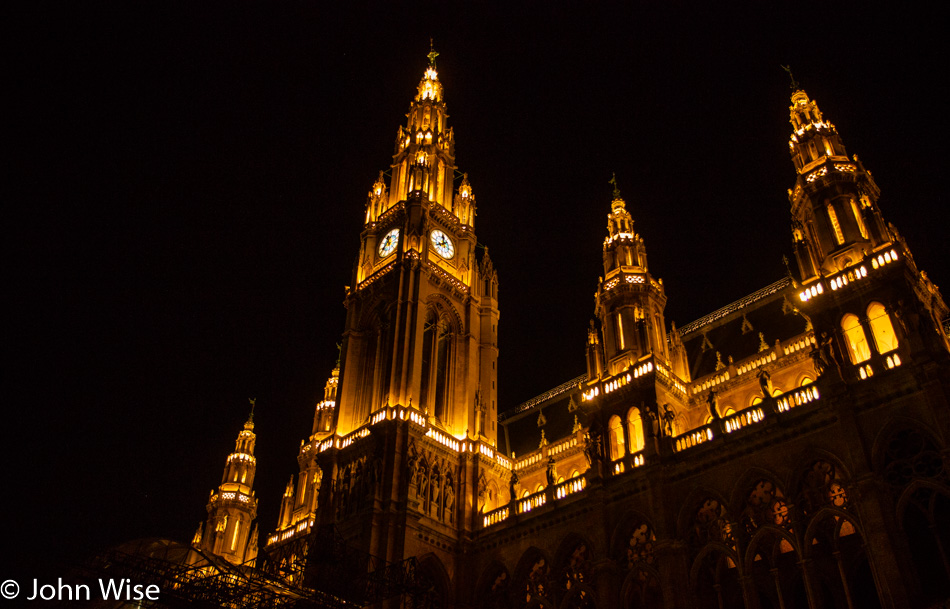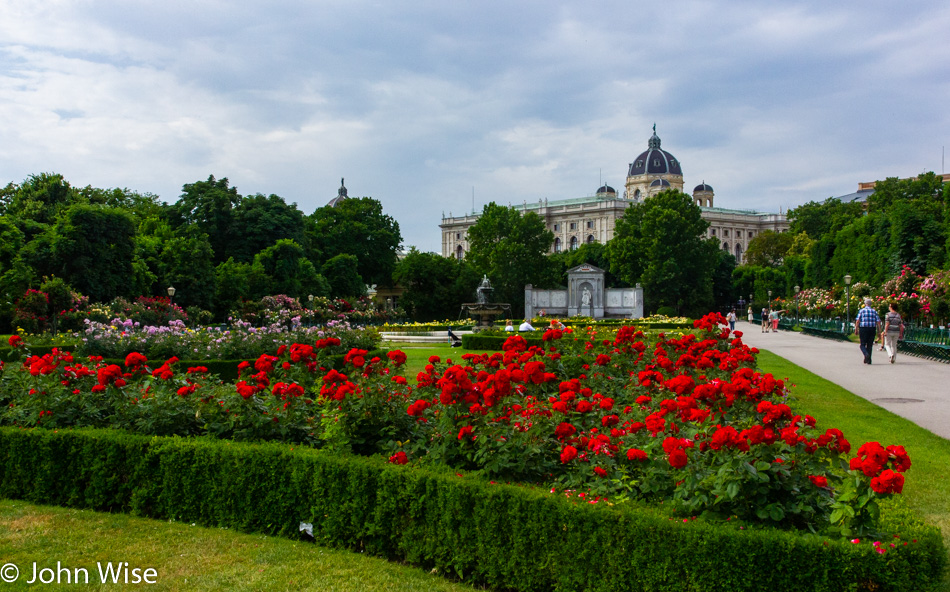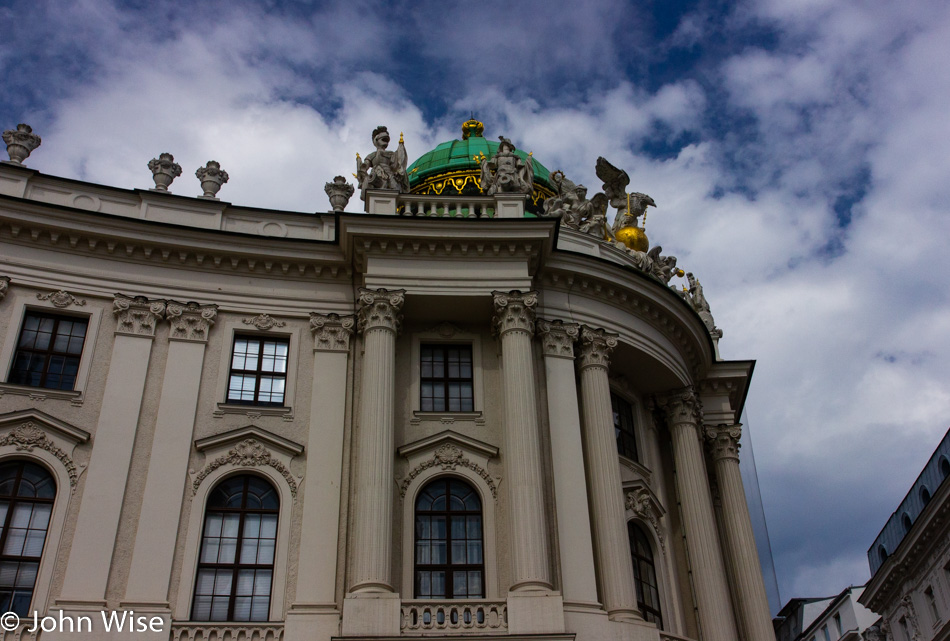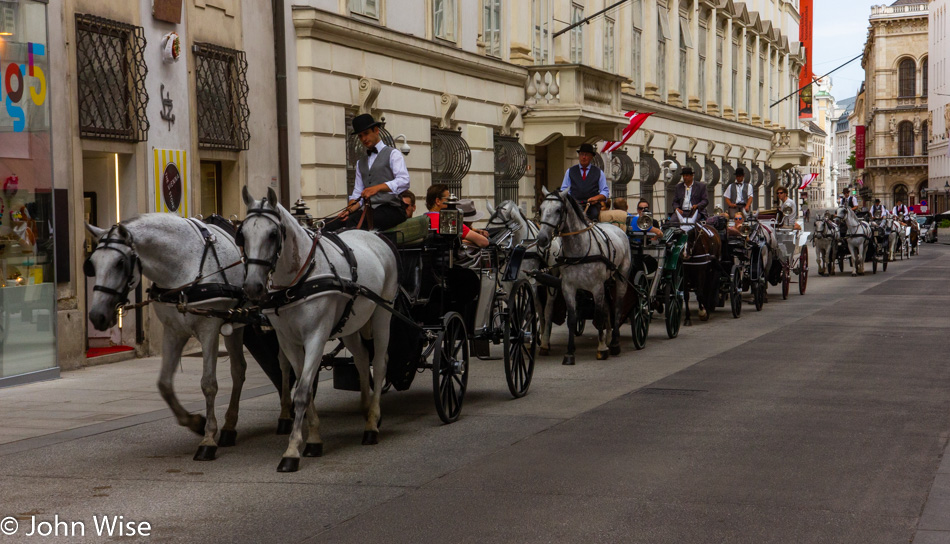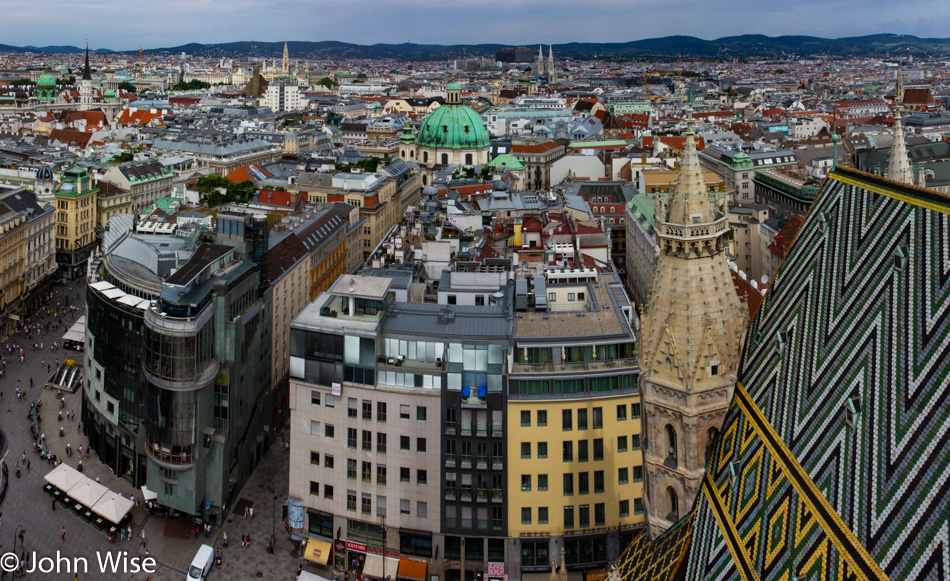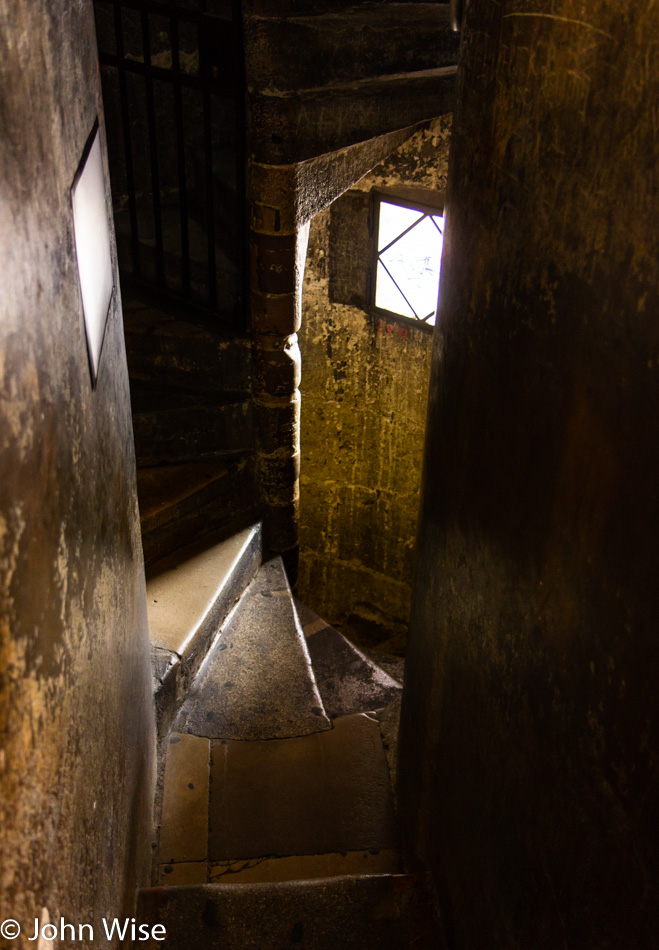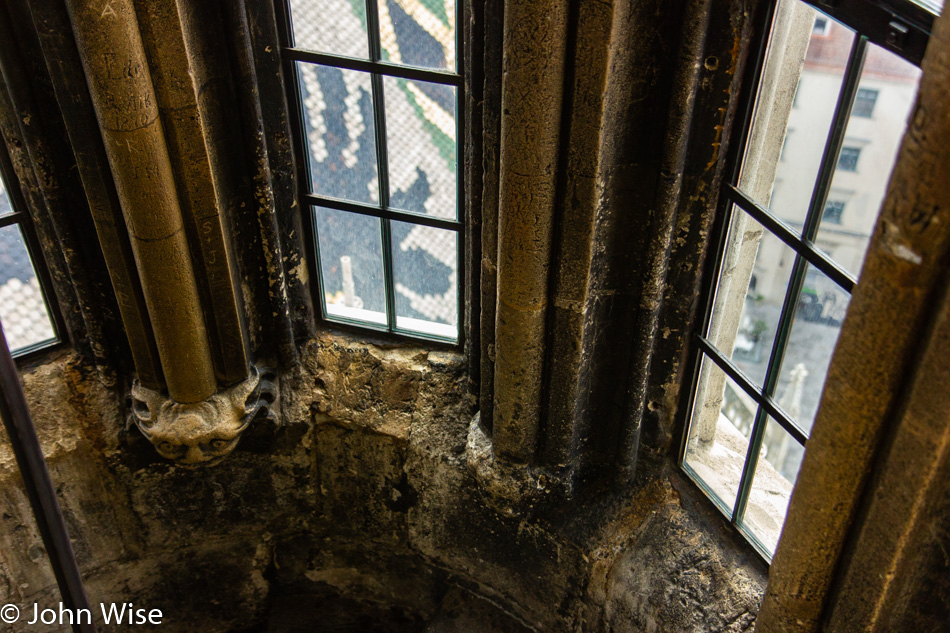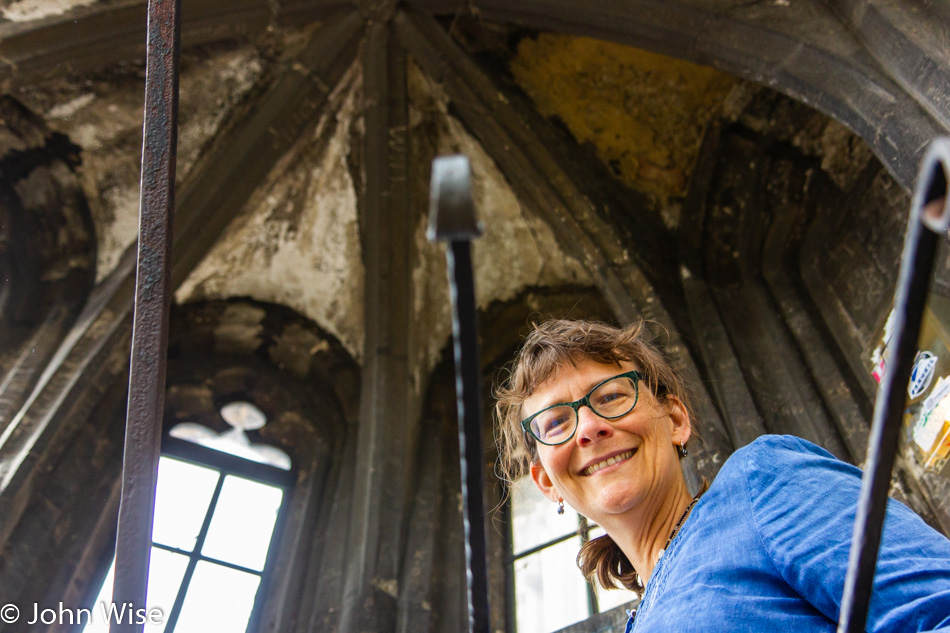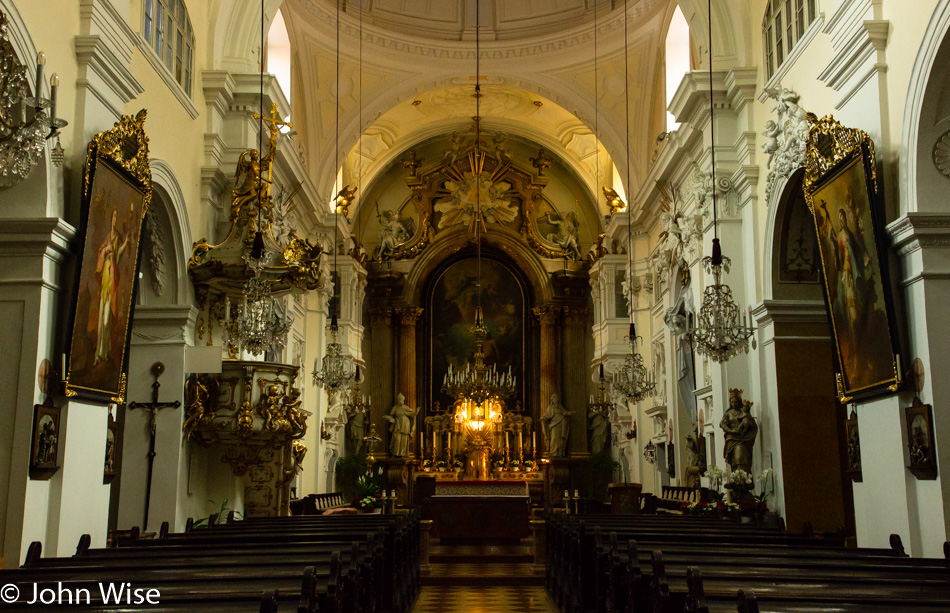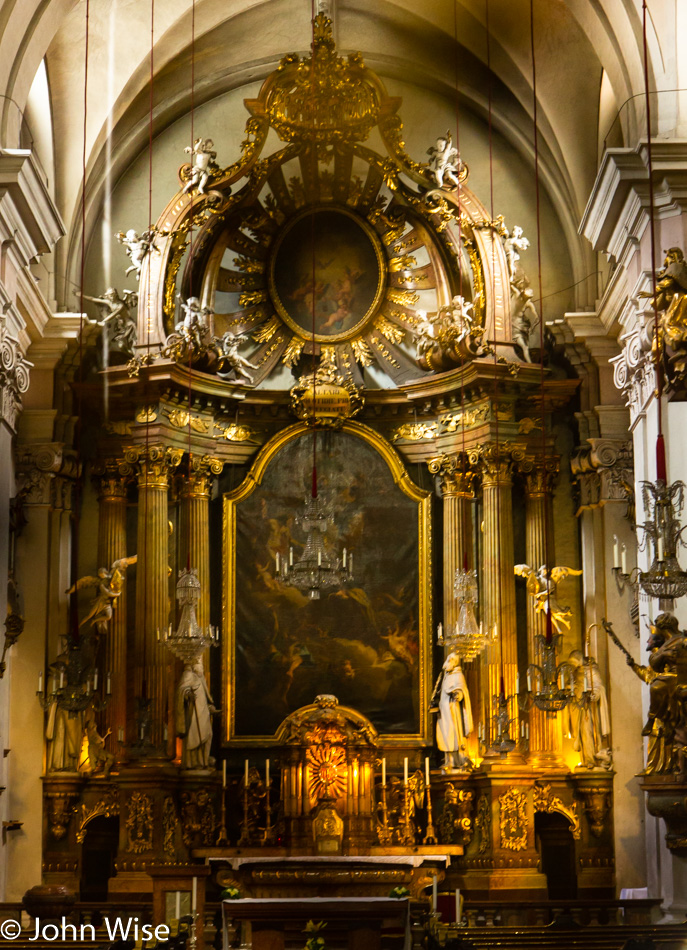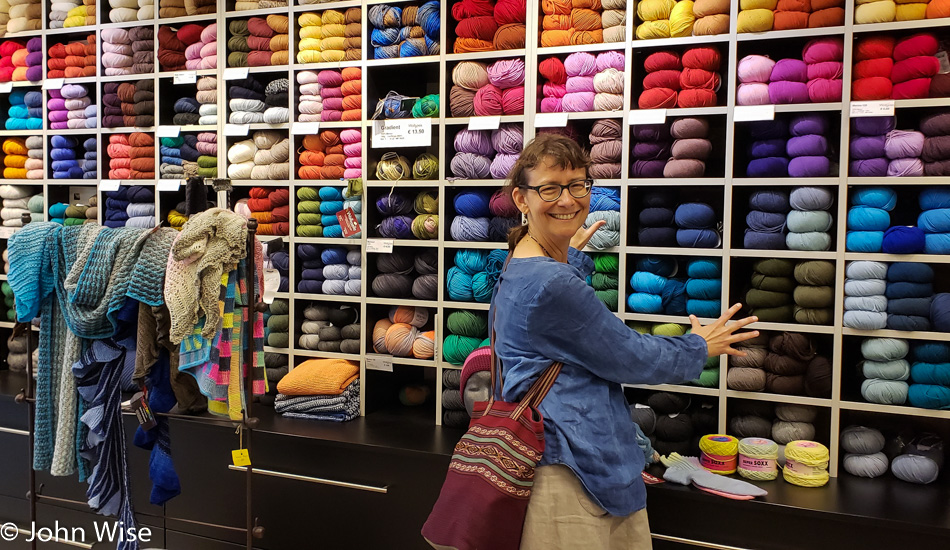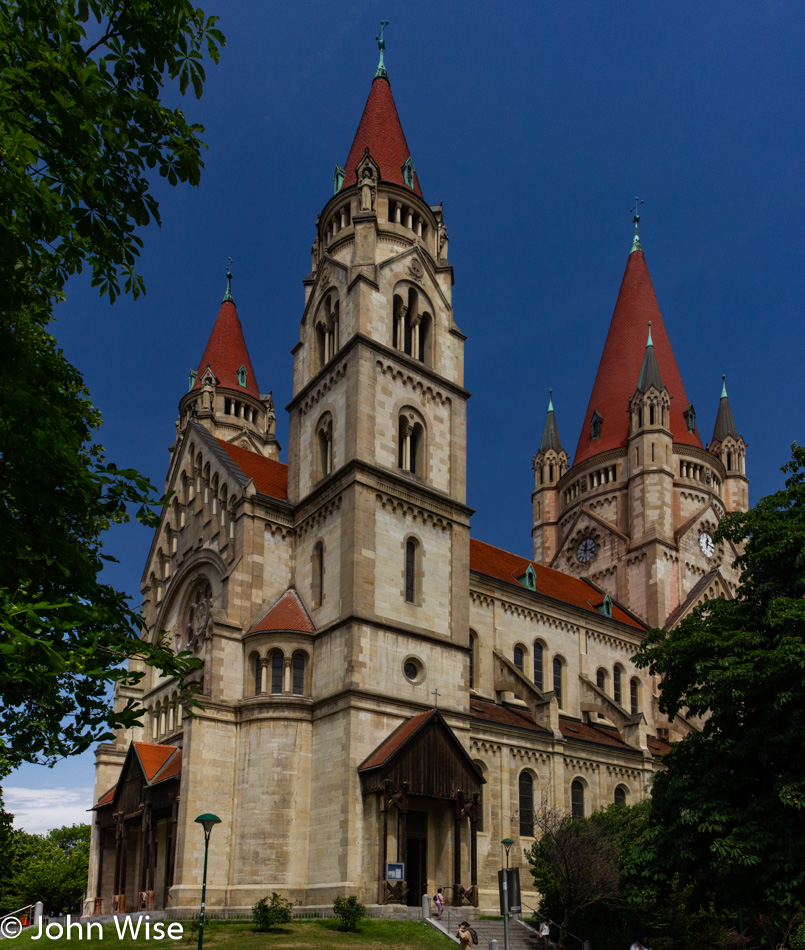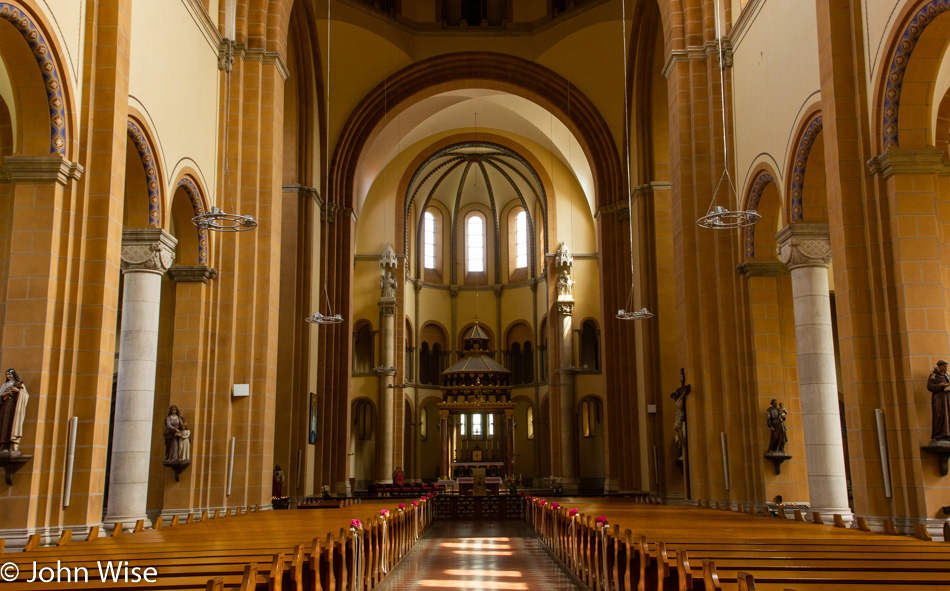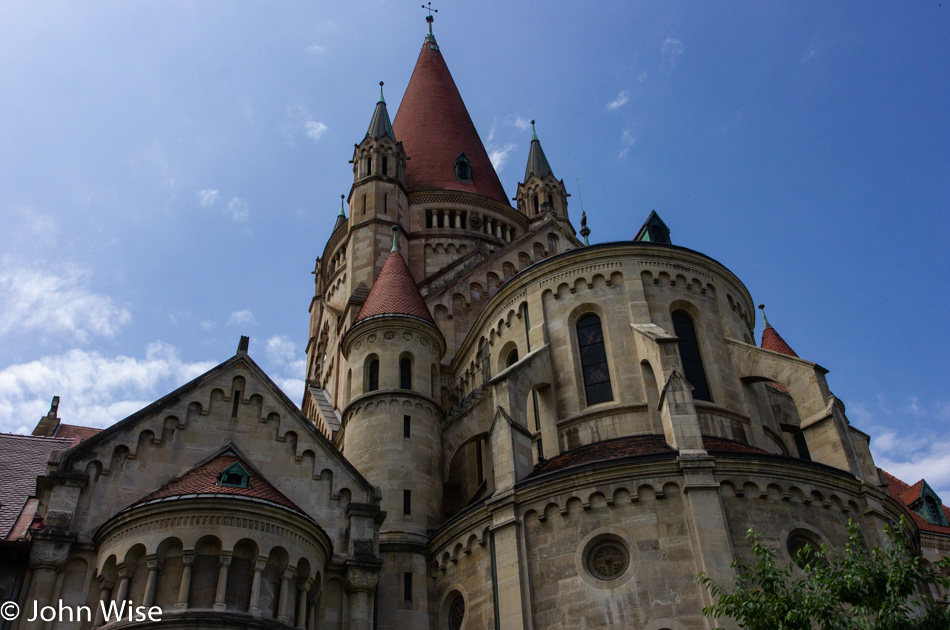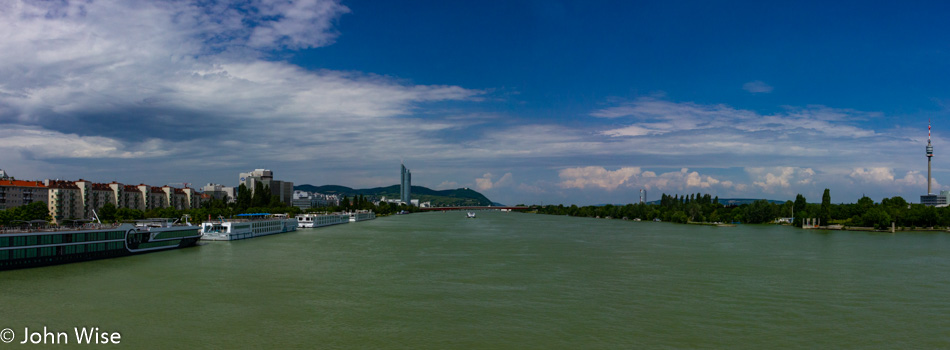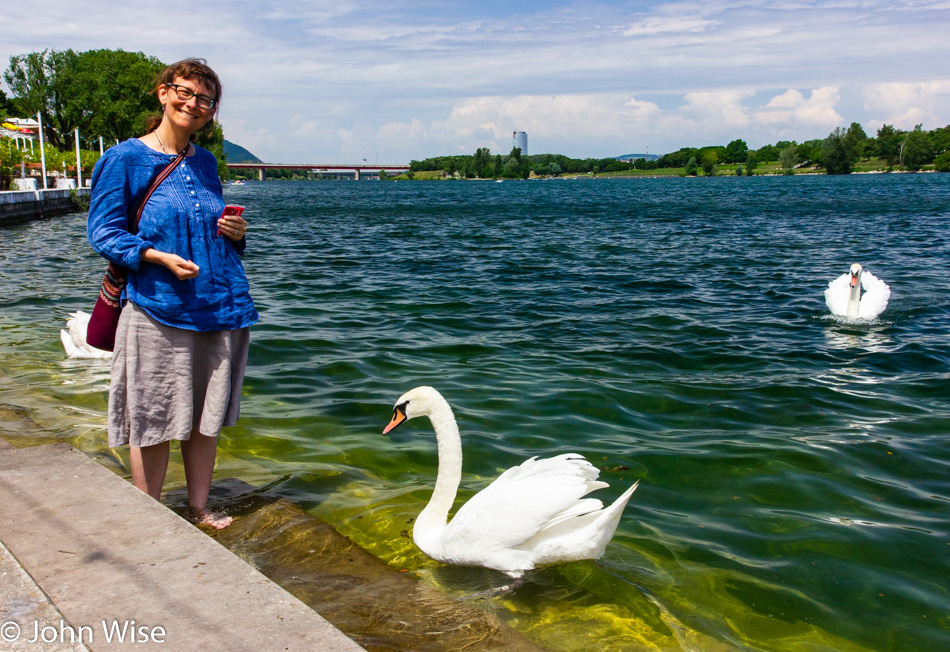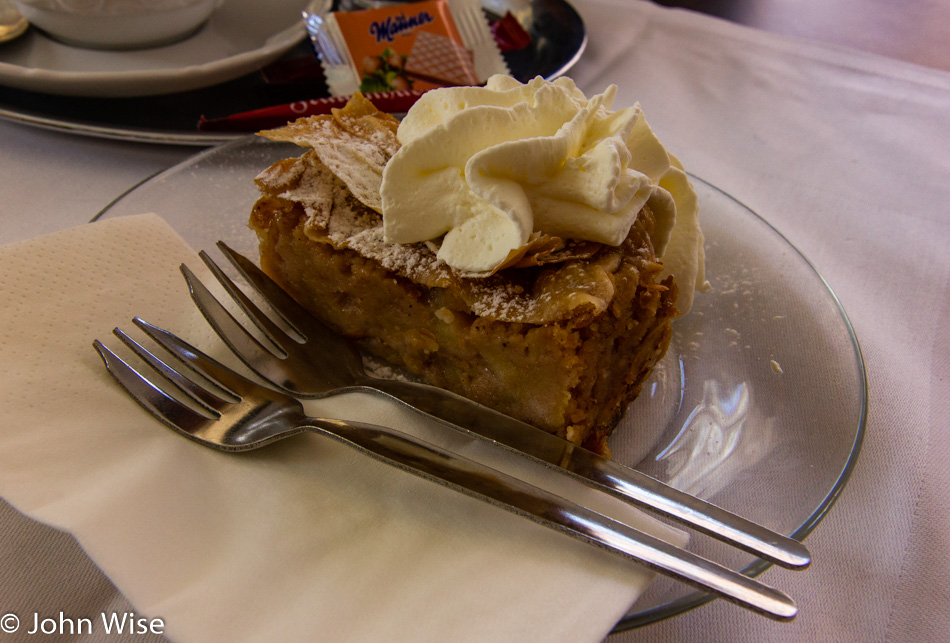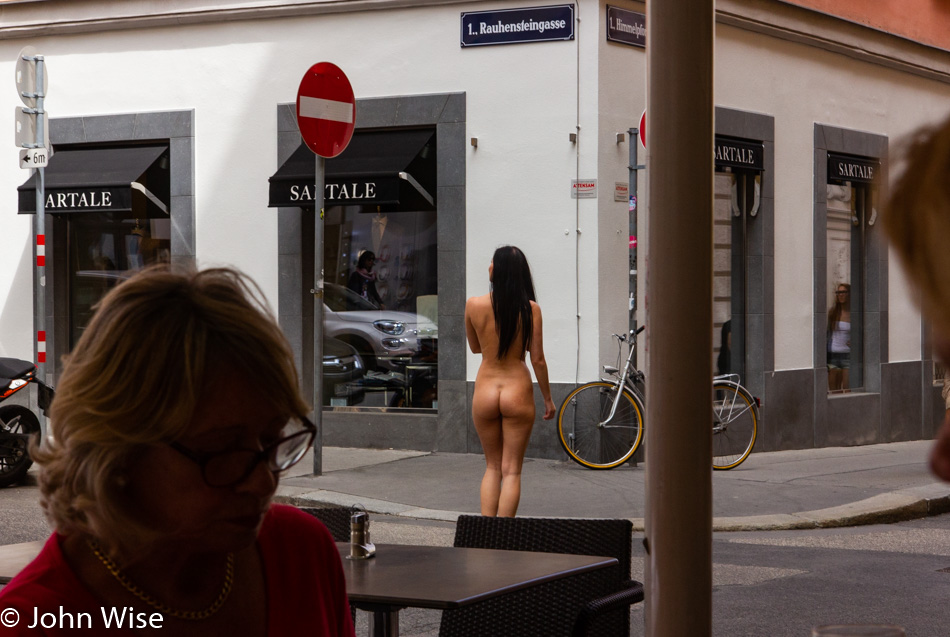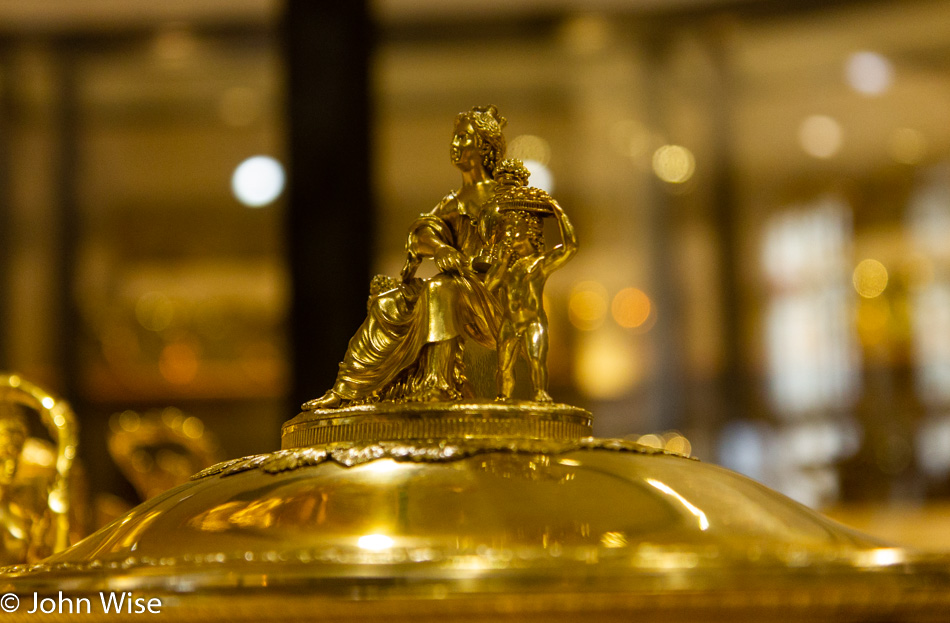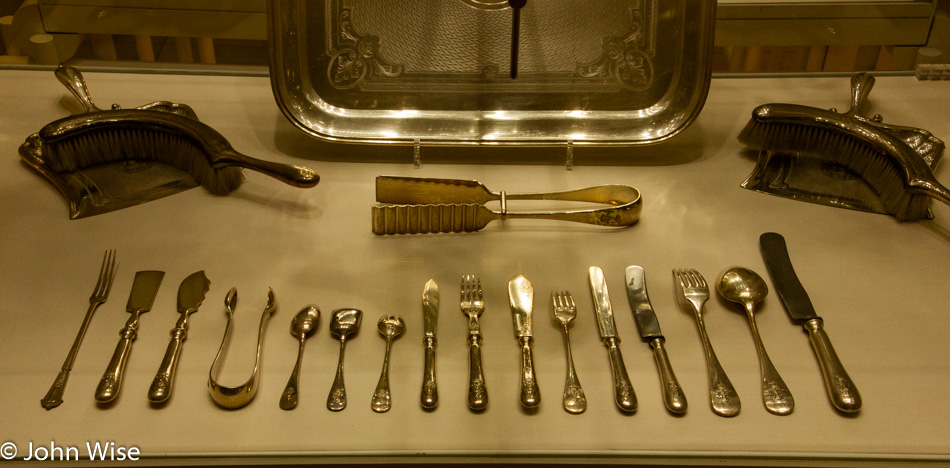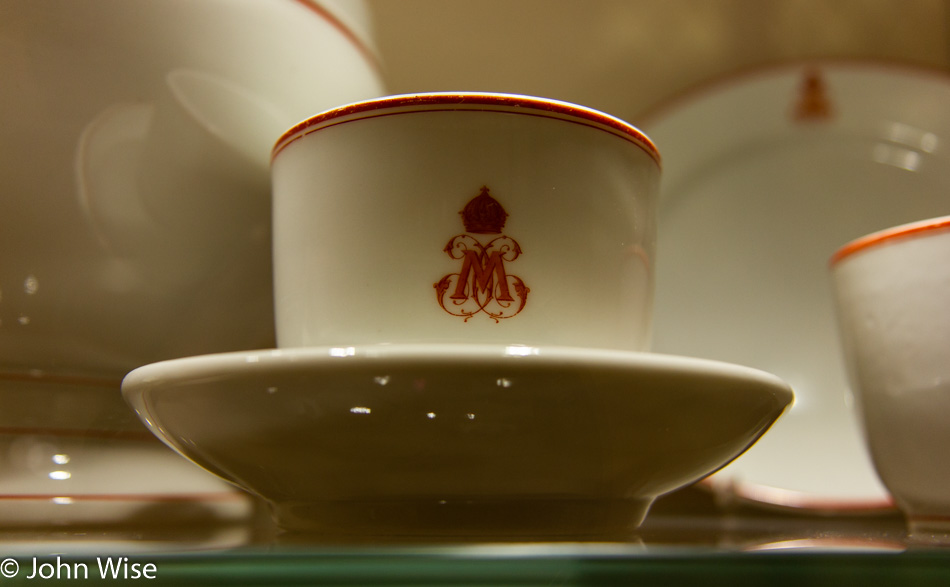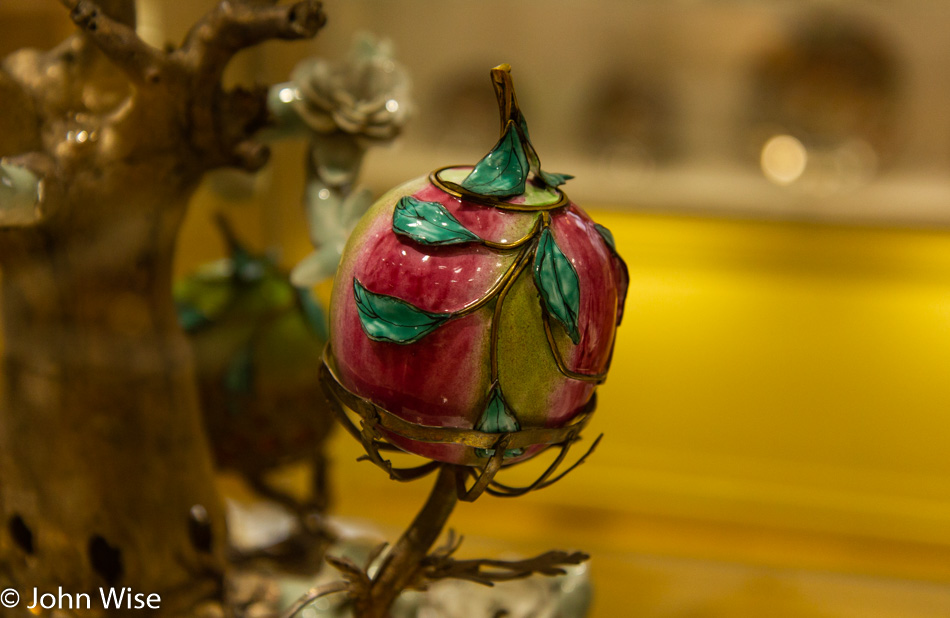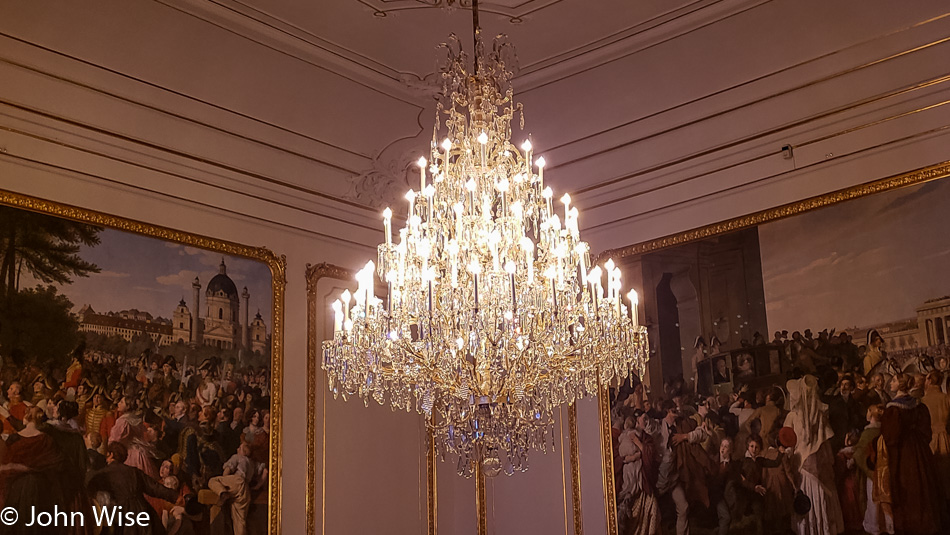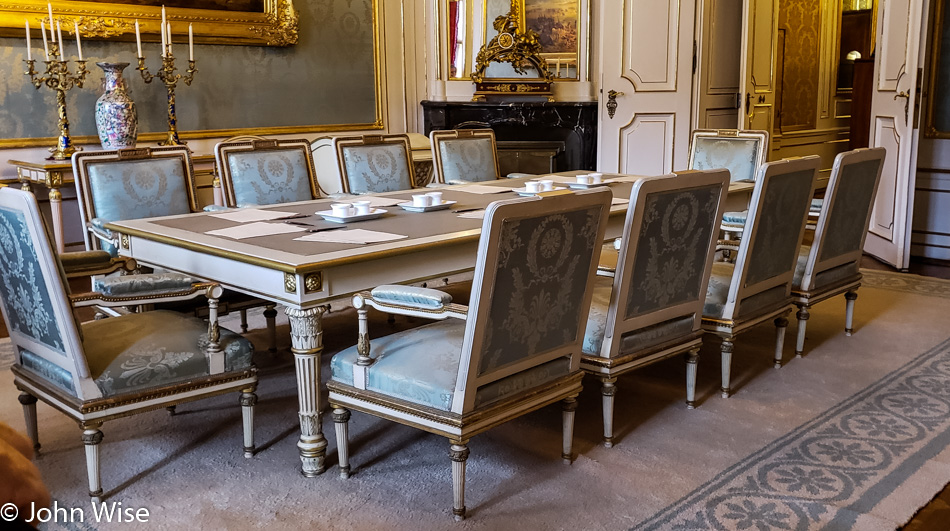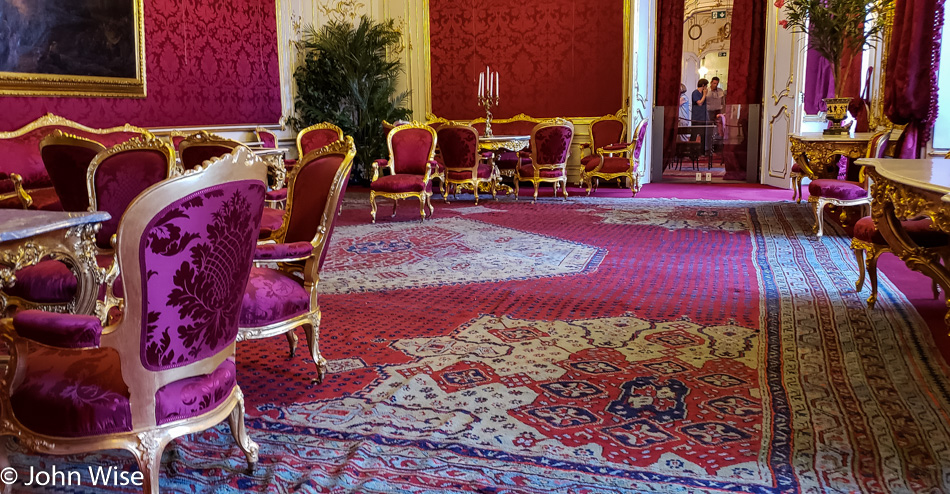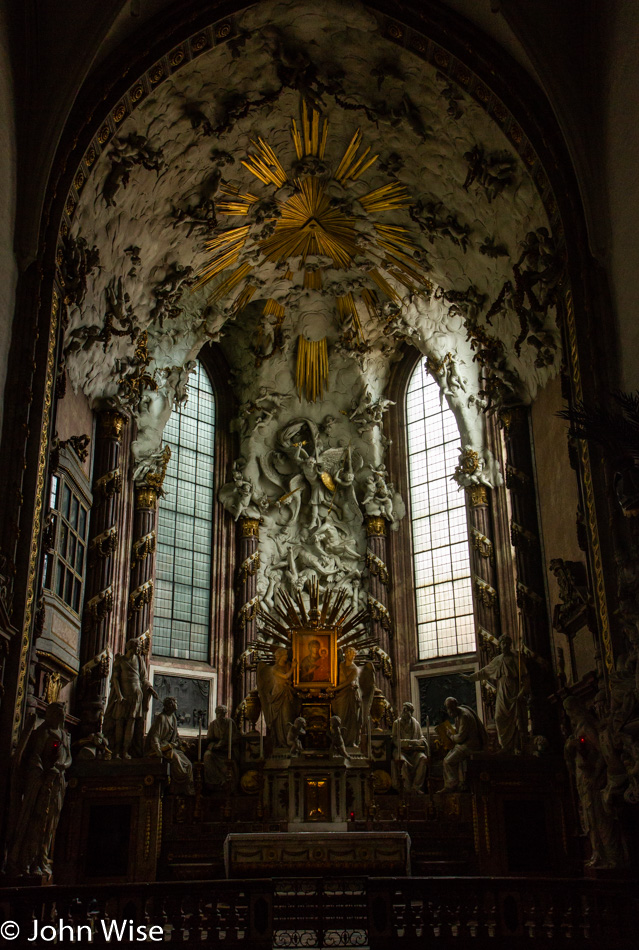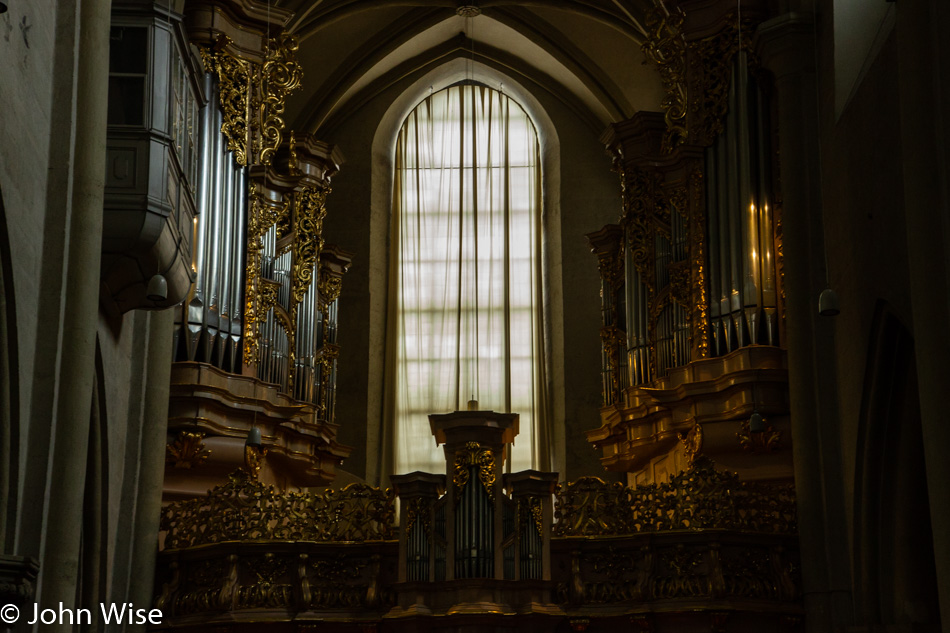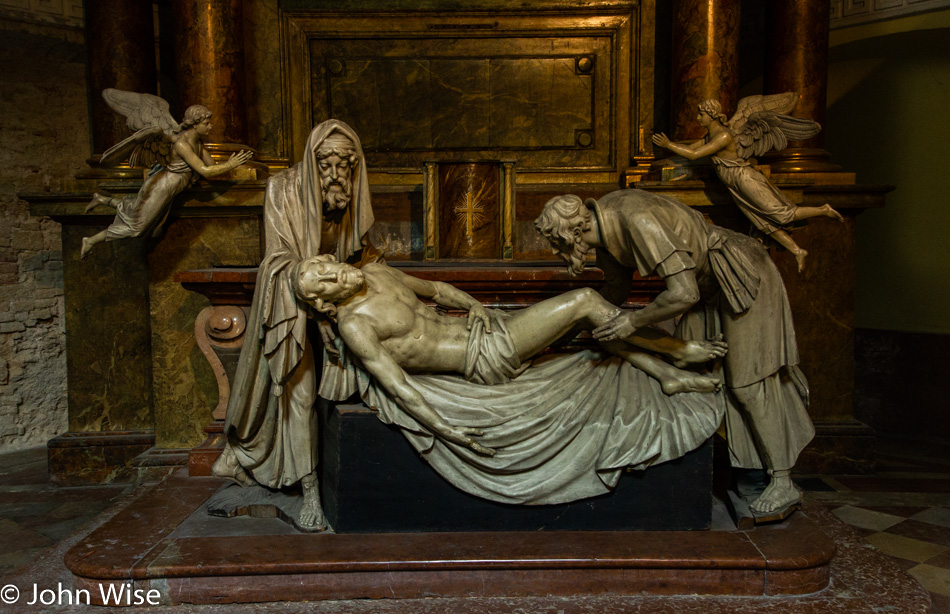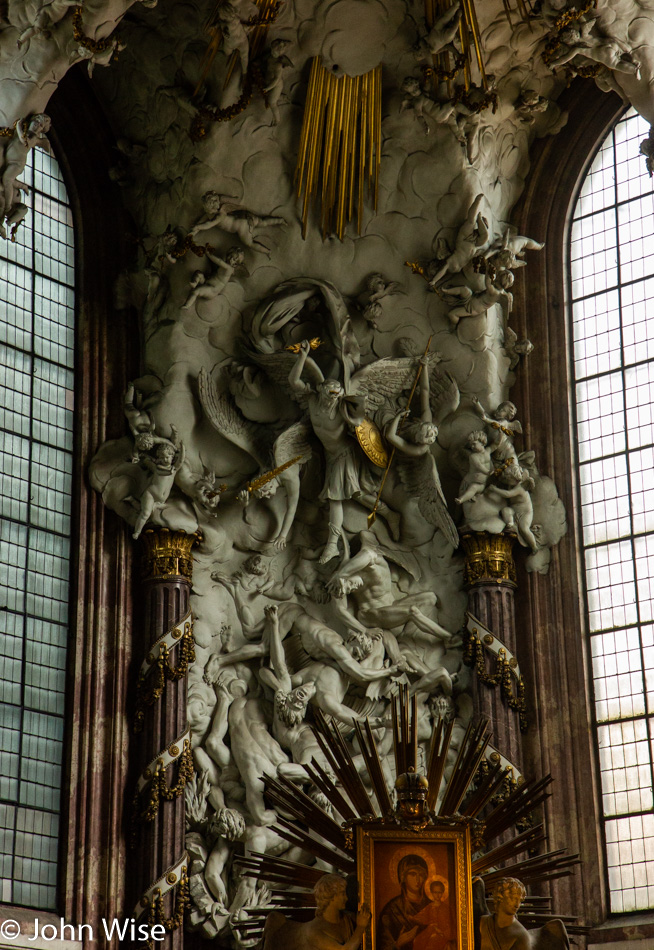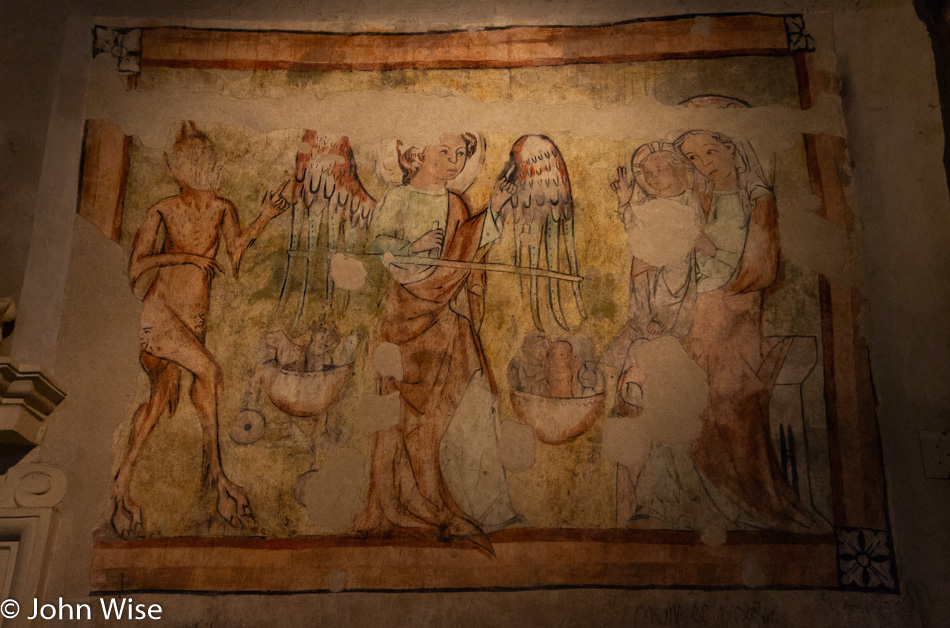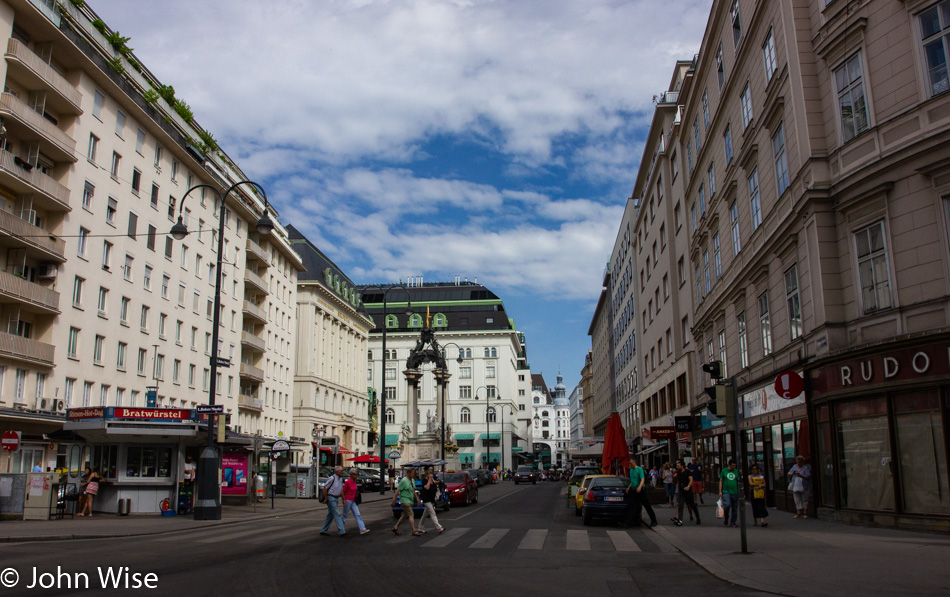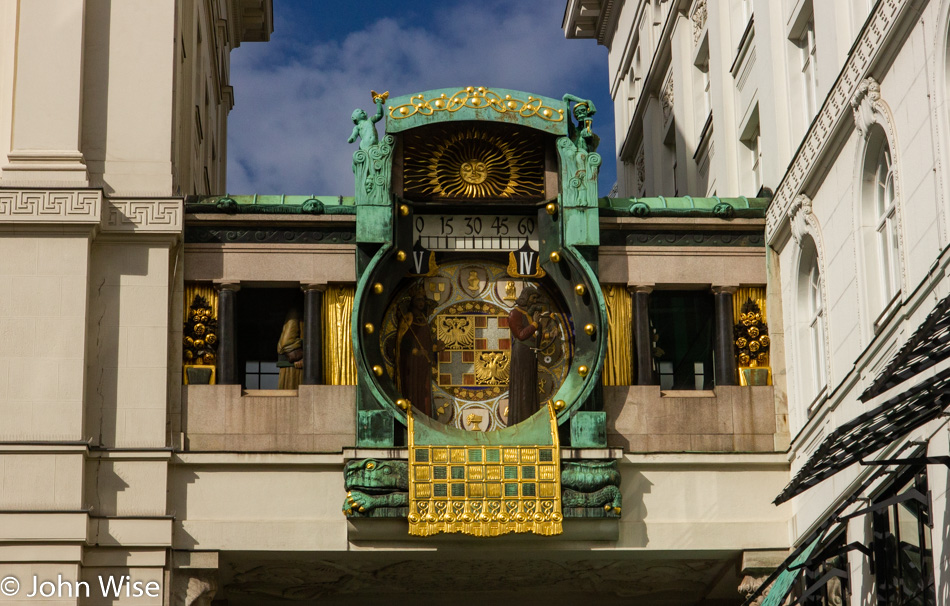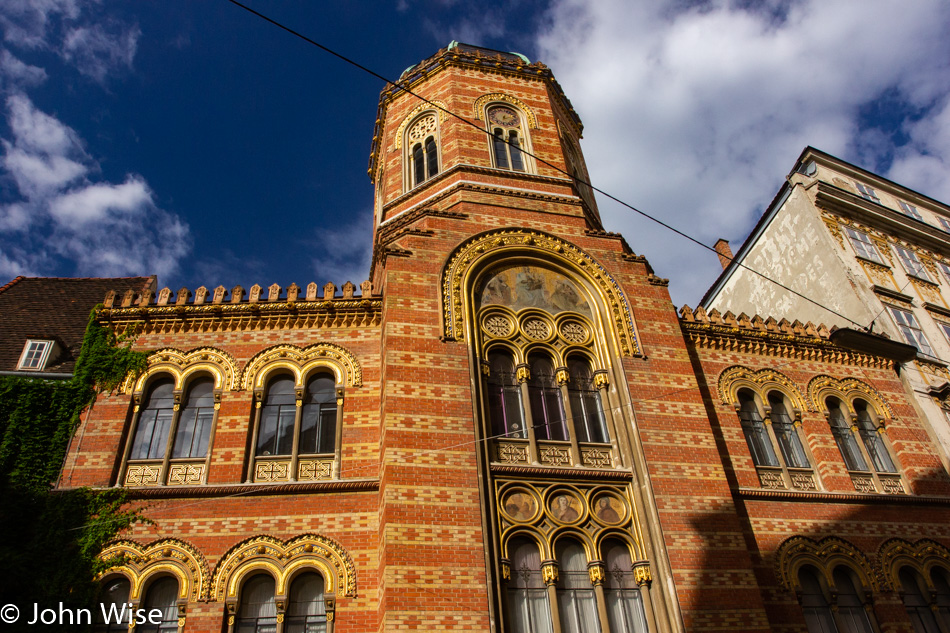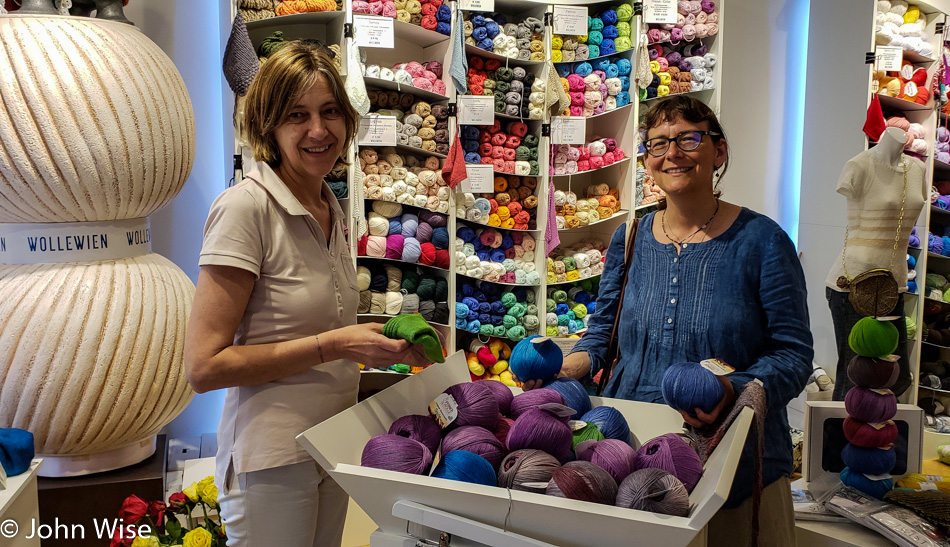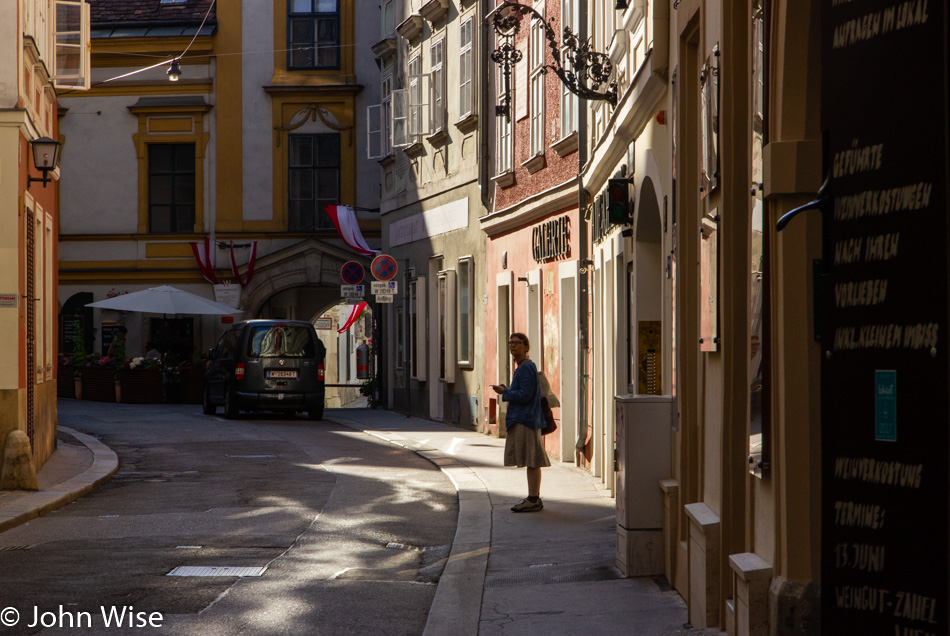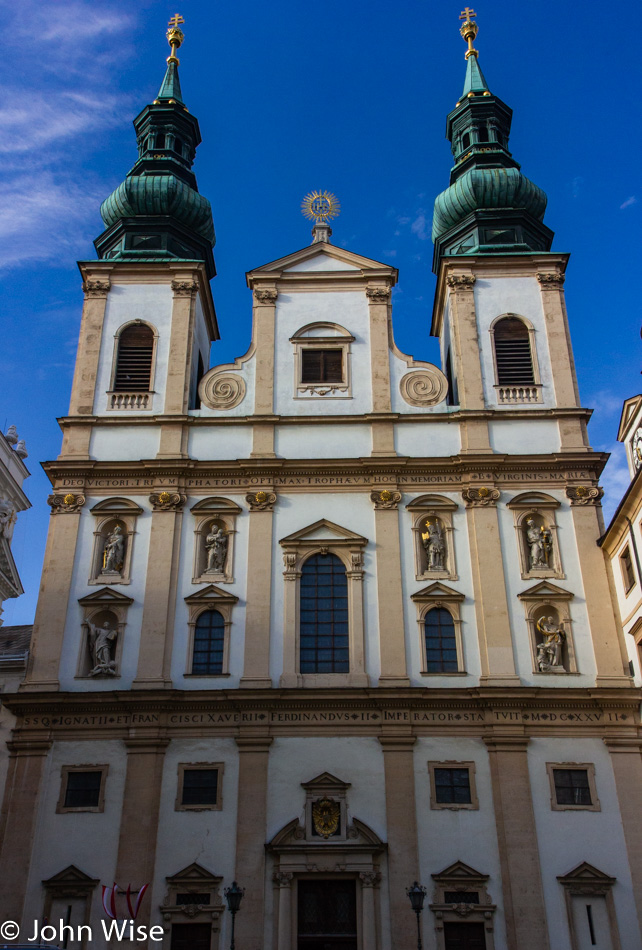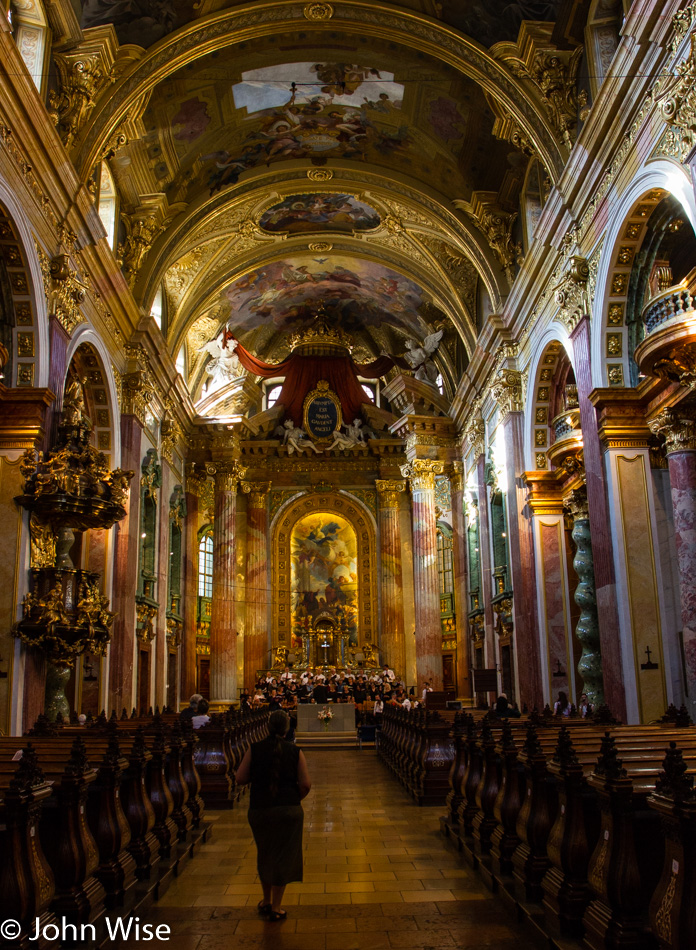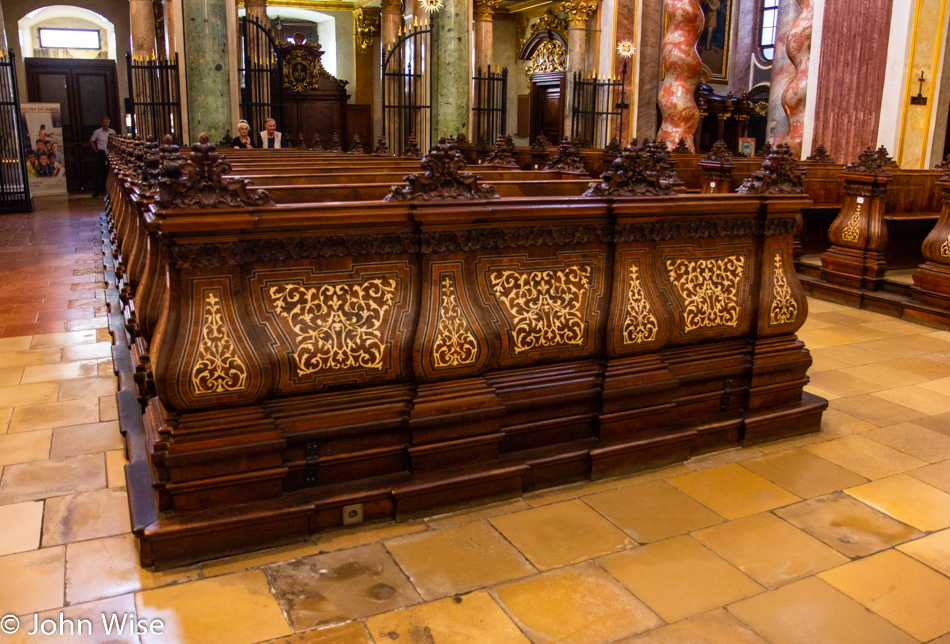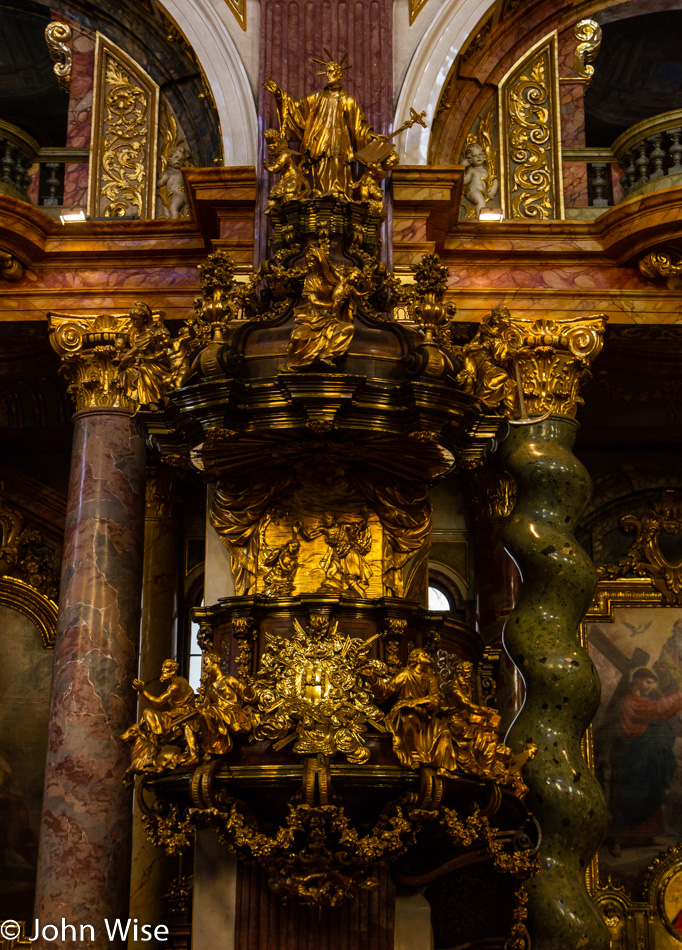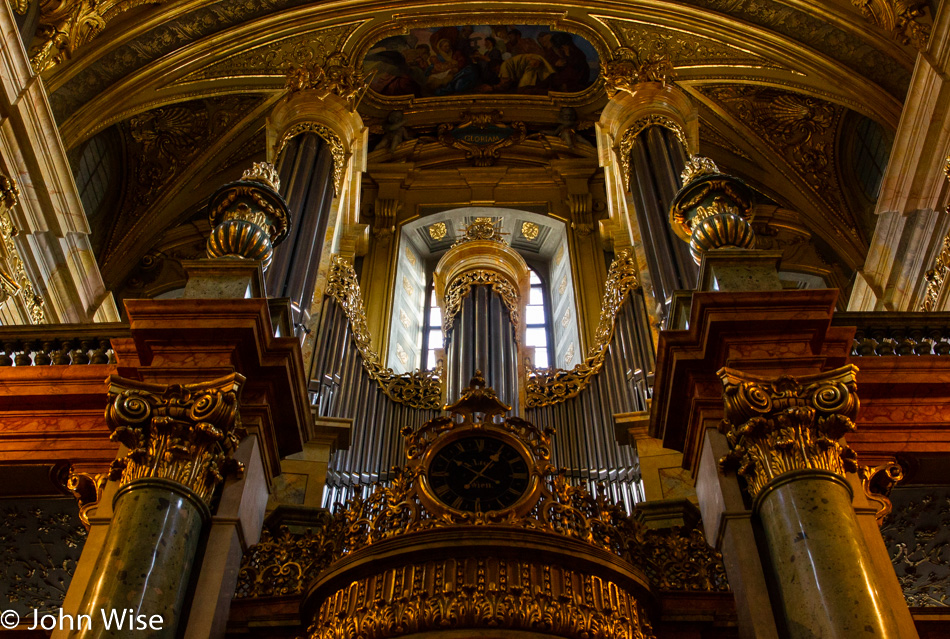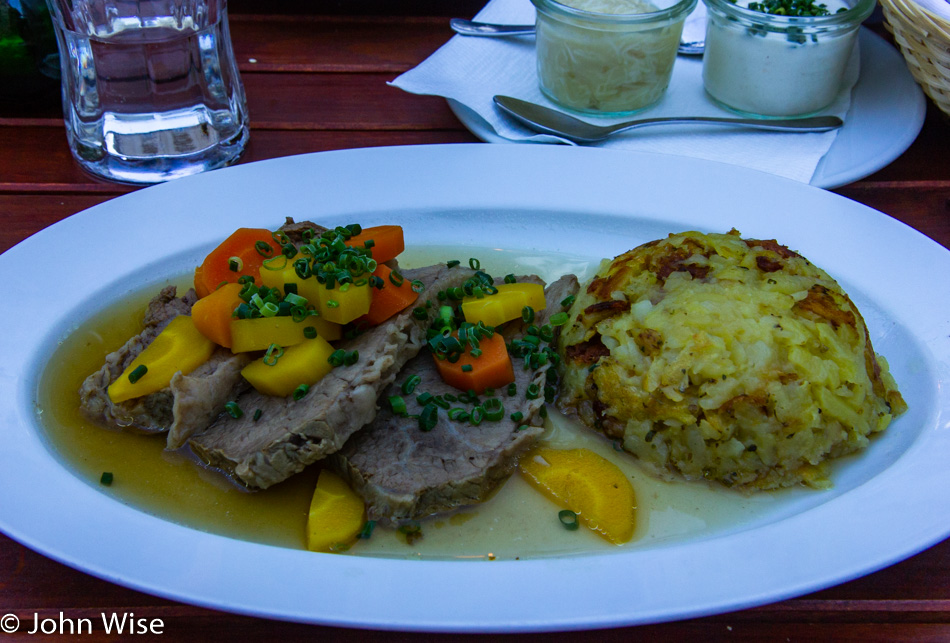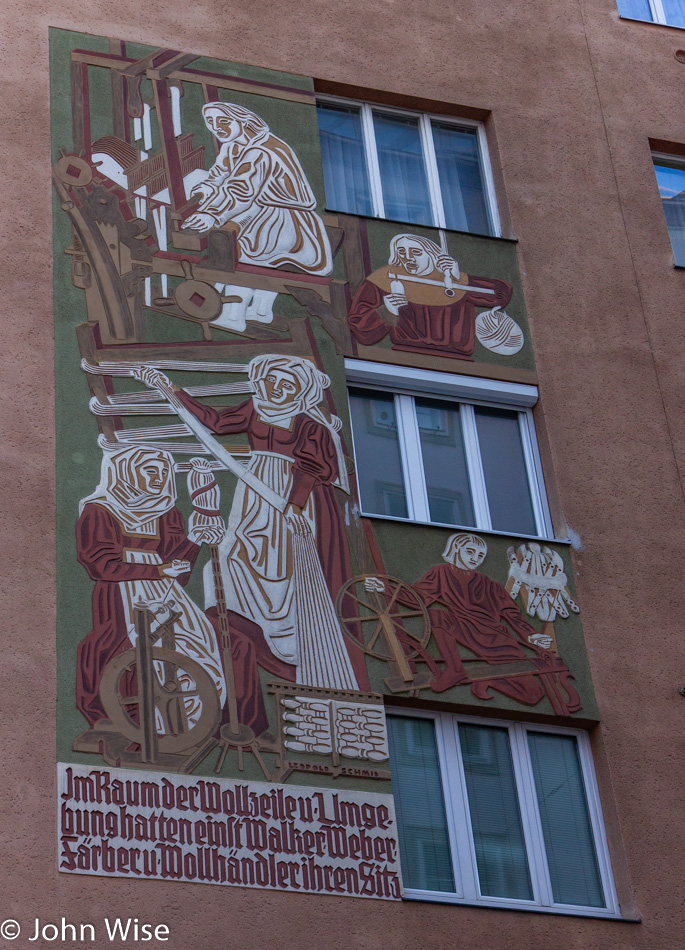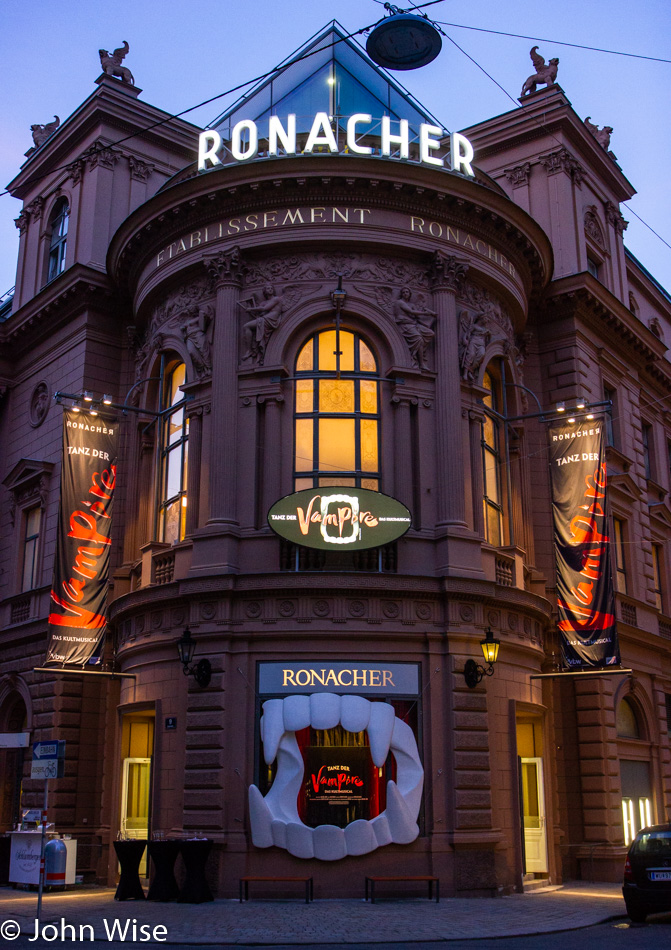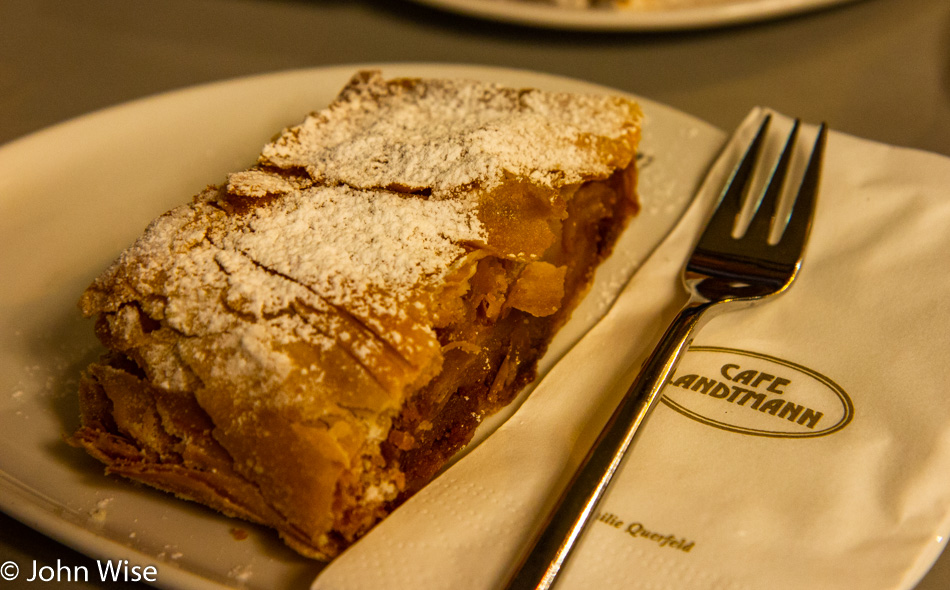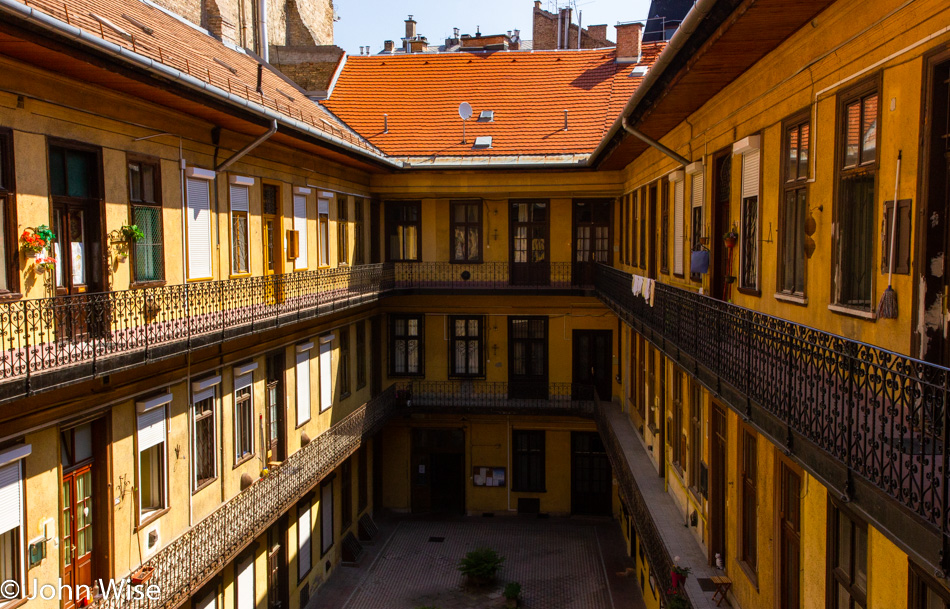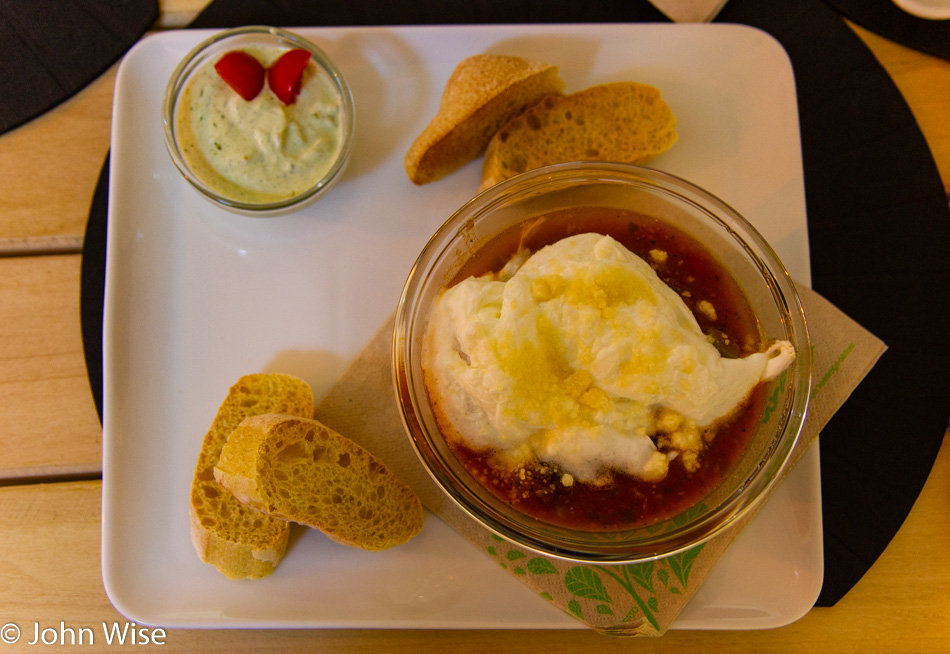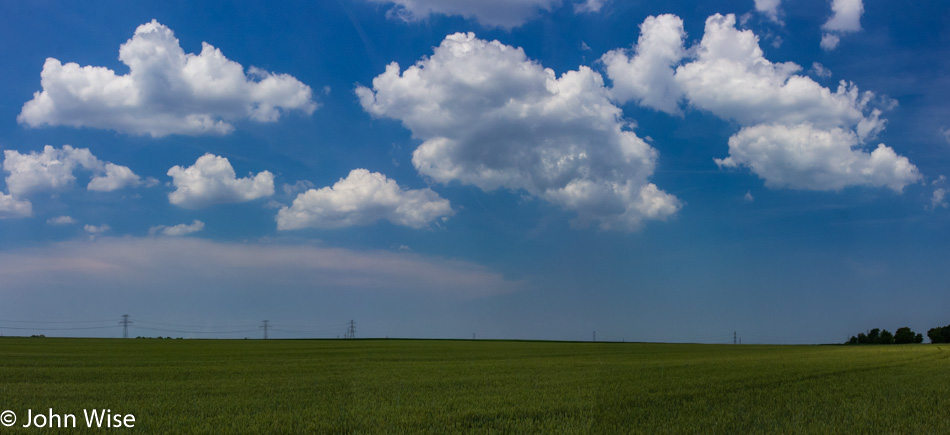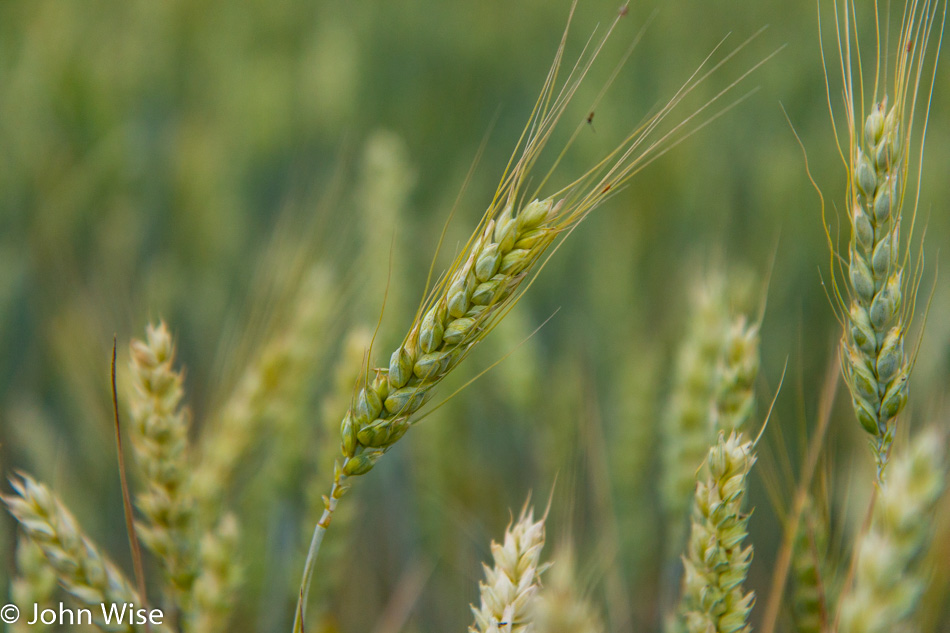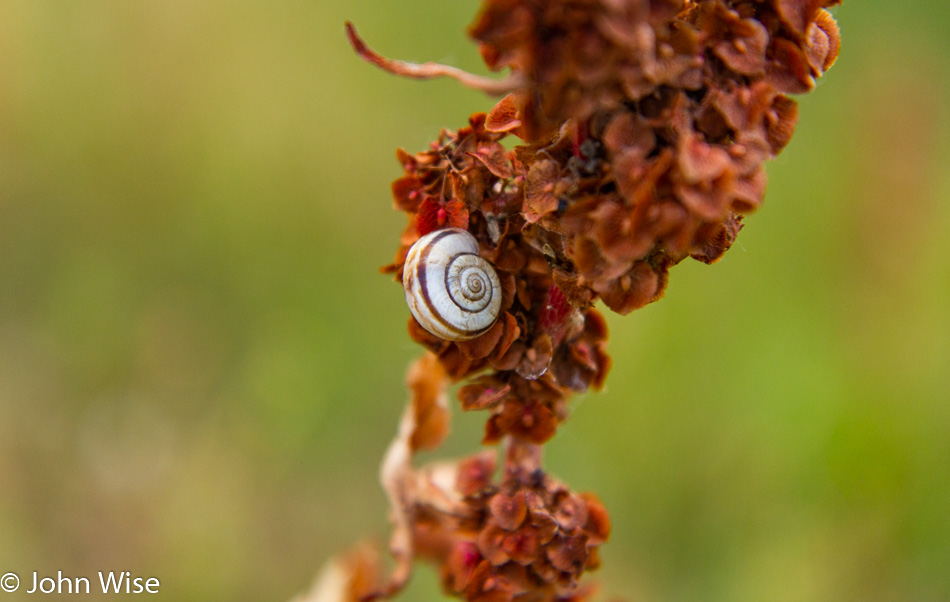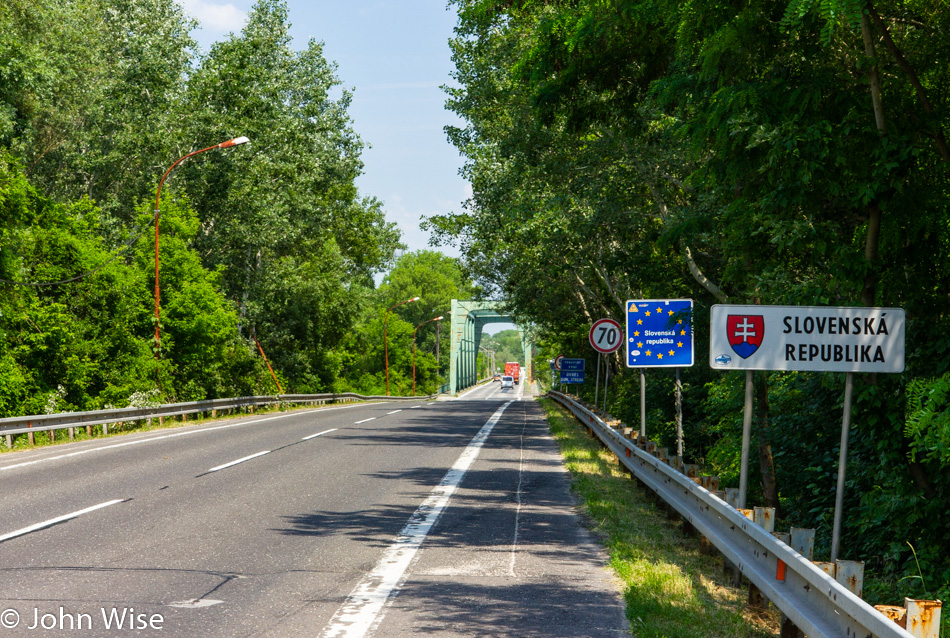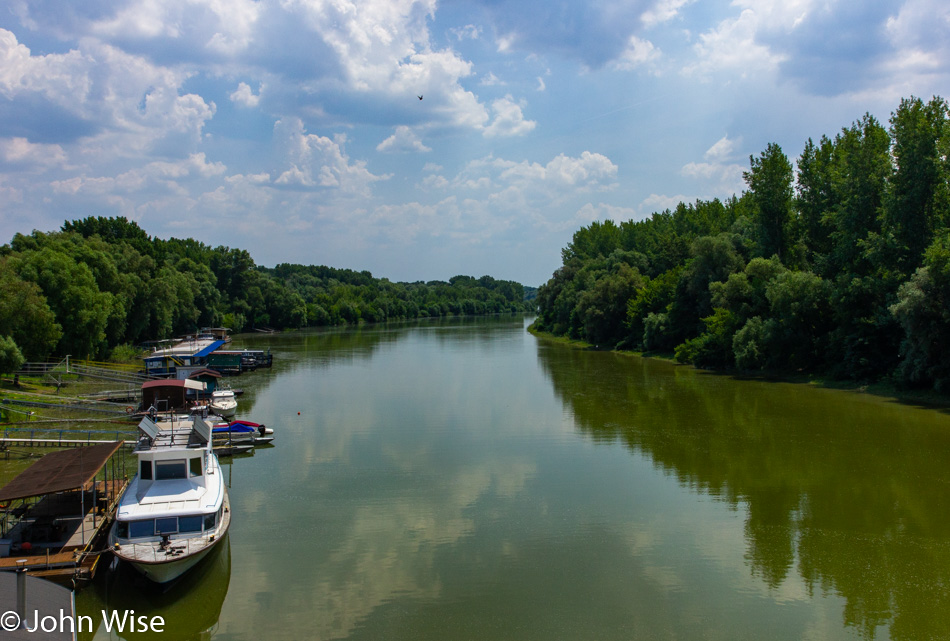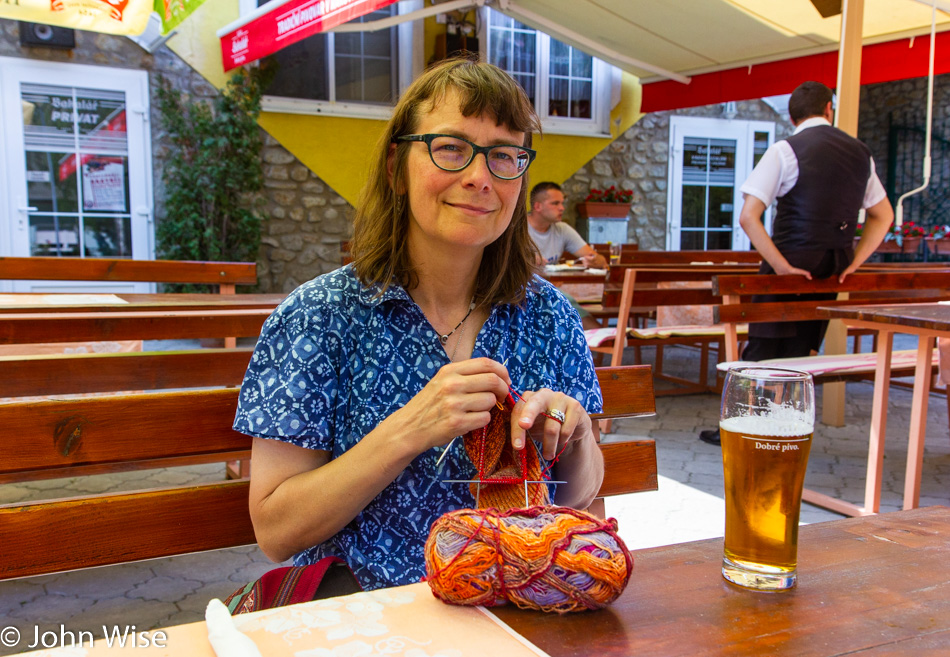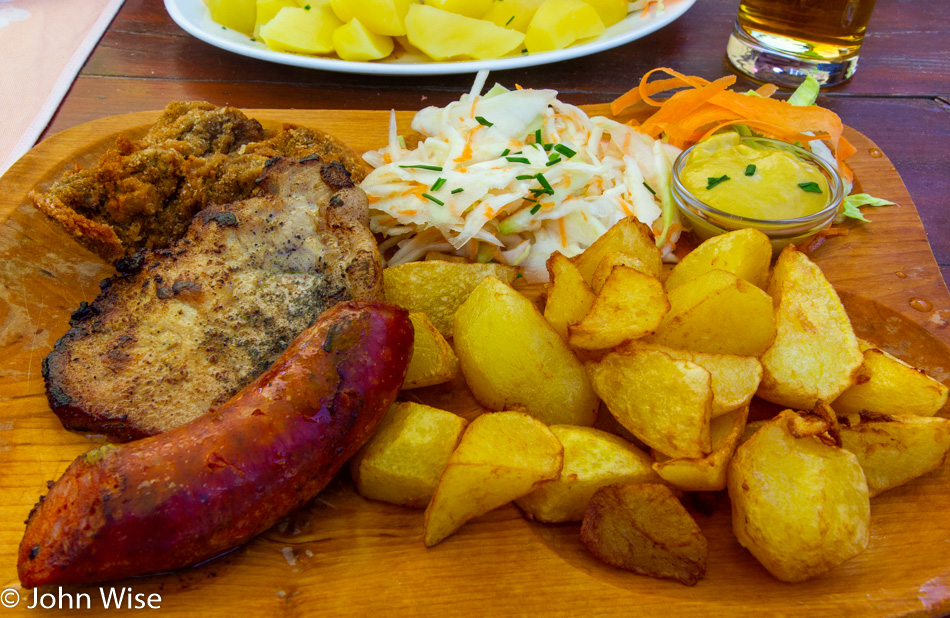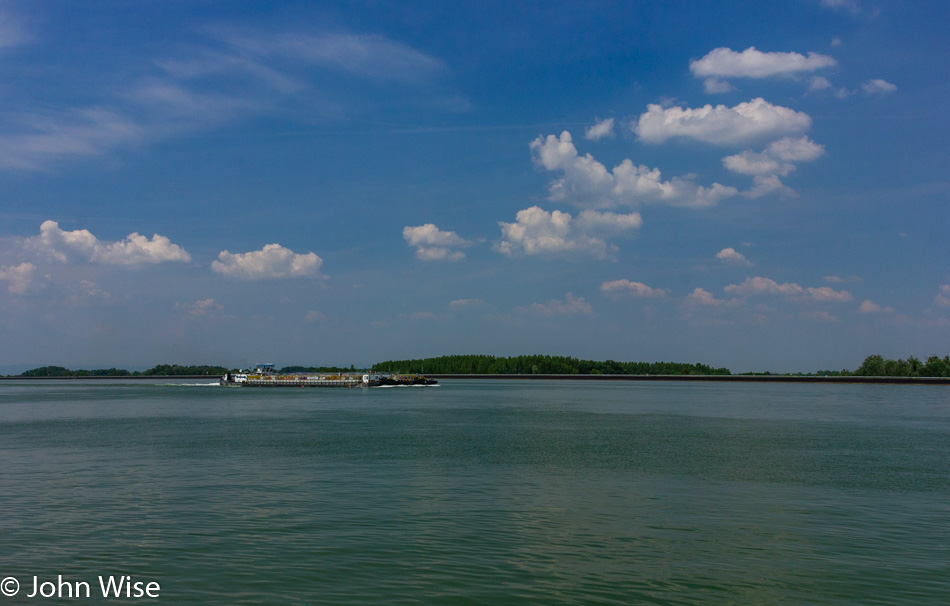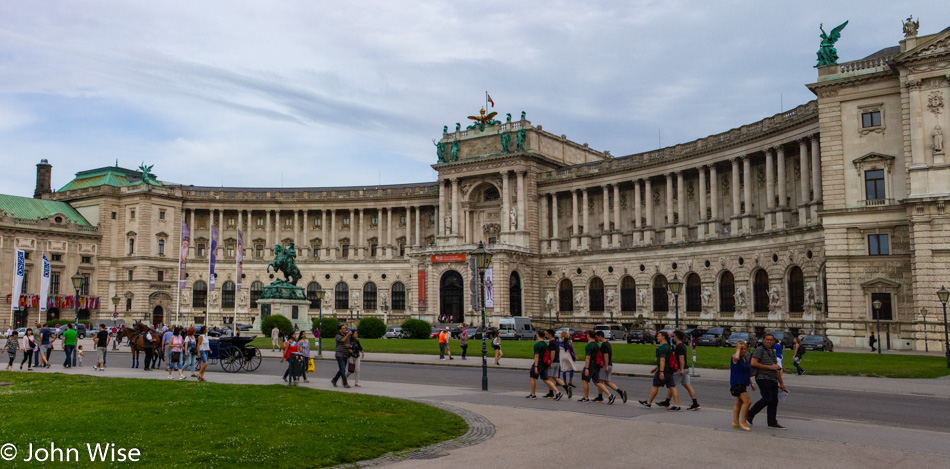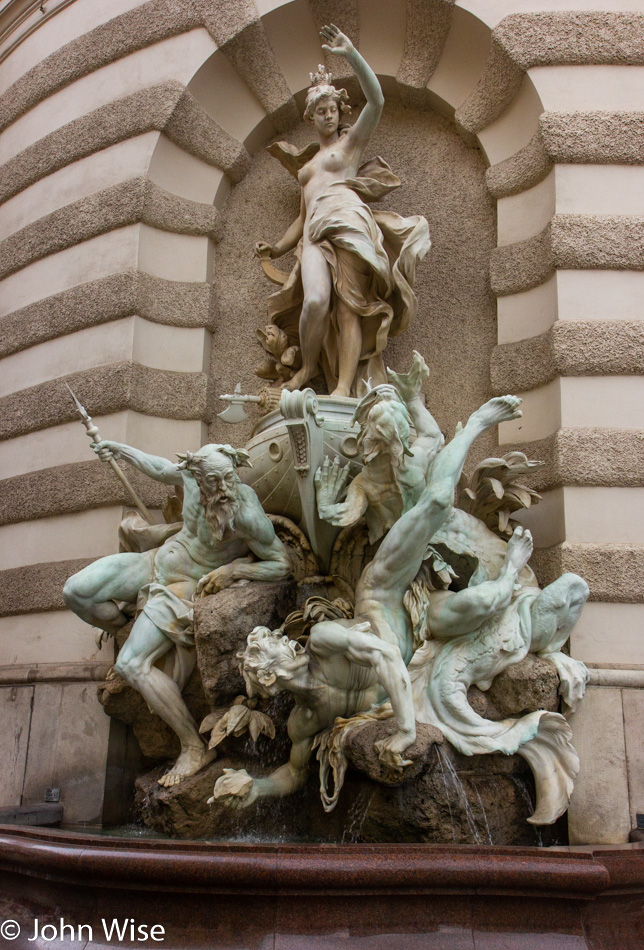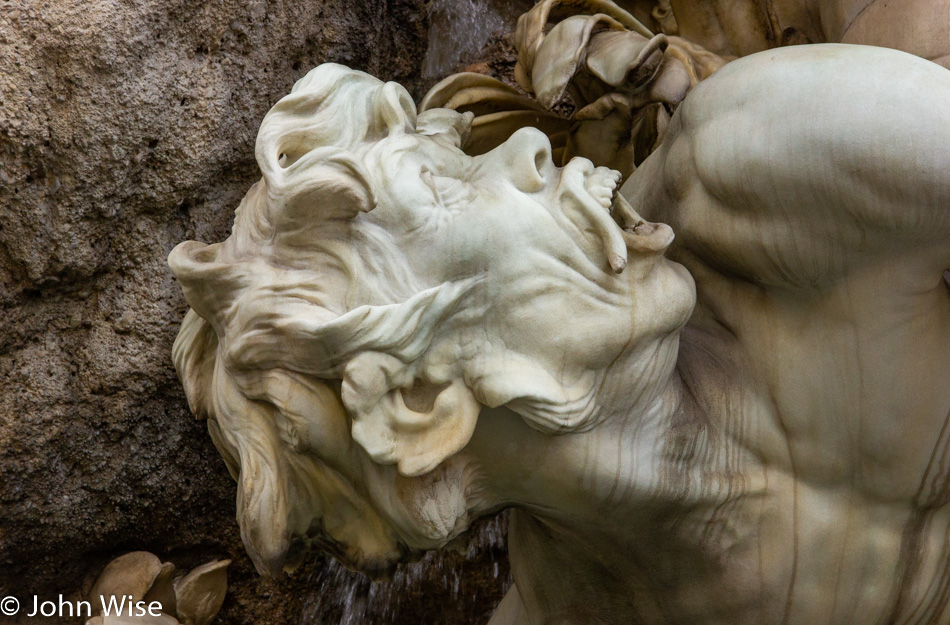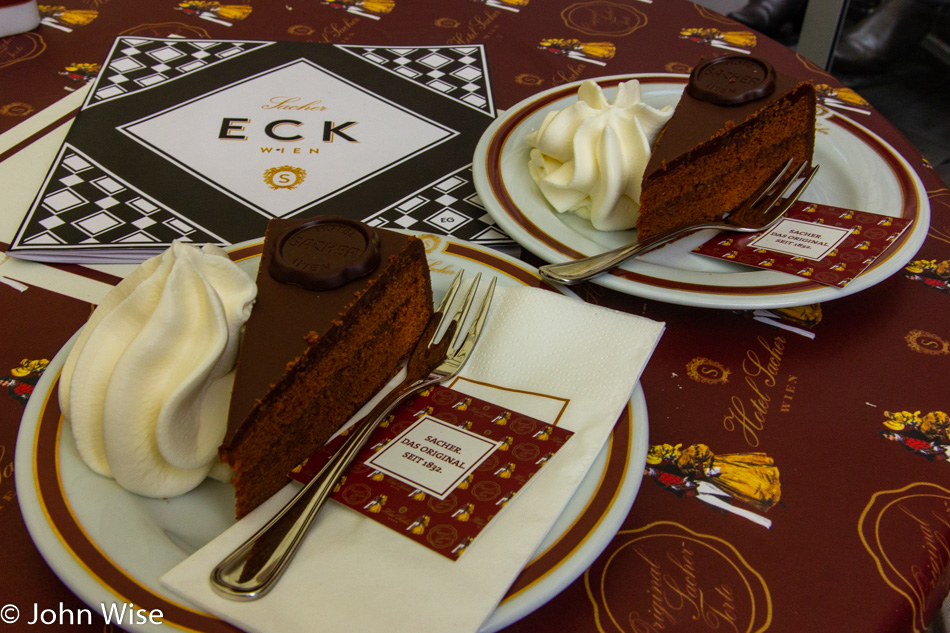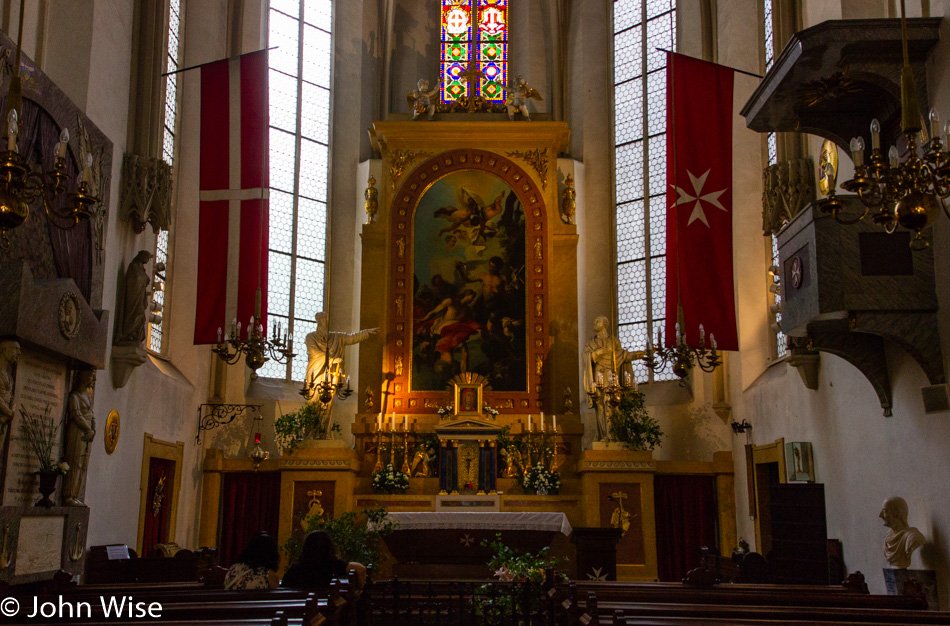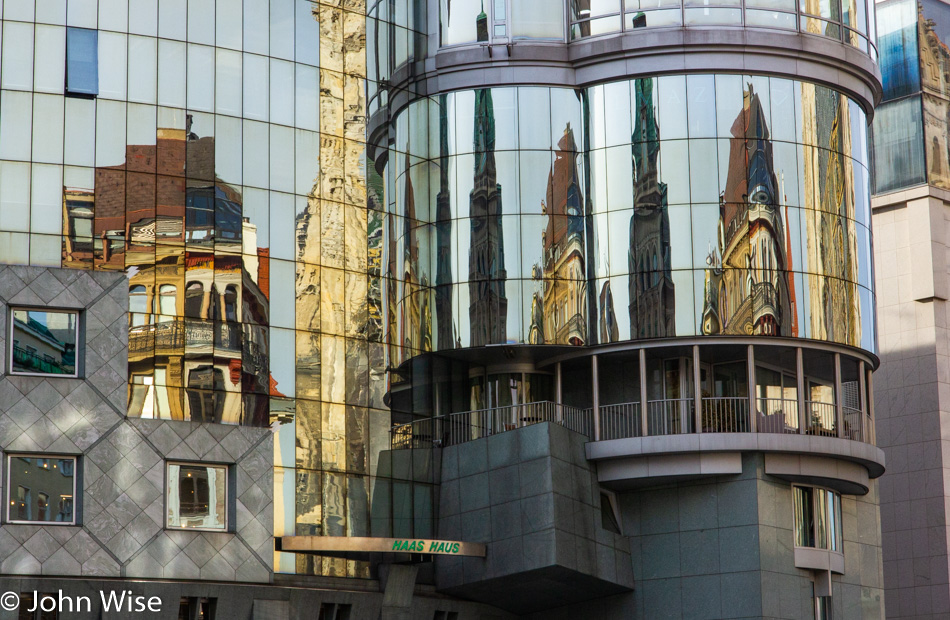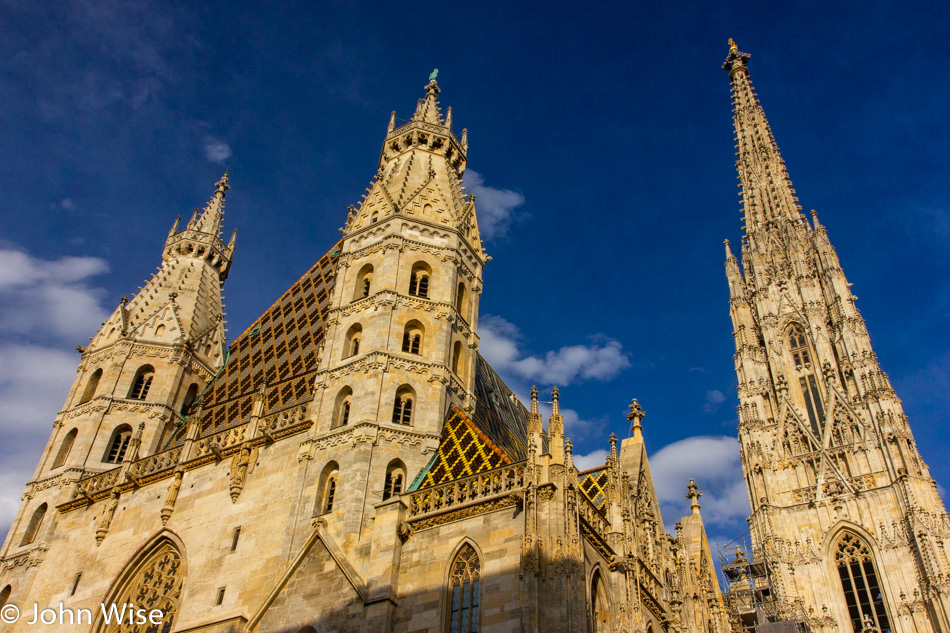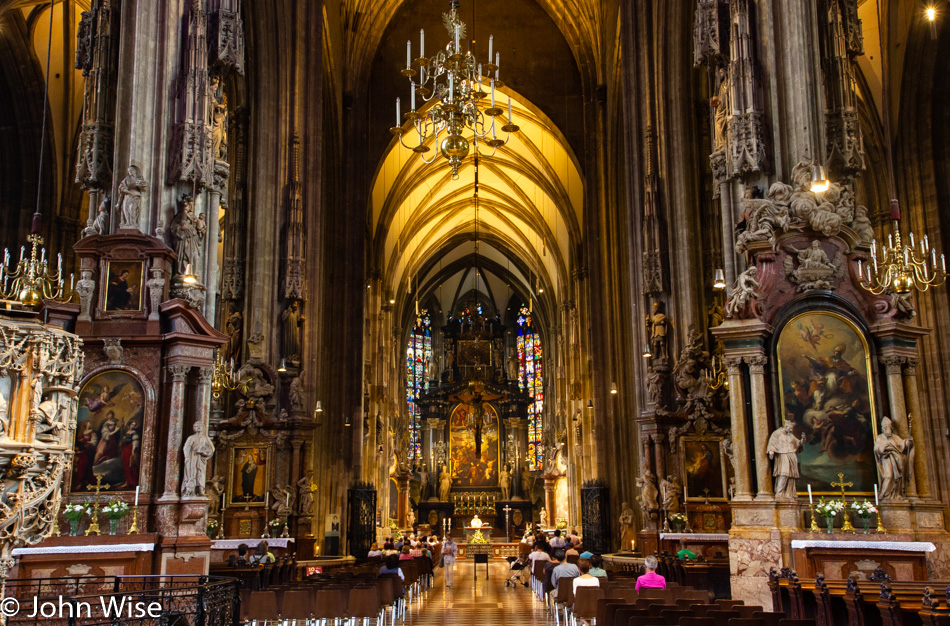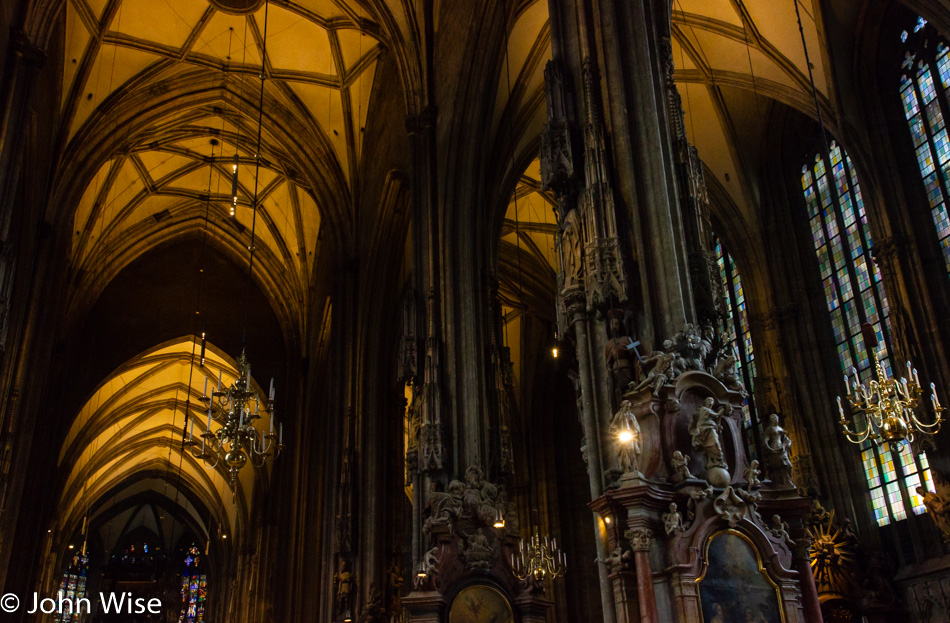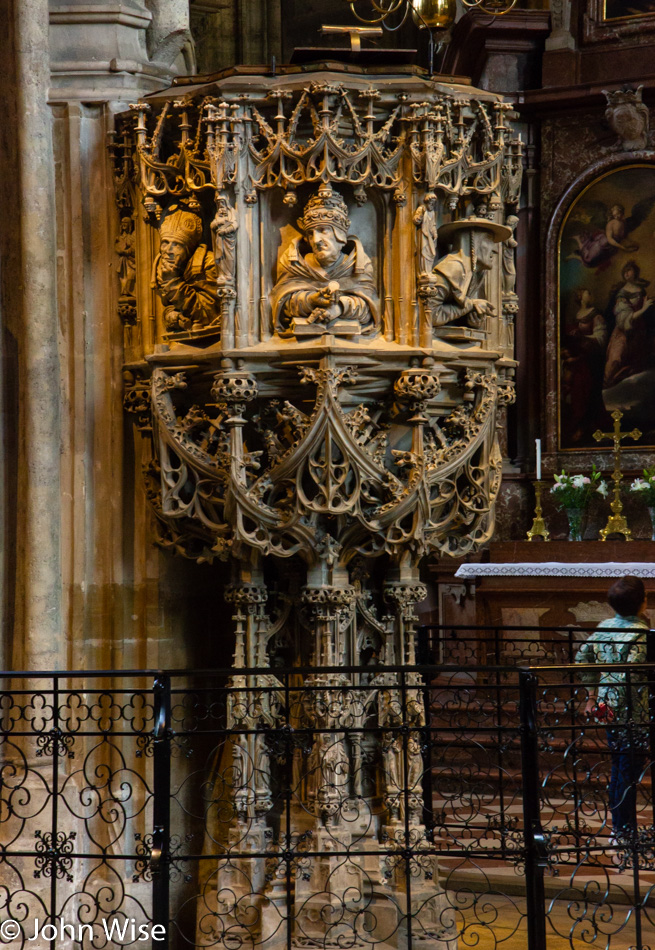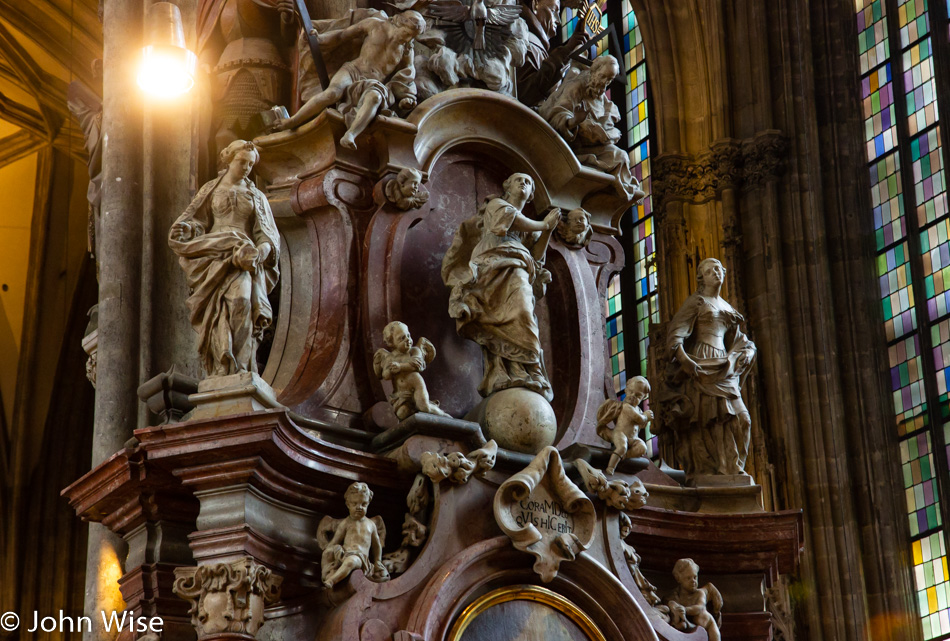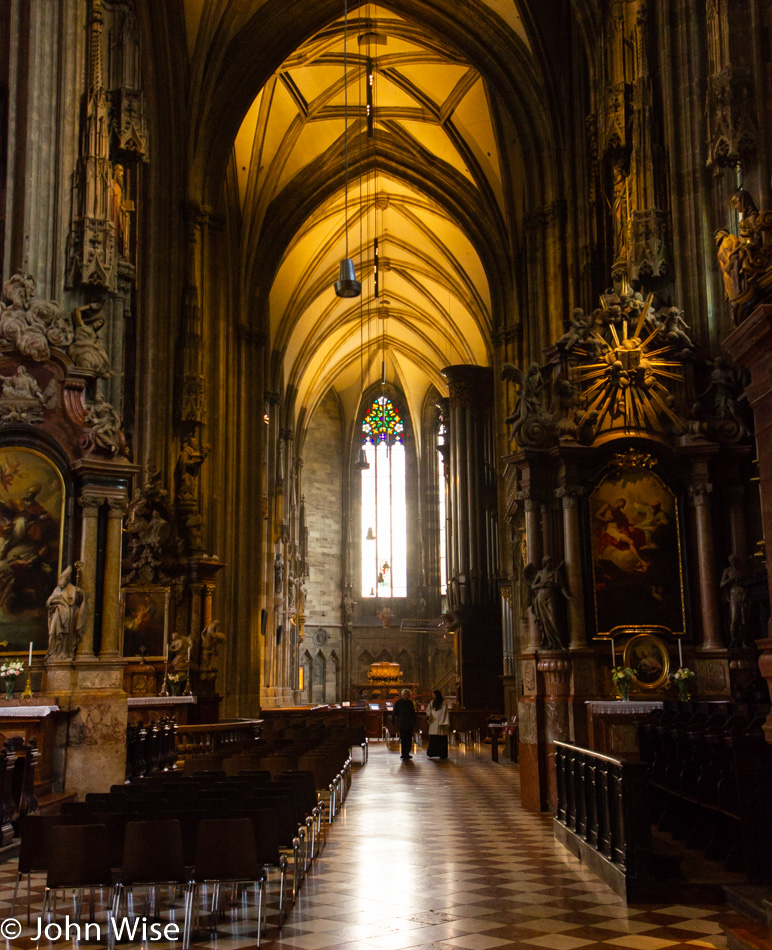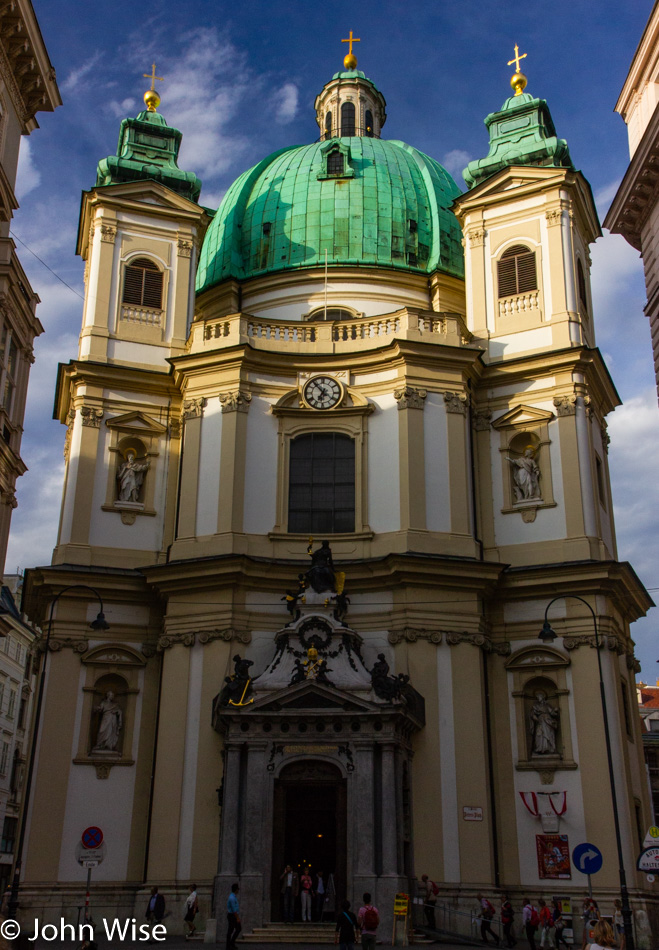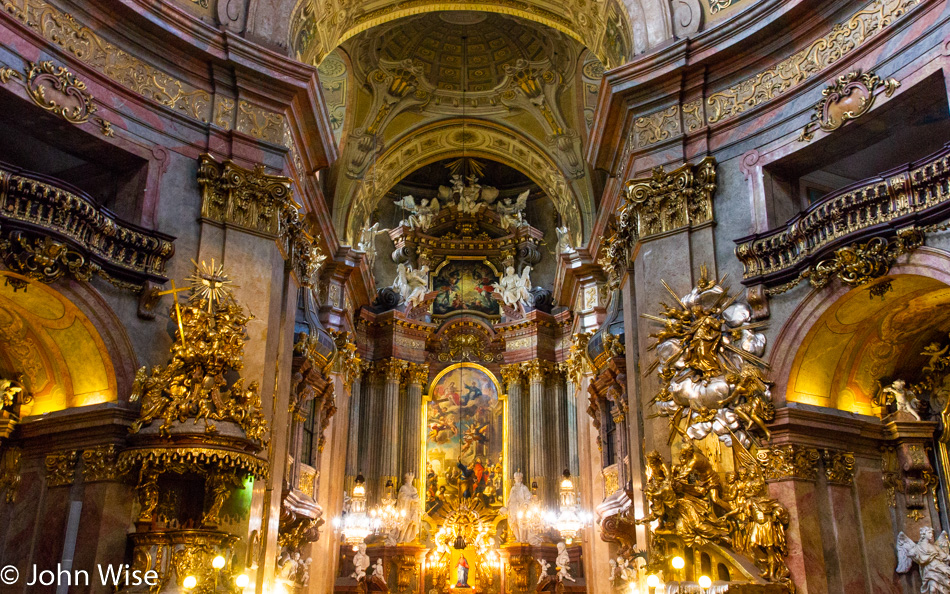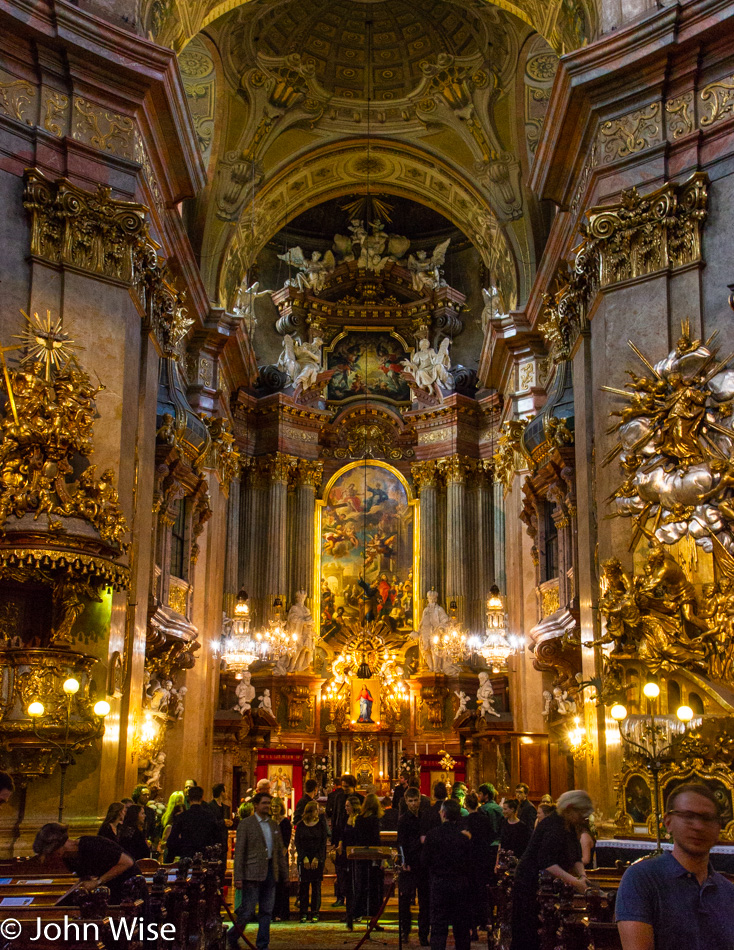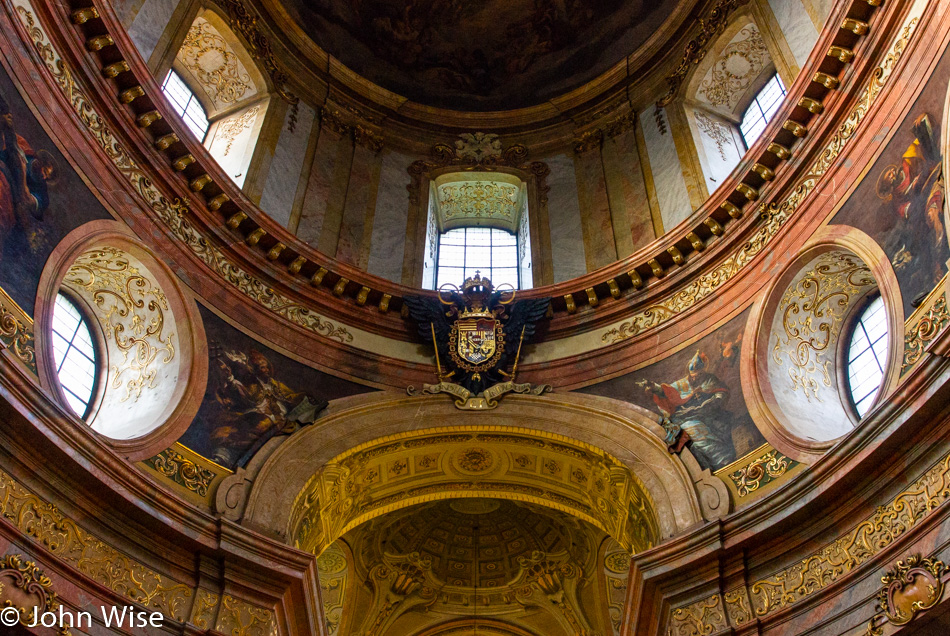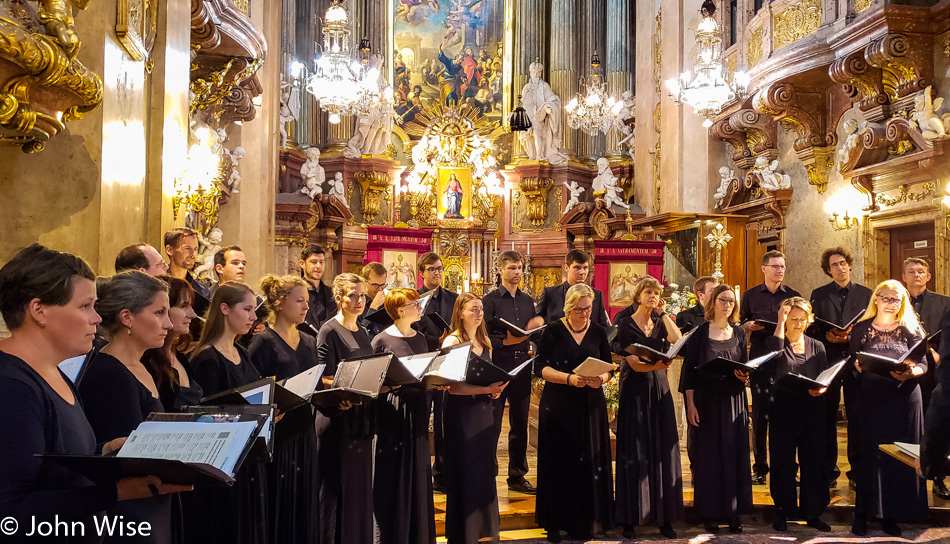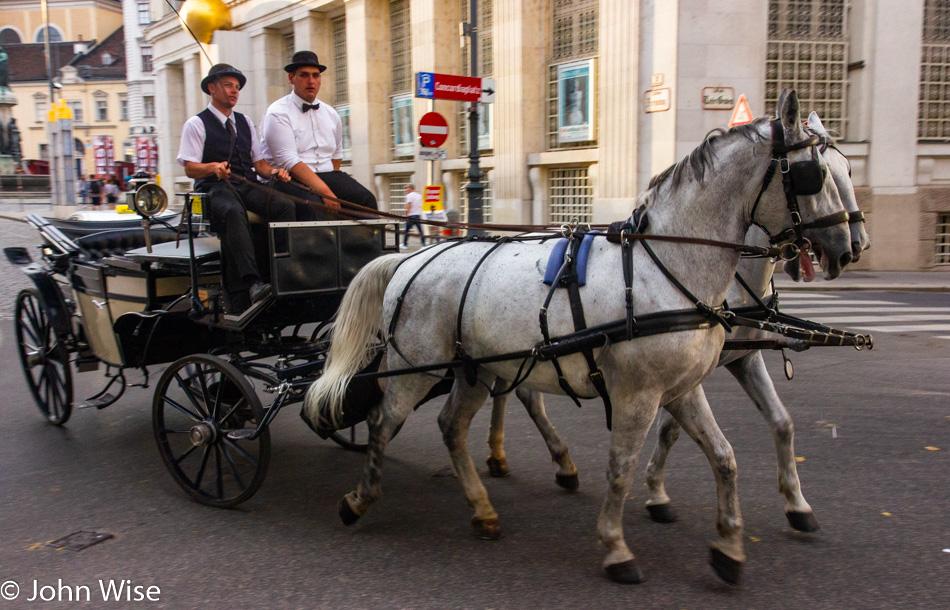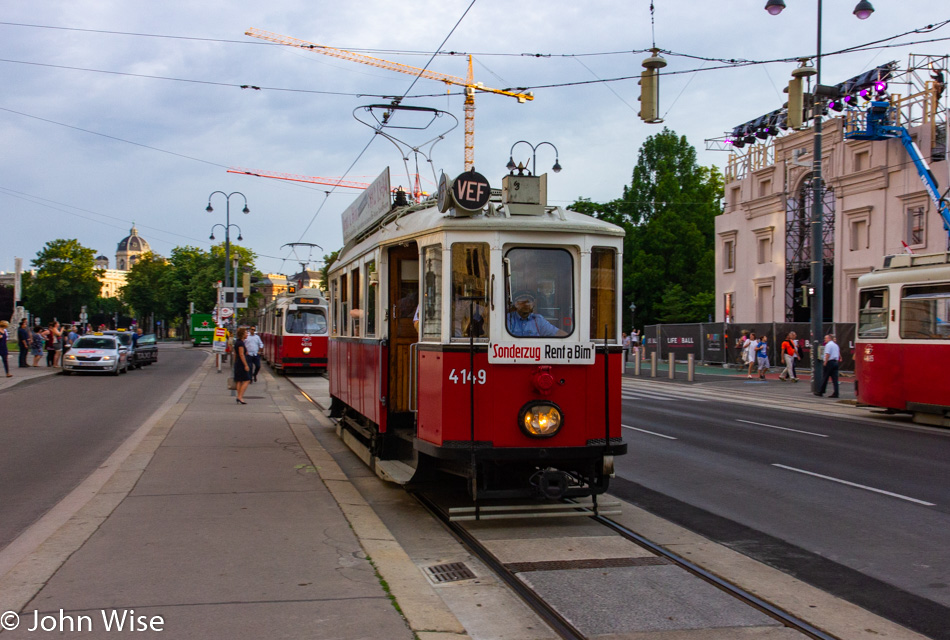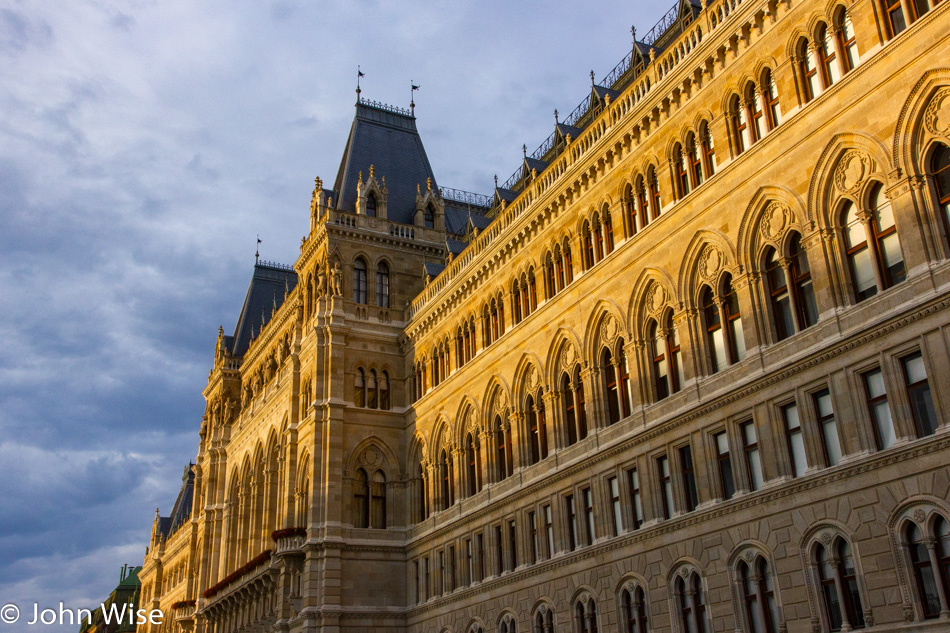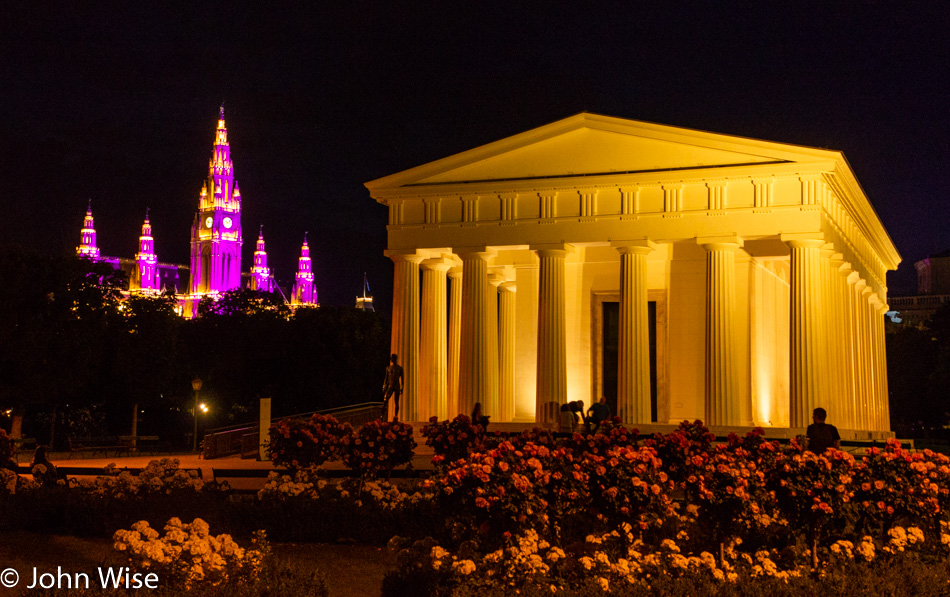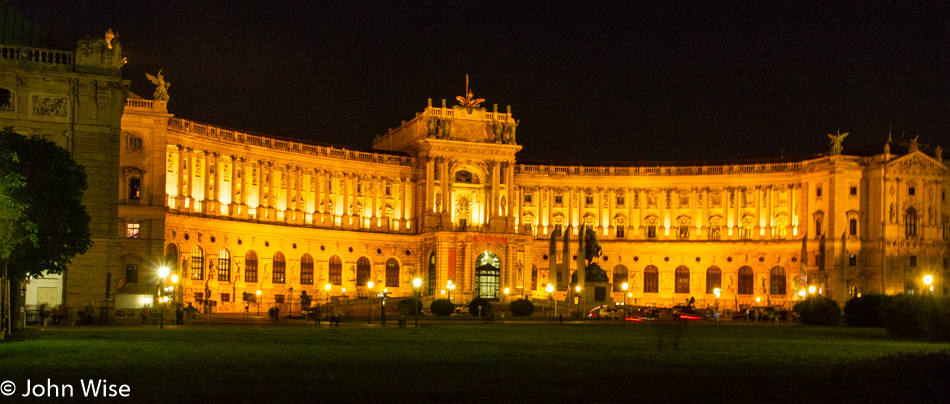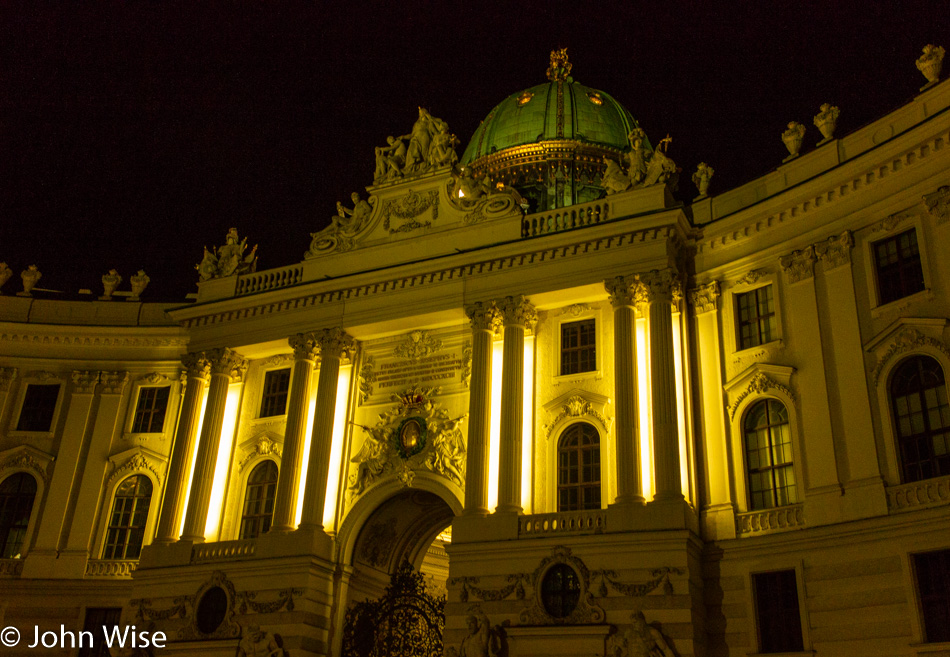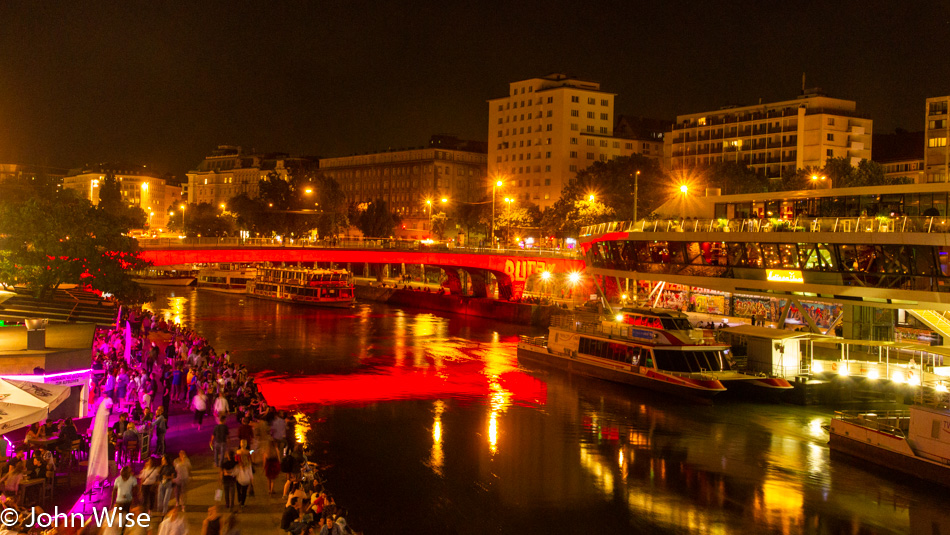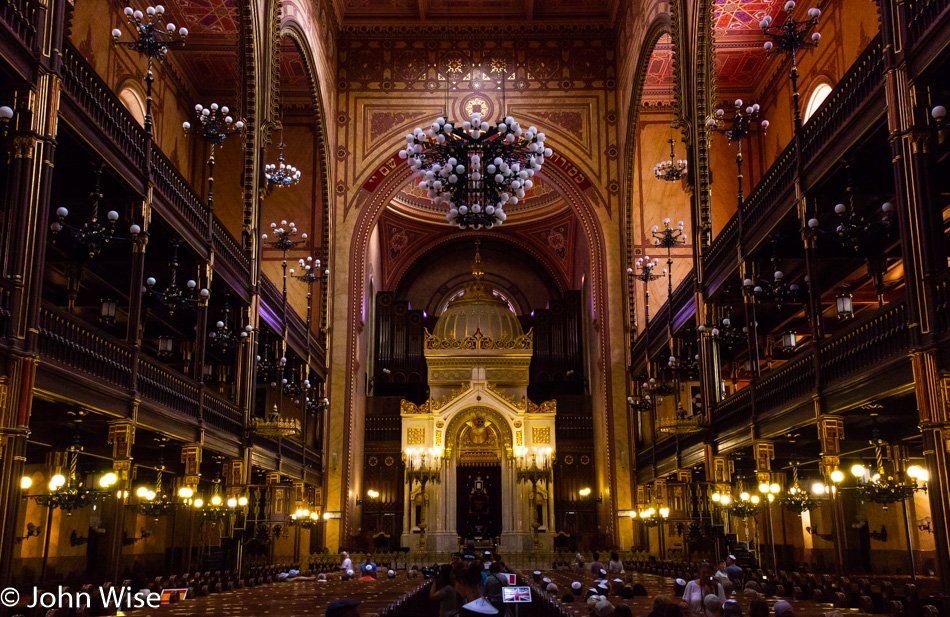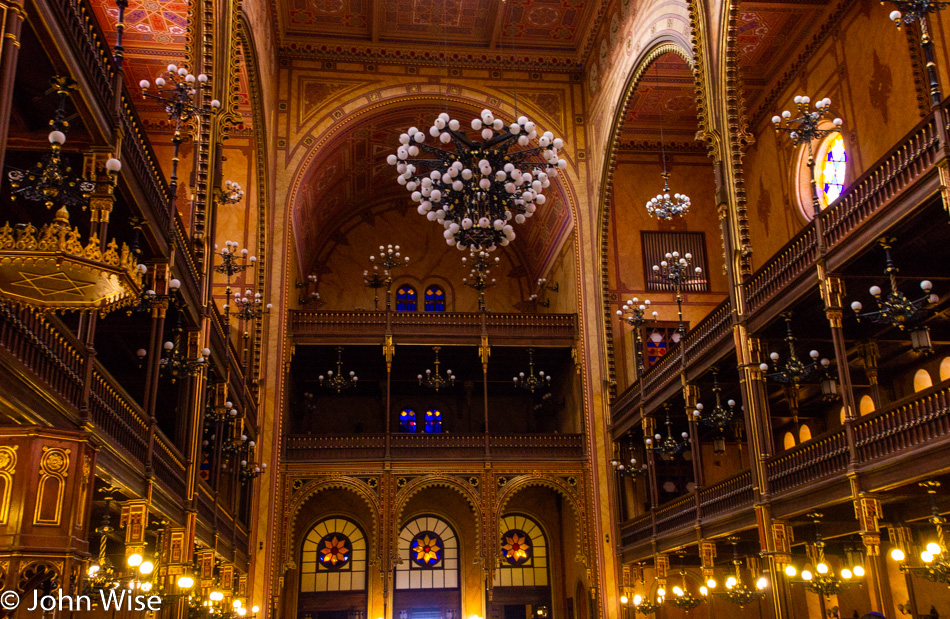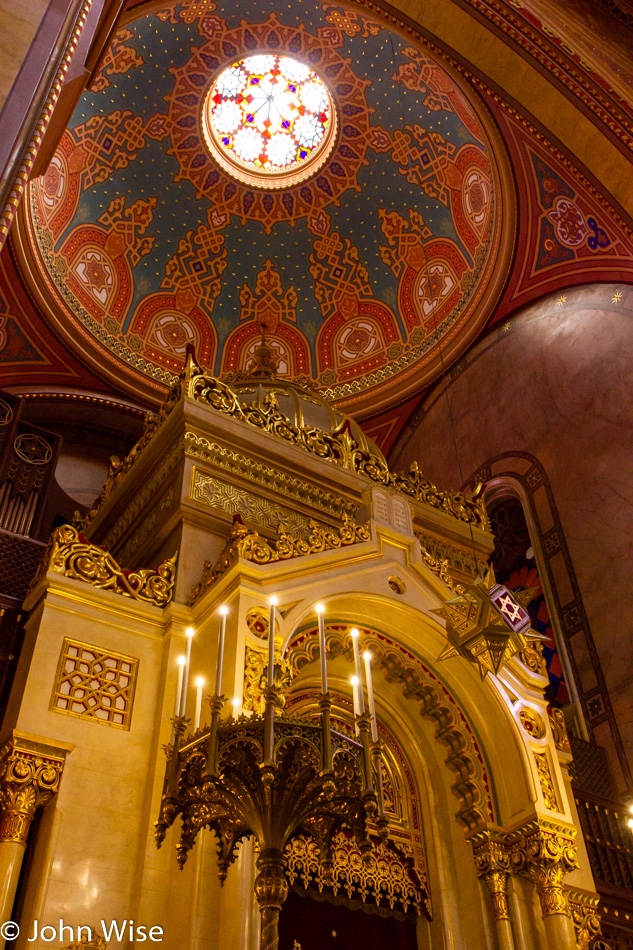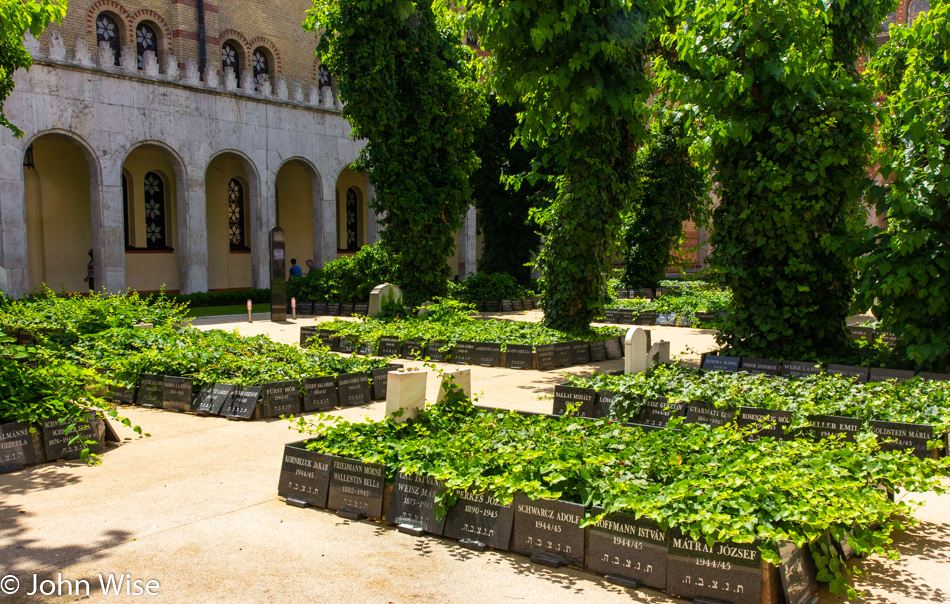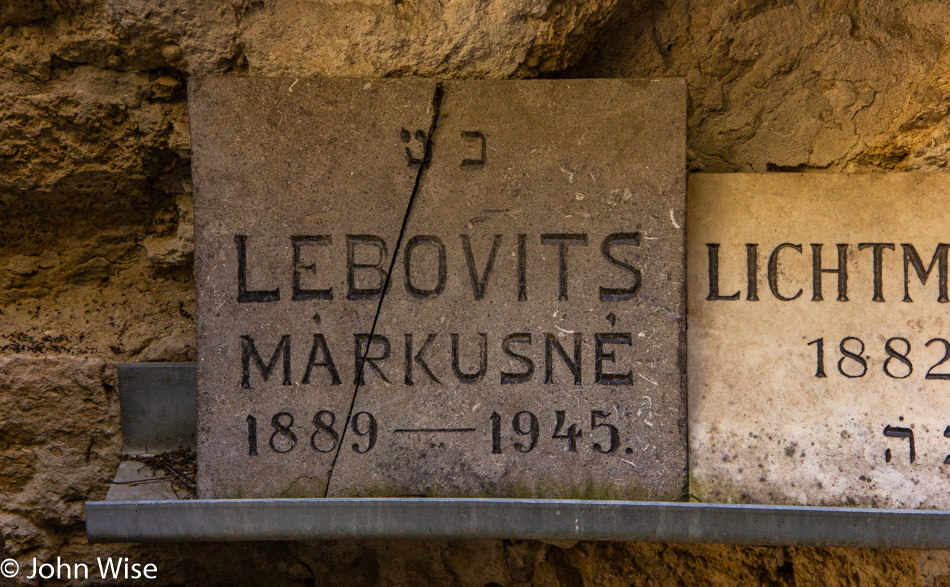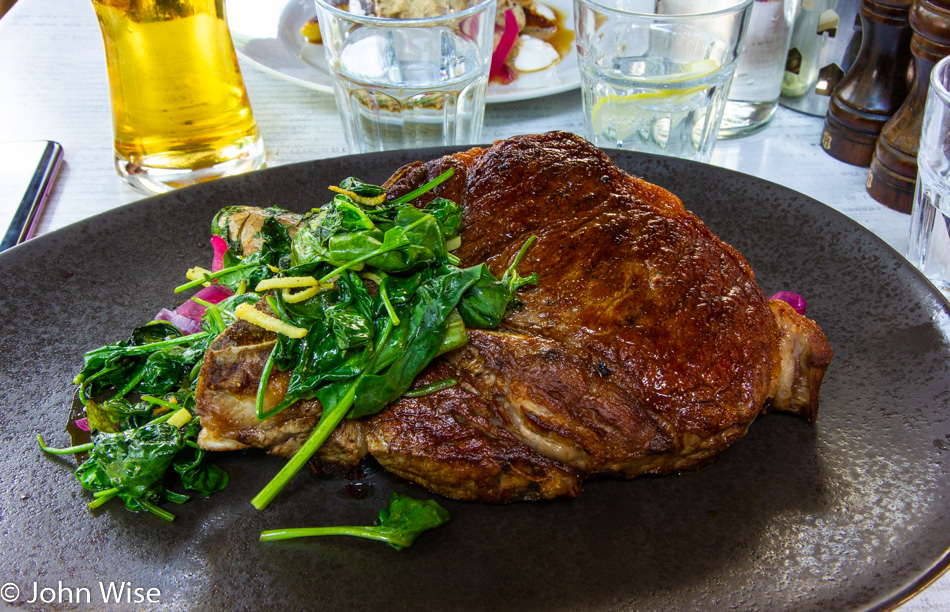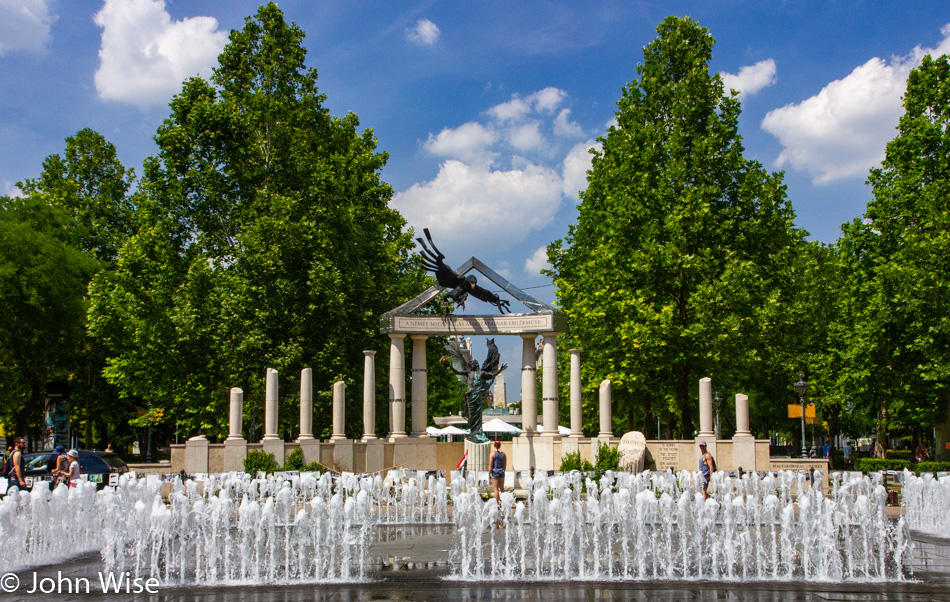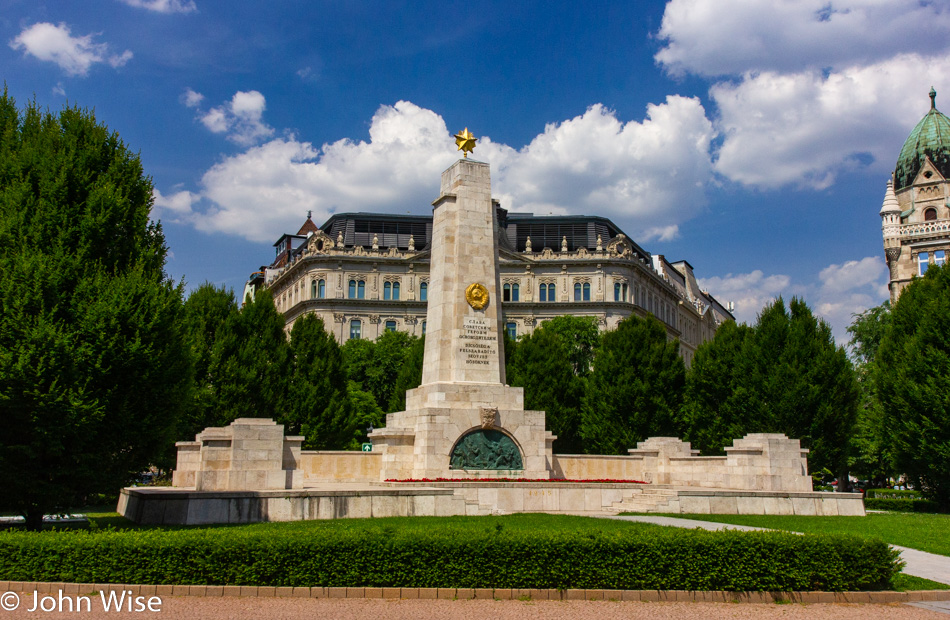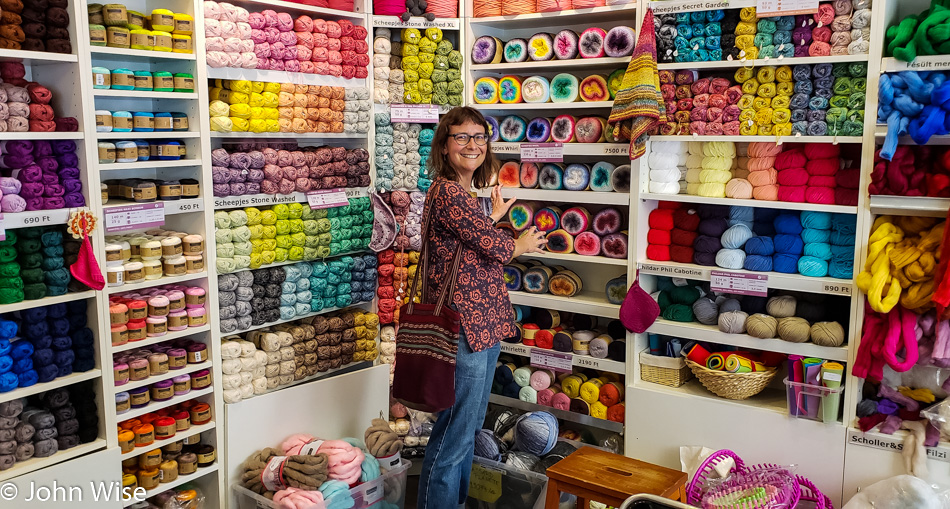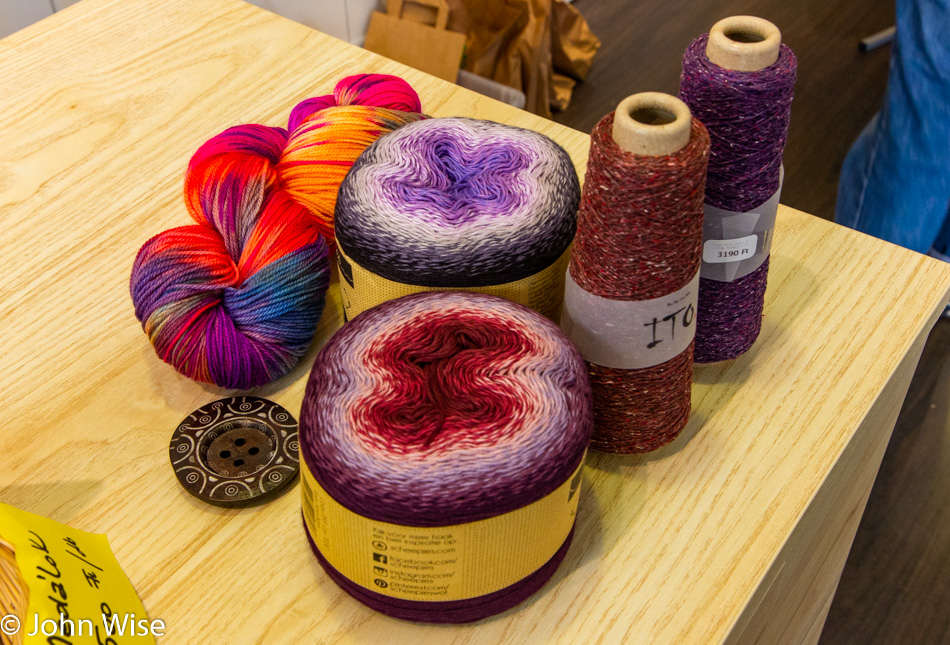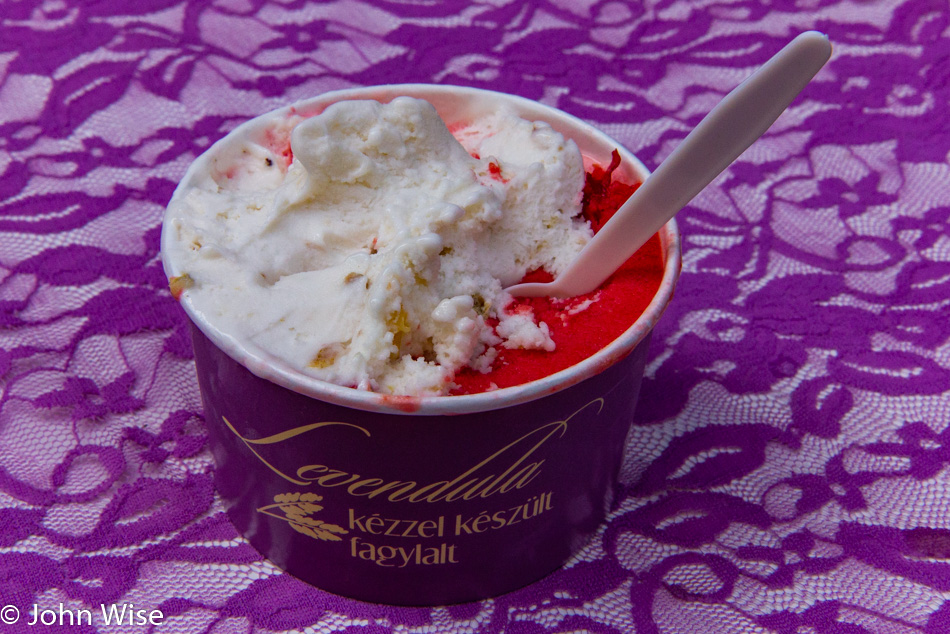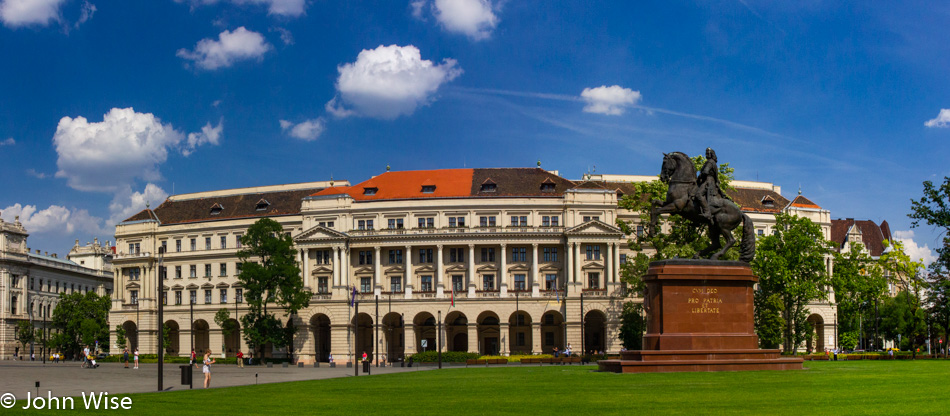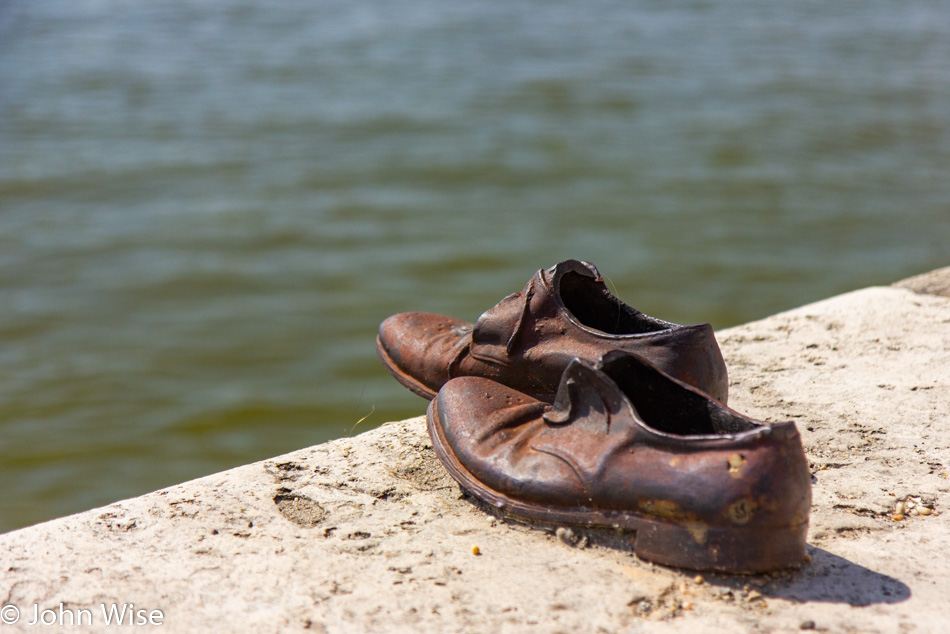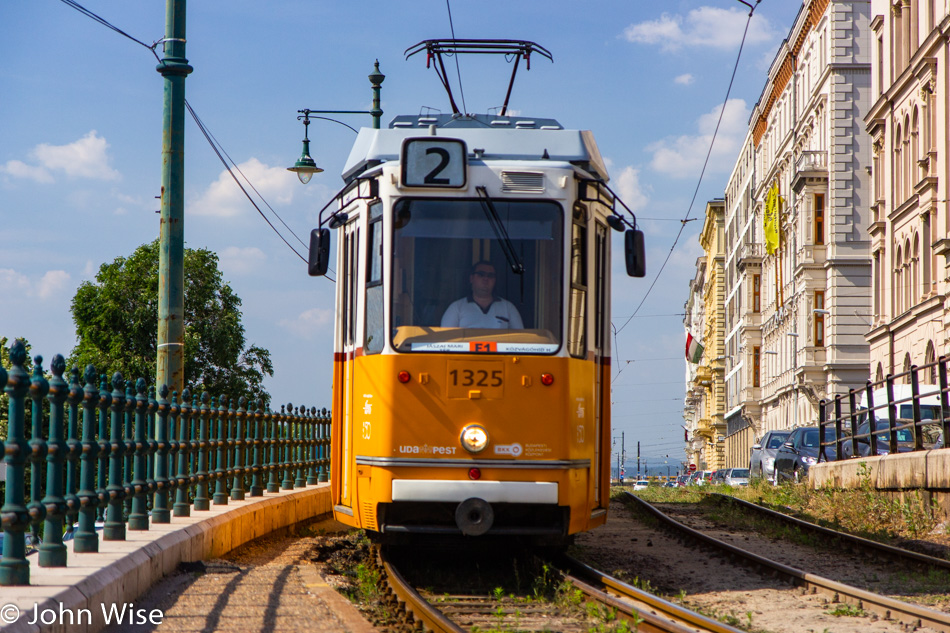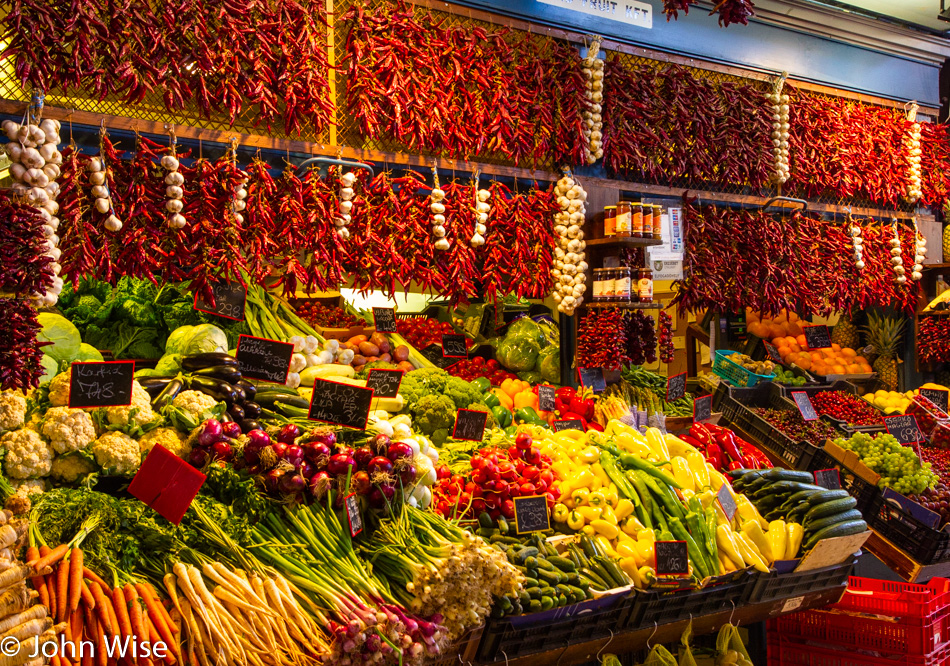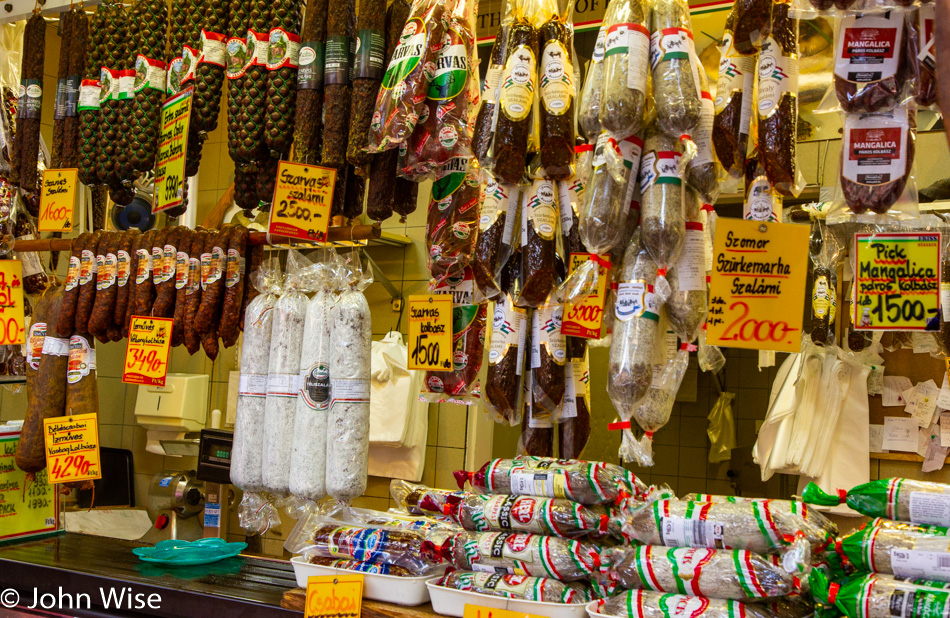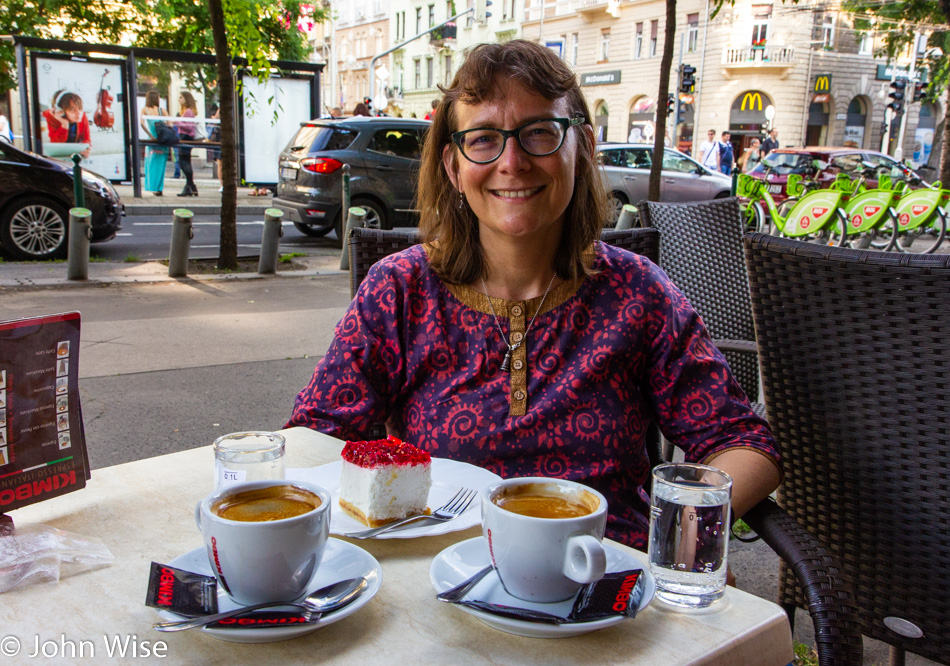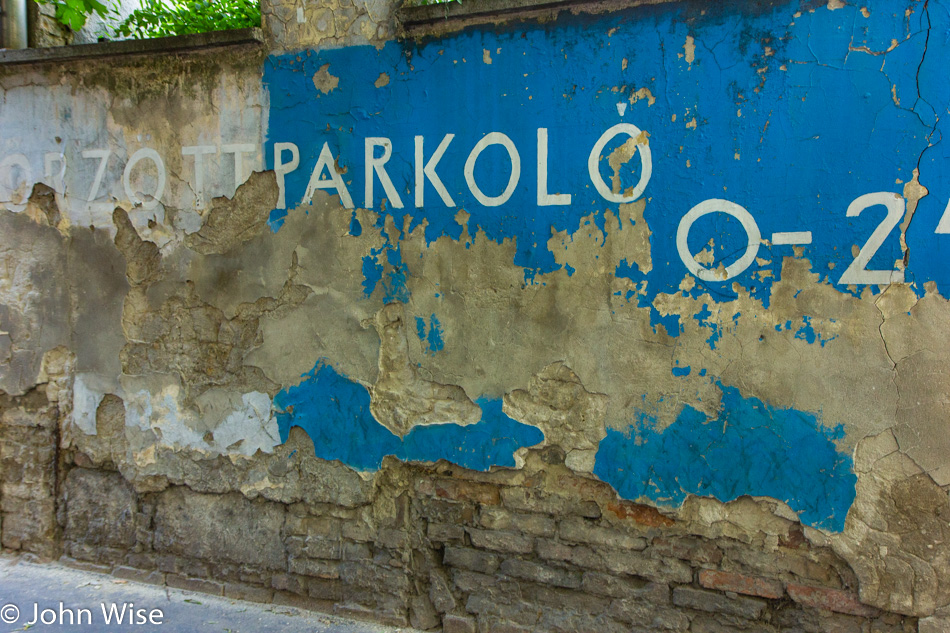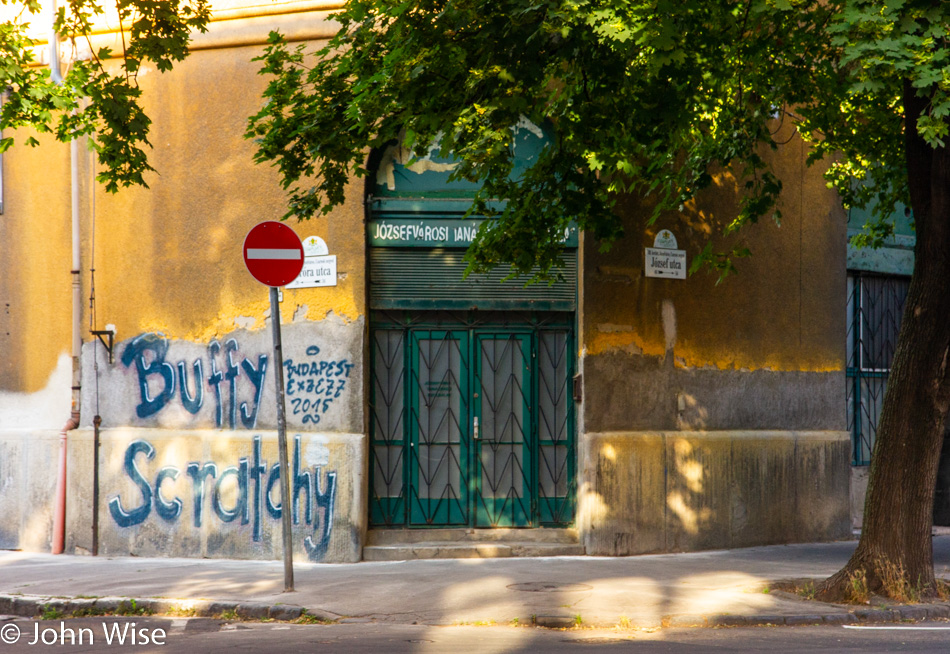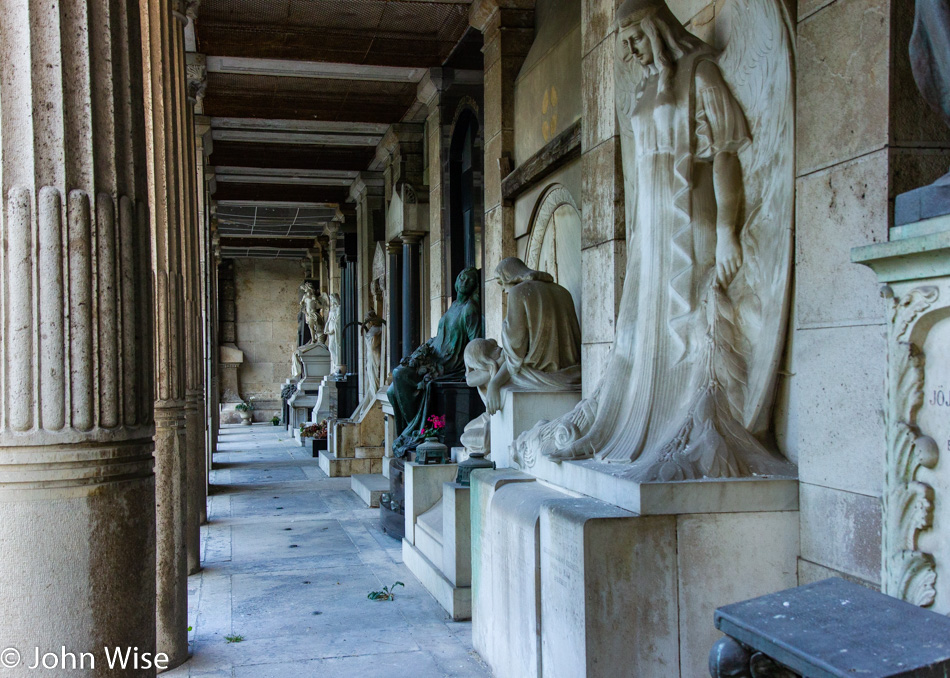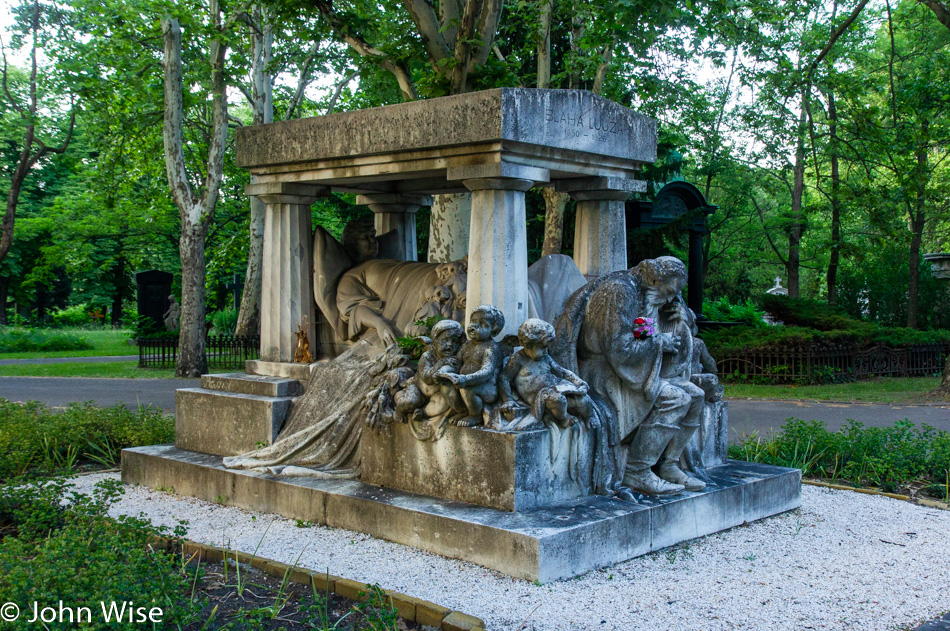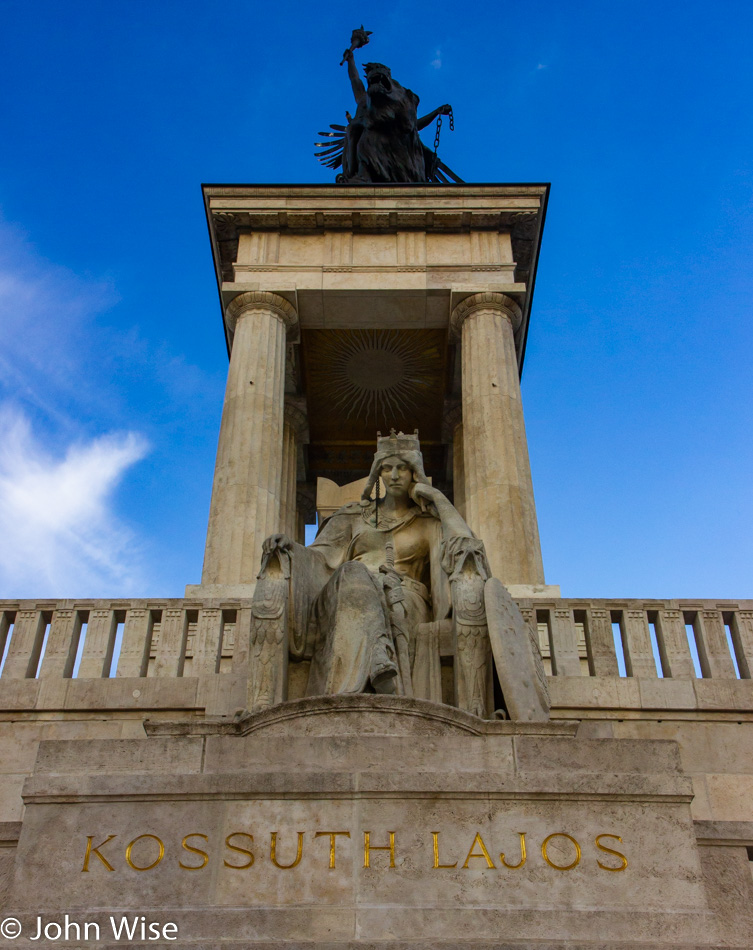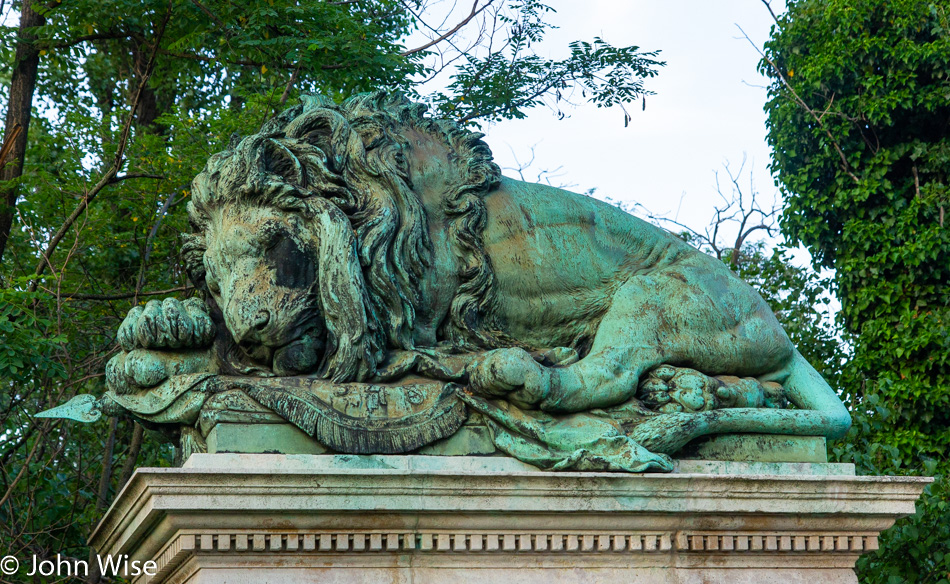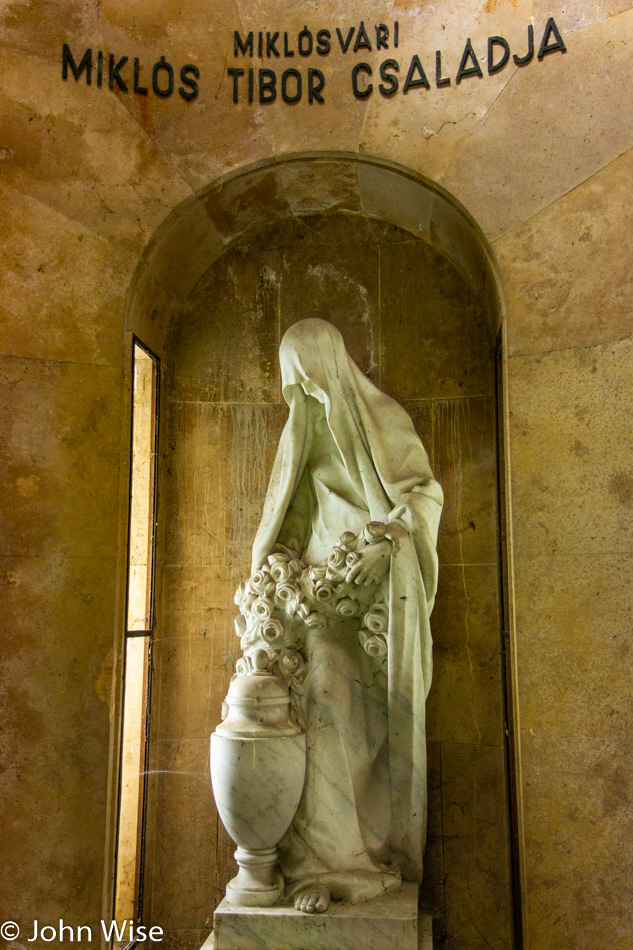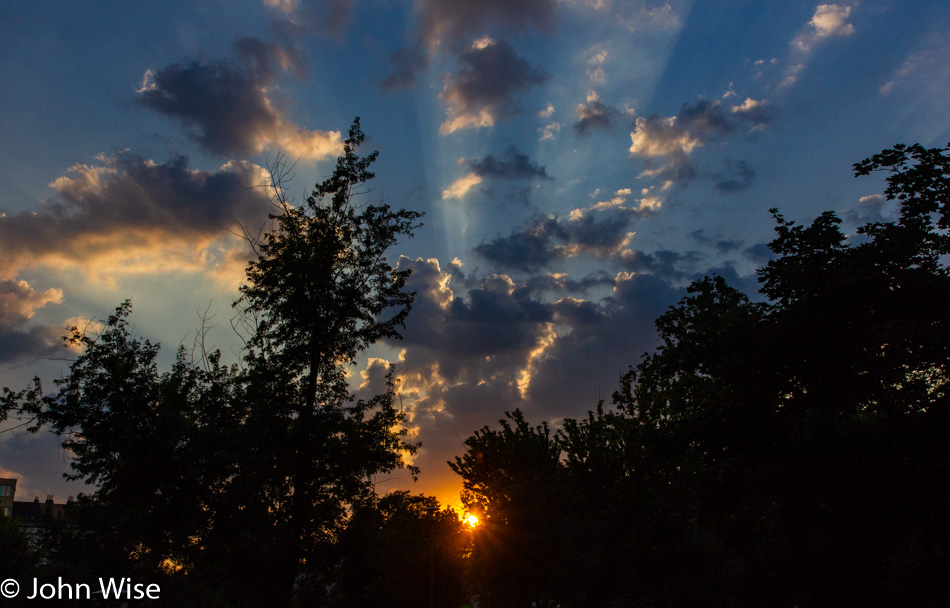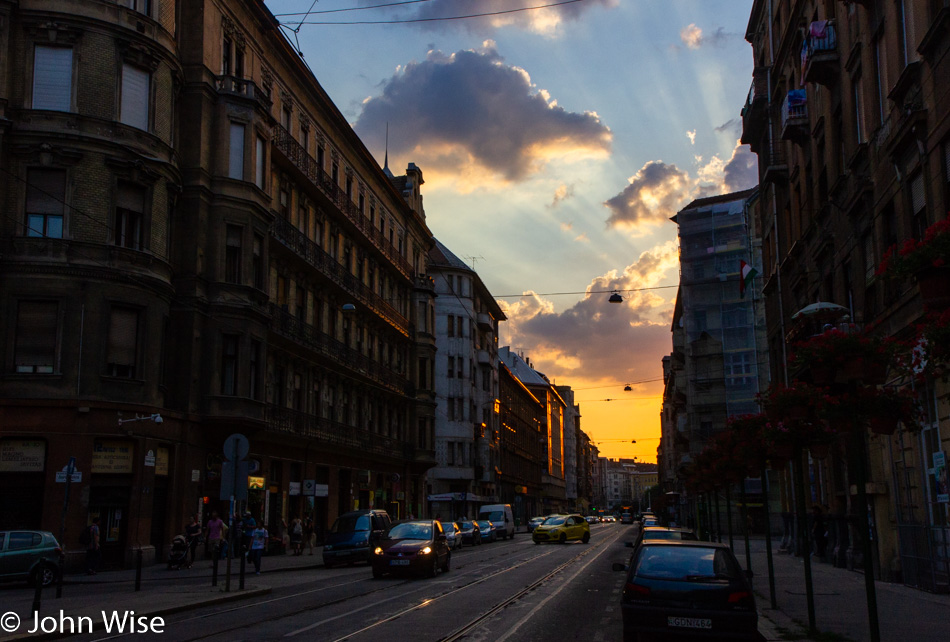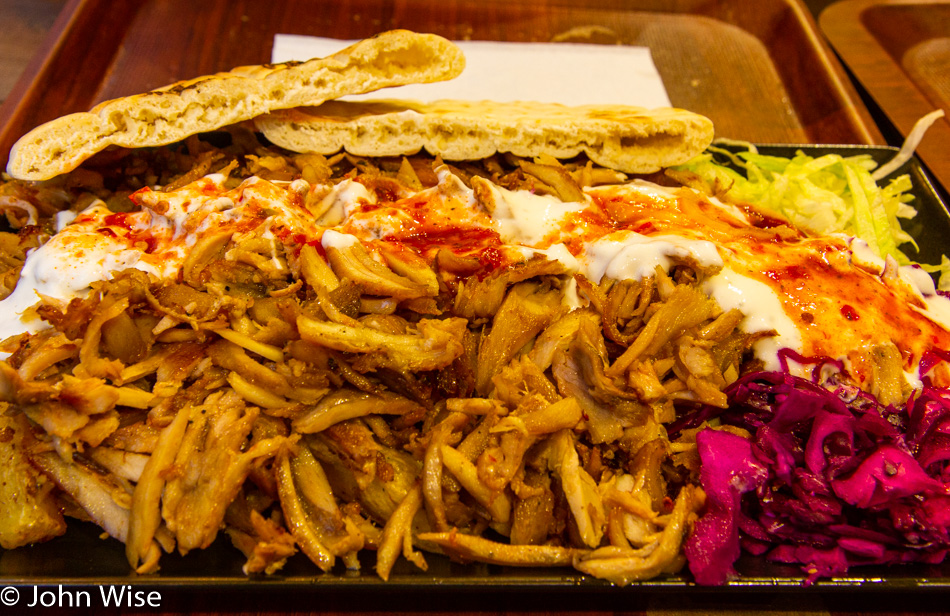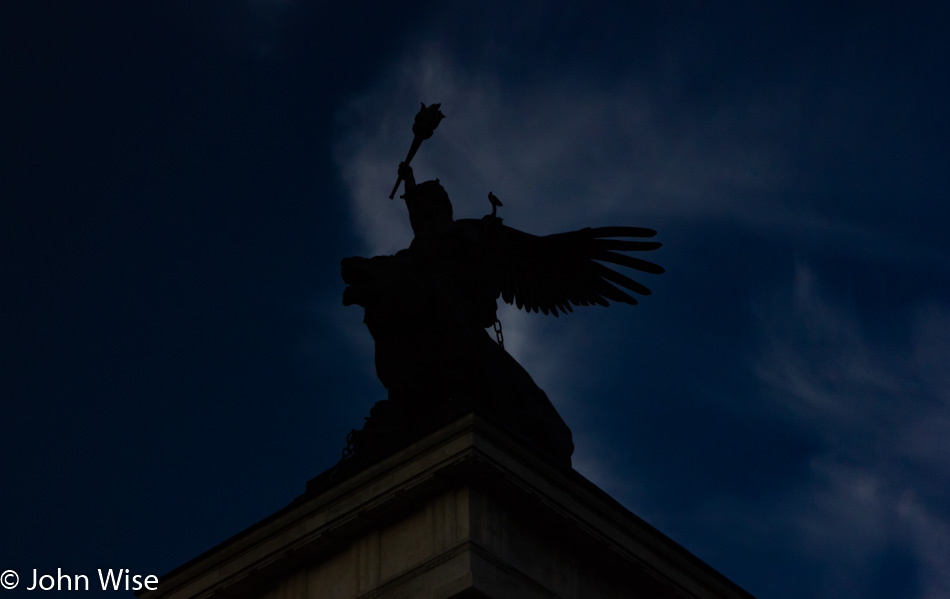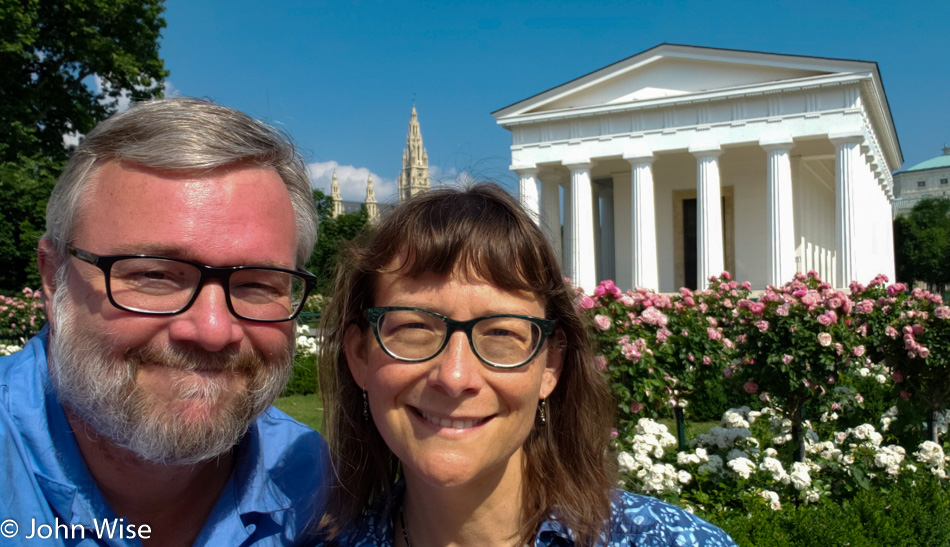
It’s about time for another selfie of both of us, which has been few and far between on this trip, and there is a reason for that. The auto-focus on my lens was broken even before we left the United States, so there was that. Then, there was the image stabilization on that lens that was broken, too. Those issues weren’t the reason, though, that I’ve been held back from taking selfies; something new broke while we were here in Europe. Of course, I have my phone, and that’s what captured this image while my Samsung S9+ shoots raw images, it’s a fully manual process that is not conducive to taking selfies, so I have to shoot them as JPGs and run into problems with lighting, color temperature, and lost data in the images which are inherent to the format.
Back to my lens. I am still shooting the majority of my photos with an 8-year-old Canon T2i 18MP DSLR. My favorite lens is my “walking around lens,” an equally old Canon EF-S 17-55 f/2.8, and the other day, it appeared a metal piece that locks the zoom ring to the lens mechanism broke. Actually, it is more than simply broken because that metal piece has been rattling around inside the lens assembly as it shifts about. To zoom the lens, I have to pull the lens forward manually by grasping the outer ring, and to get it back to full wide-angle, I have to push it back in. The problem here is that the metal floater occasionally gets in the way, and the lens stops going in at around the 28mm mark, stopping me from returning to 17mm without some vigorous shaking of the camera.
Next up, while we’ve been here, the body, too is producing some errors by not registering changes in the f-stop readout. If I shot automatic mode, I wouldn’t care, but you can’t shoot a photo in a church using automatic settings (unless you are using a flash or like blurry photos), so I set the aperture by pointing the lens in full zoom towards a bright light source, locking it in, and then try to pull the lens back to its widest position while maintaining my desired f-stop and exposure time until I get a properly lit and focused image in the poorly lit confines of an altar in the front of the church. The f-stop readout and attempts to change it when stuck require me not to just turn off the camera; I have to remove the battery.
In bright daylight, I used to be able to set the camera to f/11, focus to infinity, and usually get a decent shot of Caroline and me, but there’s too much going wrong with my camera right now. Initially, panic with the misbehaving lens had me consider trying to find a camera shop (not a chance) or having a replacement lens sent overnight to where we were staying, but then, with European tax and shipping, that would have been just over $1000: nope. So I hoped and prayed that I could hobble through this without adding such a large expense in the middle of our trip for a lens that hopefully could be repaired once I returned to the United States.
One more wrinkle in this fabric I should share. Last night, when I fell, my camera was in my right hand, and took a hard jolt as my knuckles were sacrificed to offer a small amount of protection to the all-important camera. Funny enough, no further damage was done to the aging camera that has now shot well more than 100,000 images faithfully for me on water, in snow, in searing heat, and on two continents more than once.
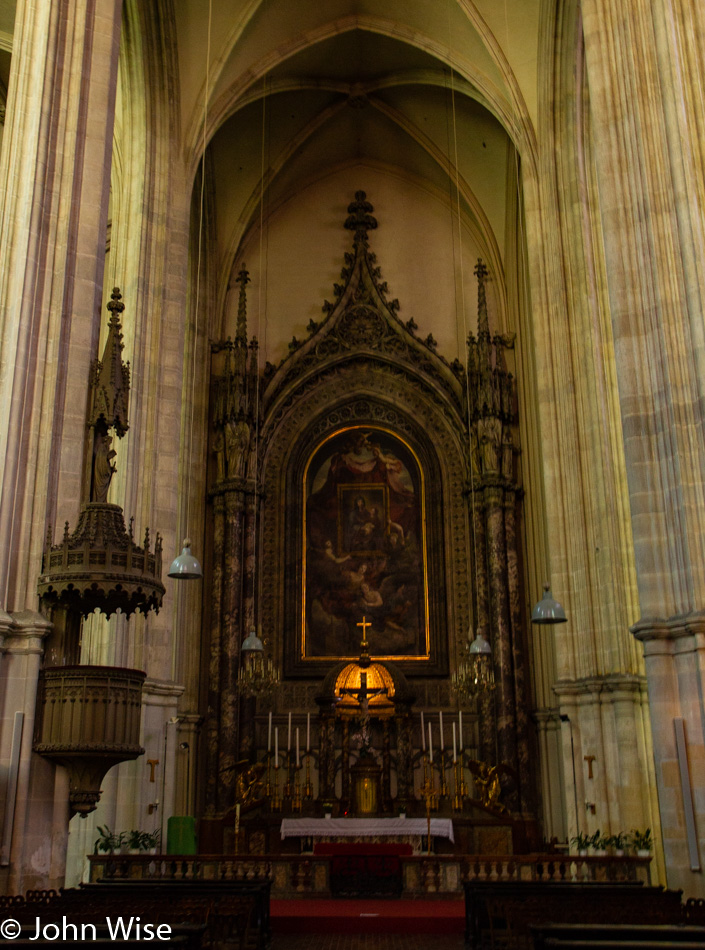
On our way to the Austrian National Library, we spotted the Minoritenkirche and, of course, had to pay a visit. The church was started in 1276 and was completed by 1350.
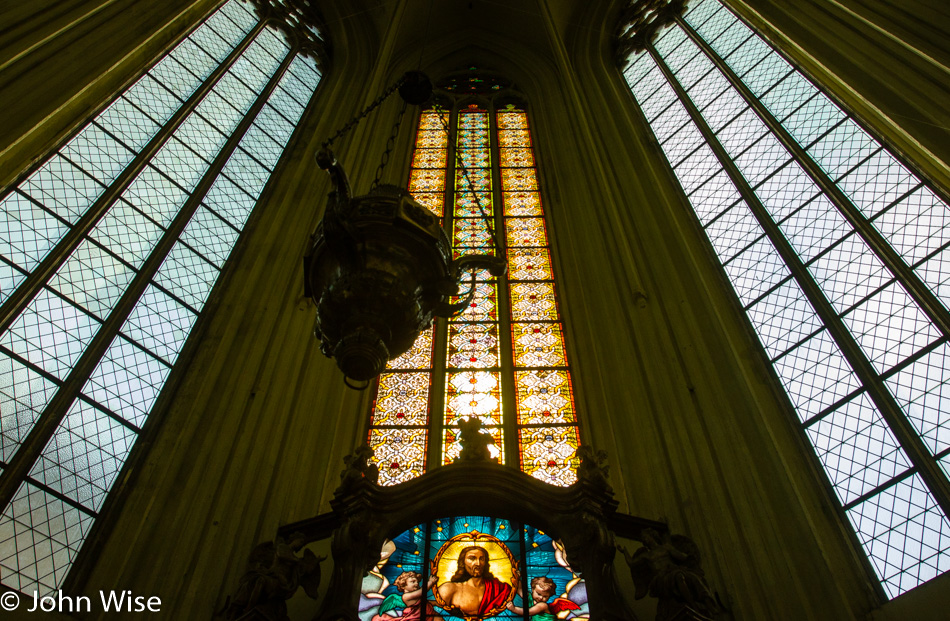
There was more to this church than a five-minute visit was going to allow being seen, but not only do we have a couple of intentional stops to make today, but we are also driving to Krems an der Donau before spending the night near Linz, Austria.
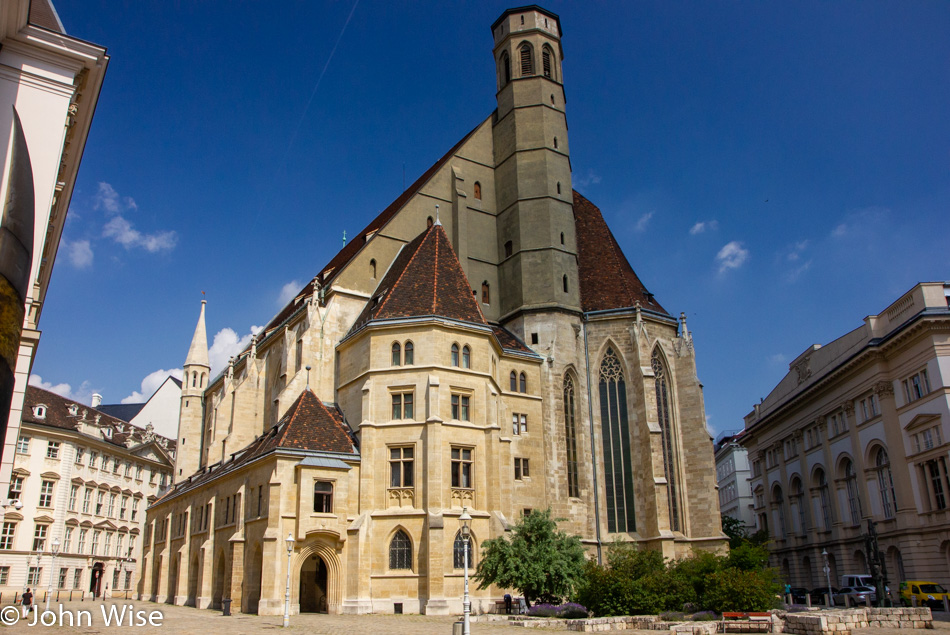
Two other things of note about this church, though. First, it was the subject of a watercolor painting by Adolf Hitler back in 1910, and second, that painting was referenced by Kurt Vonnegut in “Deadeye Dick” several times. I’d never seen the watercolor before learning about it after our vacation had ended, and found it strange that Hitler and I had chosen nearly identical perspectives to capture the image.
From the Minoritenkirche, we walked over to Café Central for a snack and a coffee just as Freud, Tito, Stalin, Trotsky, and Hitler did back in January 1913 (though not all at the same time and probably not just after visiting the Minoritenkirche).
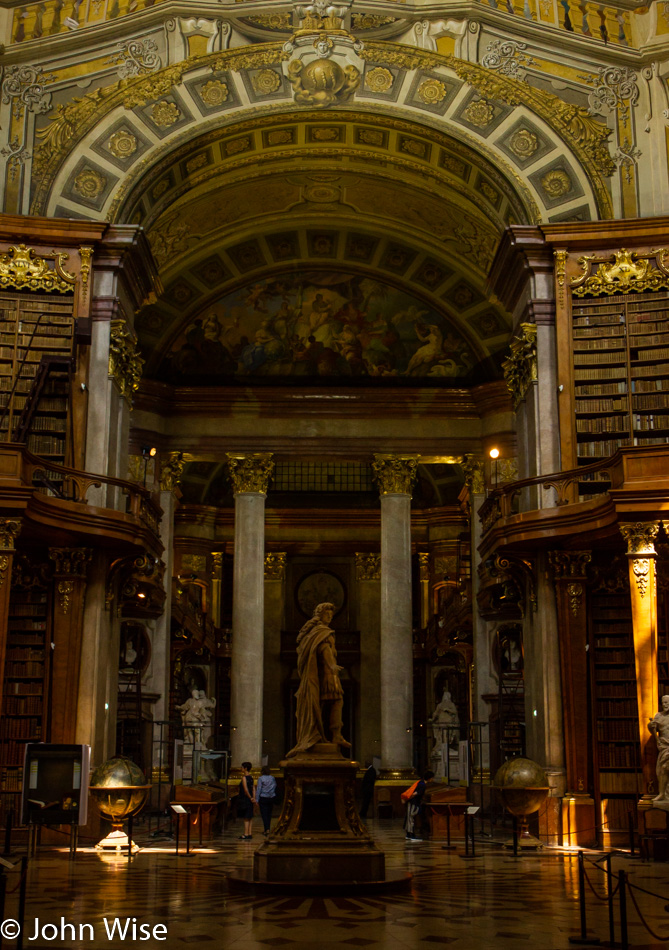
I should have thrown my broken camera to the ground and finished the job as no photograph I can take will ever do justice to this incredible interior of the Austrian National Library. While nowhere near the scale of the U.S. Library of Congress, it is one of the most beautiful libraries I’ve ever been in. Hmmm, I’m starting to think of a vacation during which we’d focus on libraries instead of so many churches.
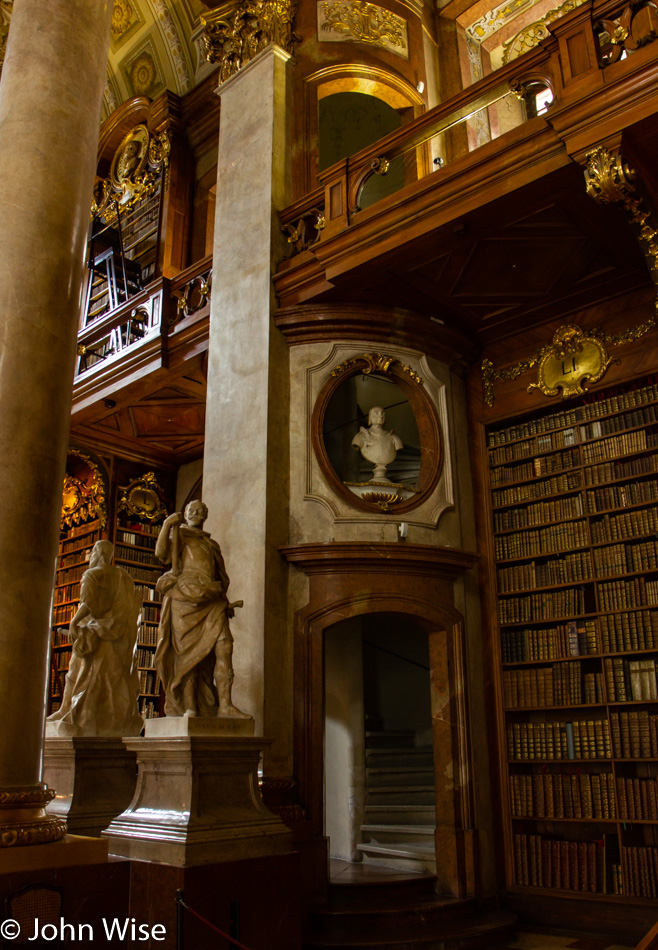
It’s near impossible to take landscape formatted photos in here and I’m stuck with portrait framing to try and capture a feel of the interior. There are also books behind books as a “secret” panel that is propped open shows visitors who peer within.
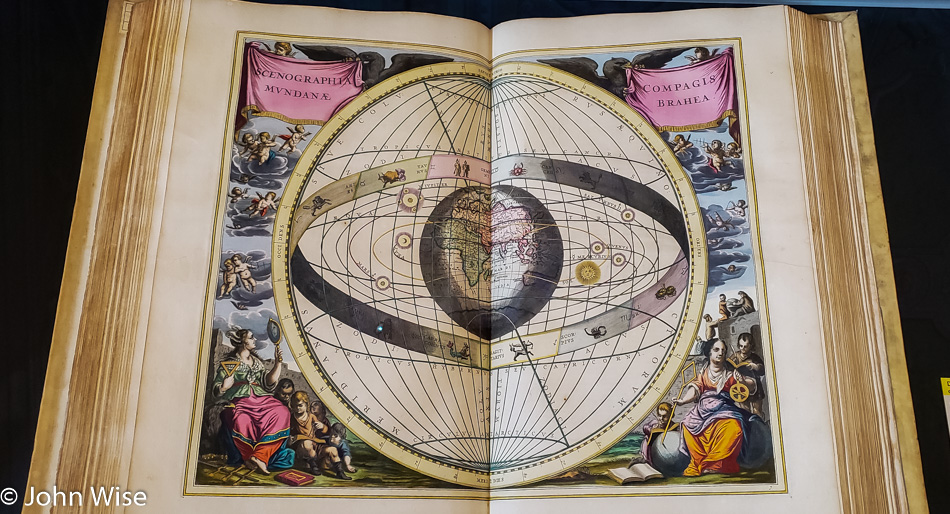
Tycho Brahe was a Dutch astronomer whose theory back in the 16th century was still quite popular. Contrary to Copernicus, Tycho believed that the sun revolved around the heavier and slowly spinning Earth. This book from 1661 attempts to diagram his theory. Notice that the Earth is not flat!
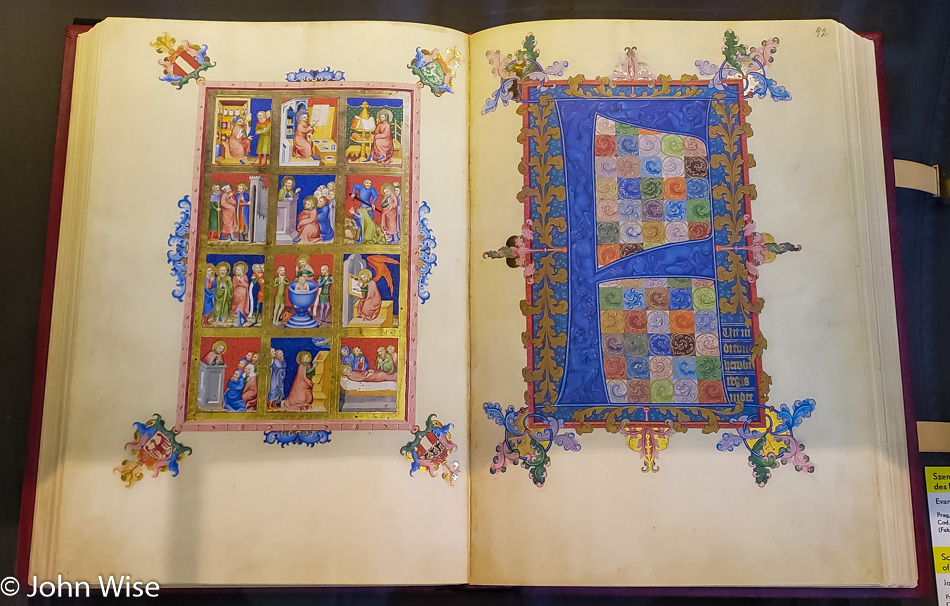
This is a facsimile copy of the very rare book and founding codex of the Austrian National Library known as “Gospels of John of Opava.“ The book is also known by the name “Evangeliar des Johann von Troppau.” The original was written in pure gold ink back in 1368 in the Czech Republic. It has a metal book cover, and the only known surviving copy is stored out of public view.
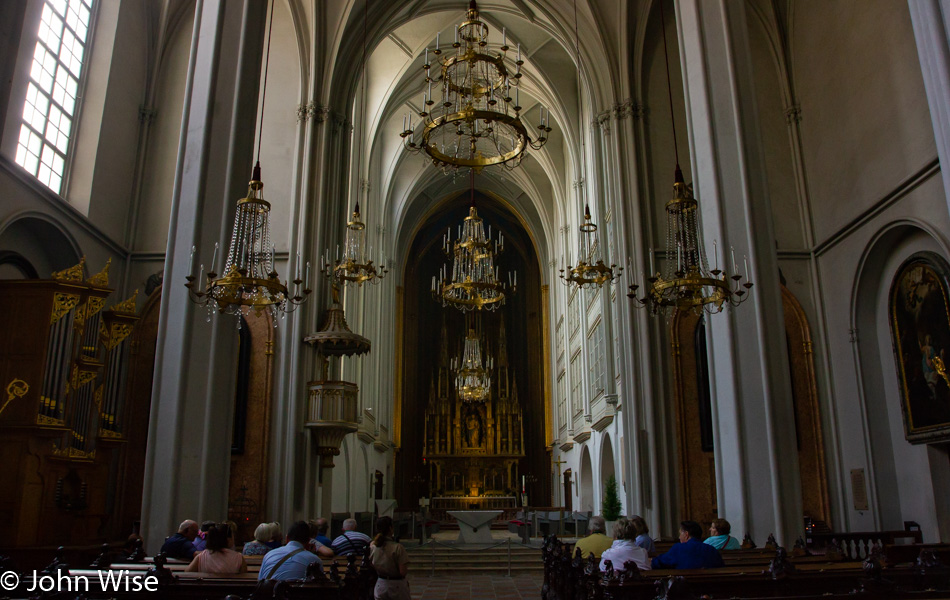
The Augustinerkirche, or Augustinian Church, was another surprise on our way this morning. Started back in 1327, it has played host to the marriages of Emperor Franz Joseph, Emperor Napoleon Bonaparte, and Empress Maria Theresia. On Sunday High Mass, the church often features a full orchestra and choir, should you be so lucky to be there on one of those weekends.
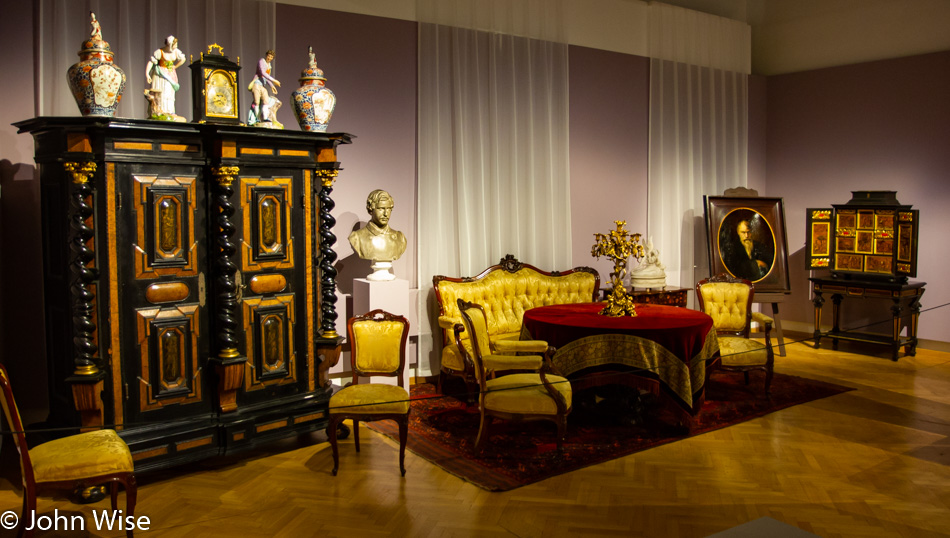
The Jewish Museum of Vienna is our last scheduled visit of the day before heading west. According to Wikipedia, “The first Jewish Museum in Vienna and the world was founded in 1896. It was supported and run by the Society for the Collection and Preservation of Artistic and Historical Memorials of Jewry. The museum focused on the culture and history of the Jews in the Austro-Hungarian Empire, especially in Vienna and Galicia.”
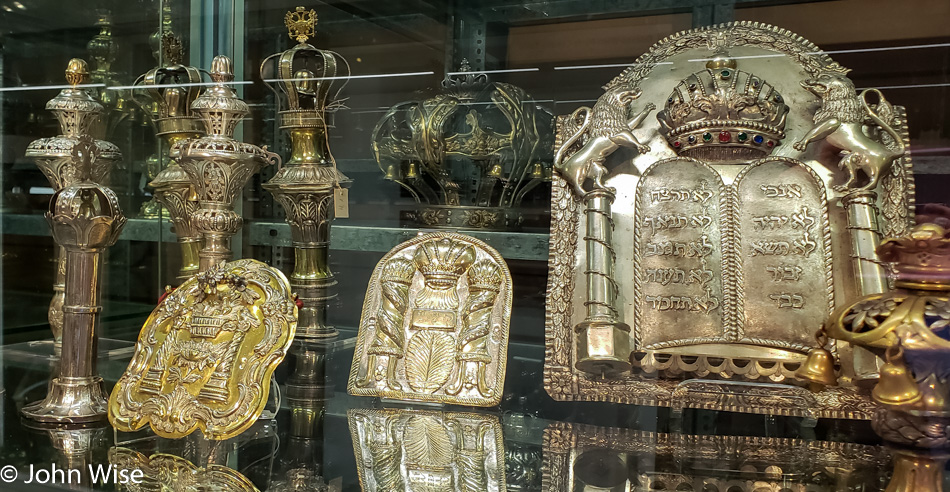
During World War II, about 6,400 objects of art were confiscated from the existing Jewish museum, and the old facility was shuttered. Starting in the 1950s, those objects were instituted, and then in the early 1990s, the current location of the museum was established.
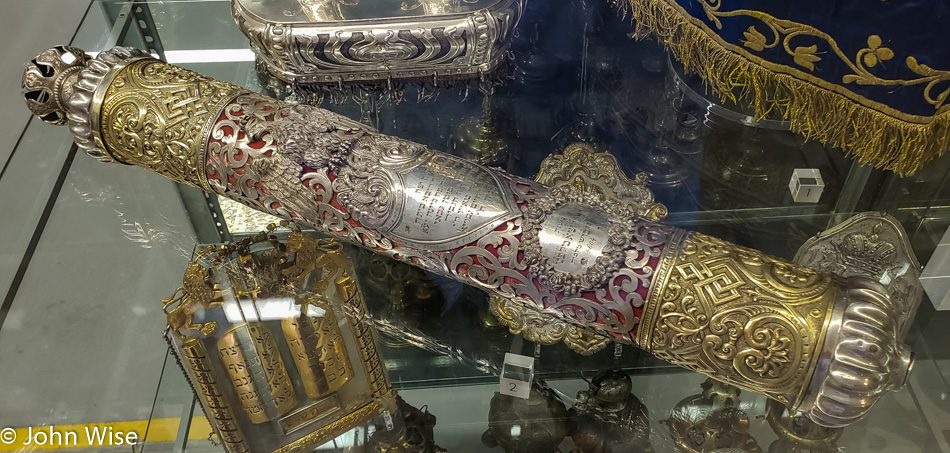
Max Berger, who was born in 1924 and was the only survivor of the death camps from his family, is the person largely responsible for the collection on display today. He amassed more than 10,000 pieces of Judaica, and upon his death, his widow donated another 3,200 pieces to the museum.
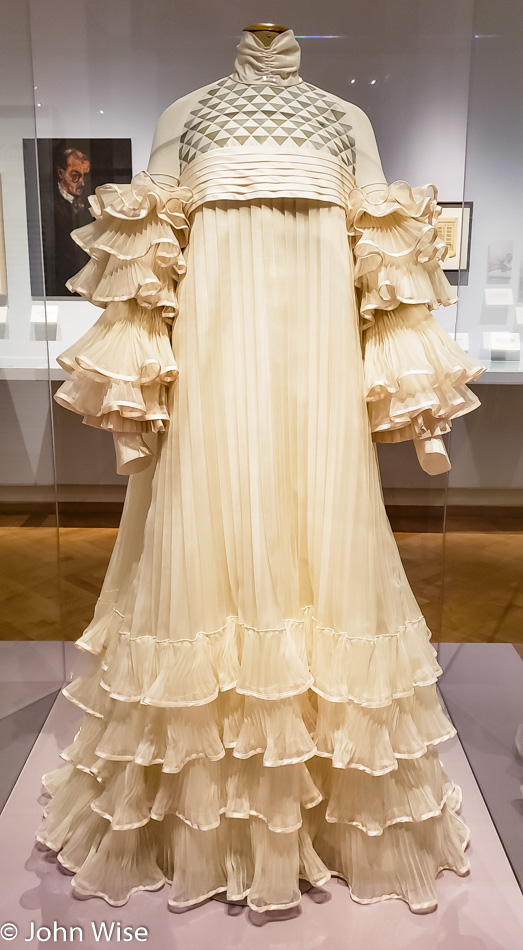
Without the museum and the efforts of those who have supported the creation and protection of this rich history, a large part of the story and cultural contribution to central Europe would be lost. One of the current exhibits explains the importance of salons (cultural gatherings in people’s homes), which were often hosted by Jewish women in Vienna from the late 18th century on.
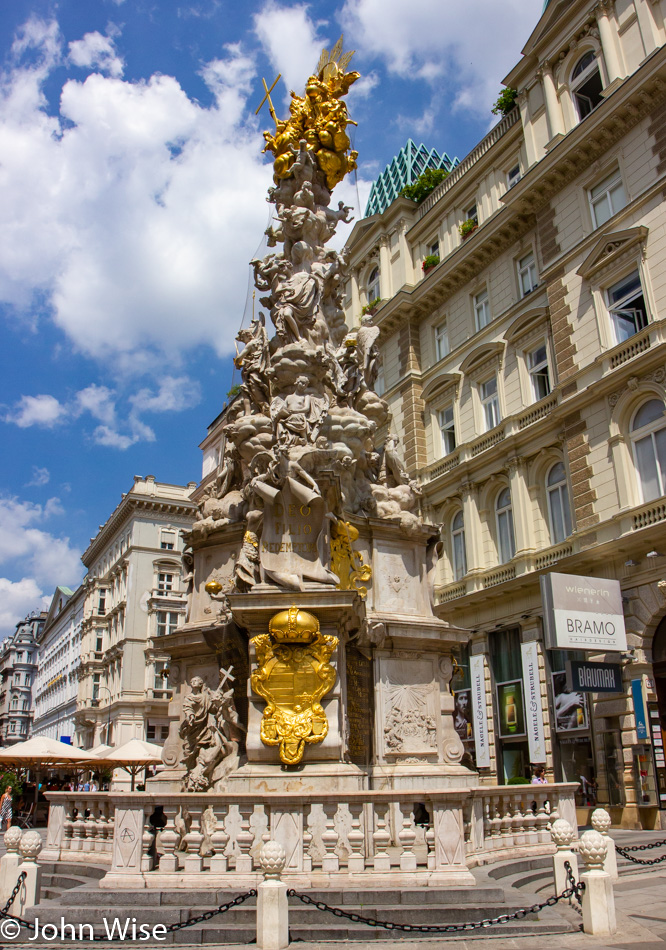
The Pestsäule or Plague Column stands in recognition of the approximate 76,000 residents of Vienna that died in the plague of 1679 killing nearly a third of the population. On the other days, when we were passing this monument, it was wrapped around its base with hordes of tourists, so seeing it this way and not in shadow was a lucky break.
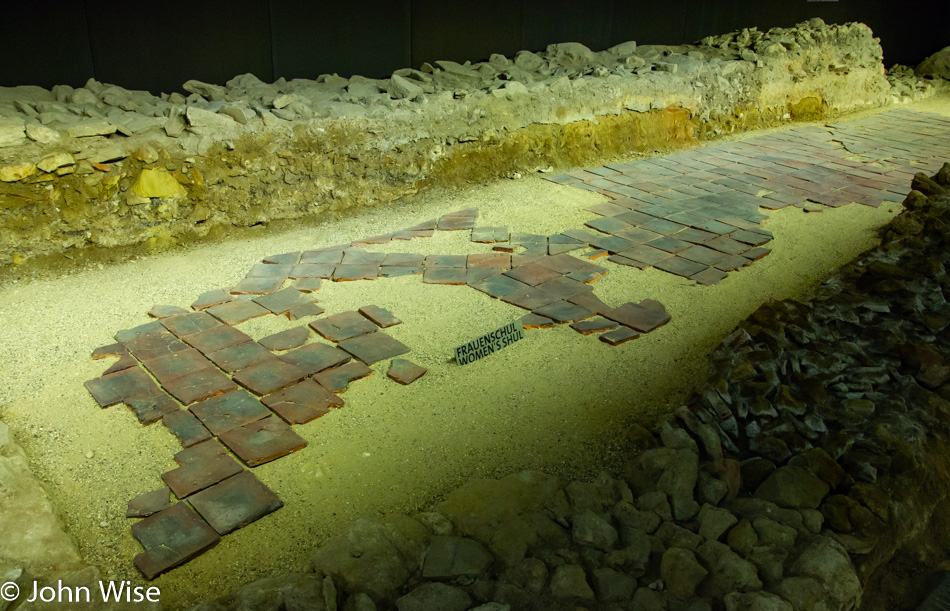
This is the other part of the Jewish Museum known as Museum Judenplatz, which, in addition to an exhibit, features some unearthed foundations of a medieval synagogue nearly 5 feet below the current street level. With this, it was time to leave Vienna.
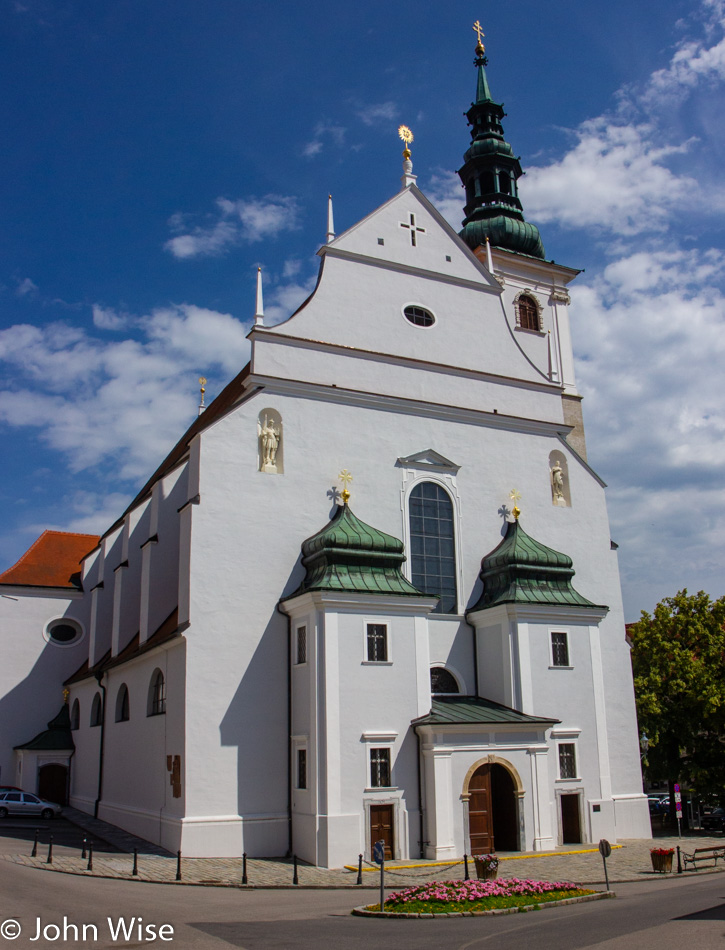
The first church we came upon after arriving in Krems an der Donau was the Parish Church of St. Vitus. The original church that sat here was built back in 1014, or 1004 years ago. It and others made way for the current church over the centuries.
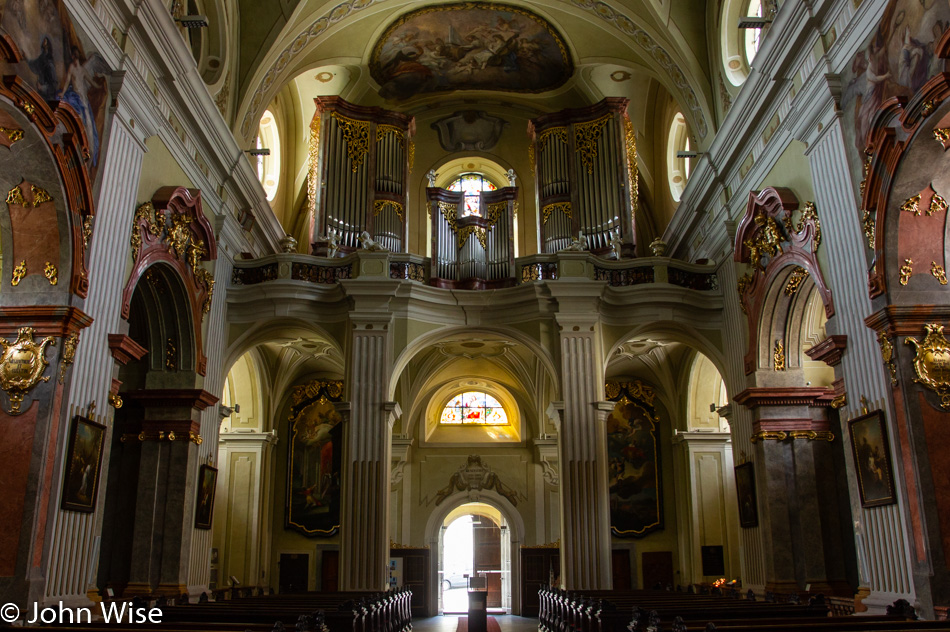
In 1975 the organ that was about 300 years old received a renovation, while the church would have to wait until 2009 for its major renovation. That work was finally done in 2016.
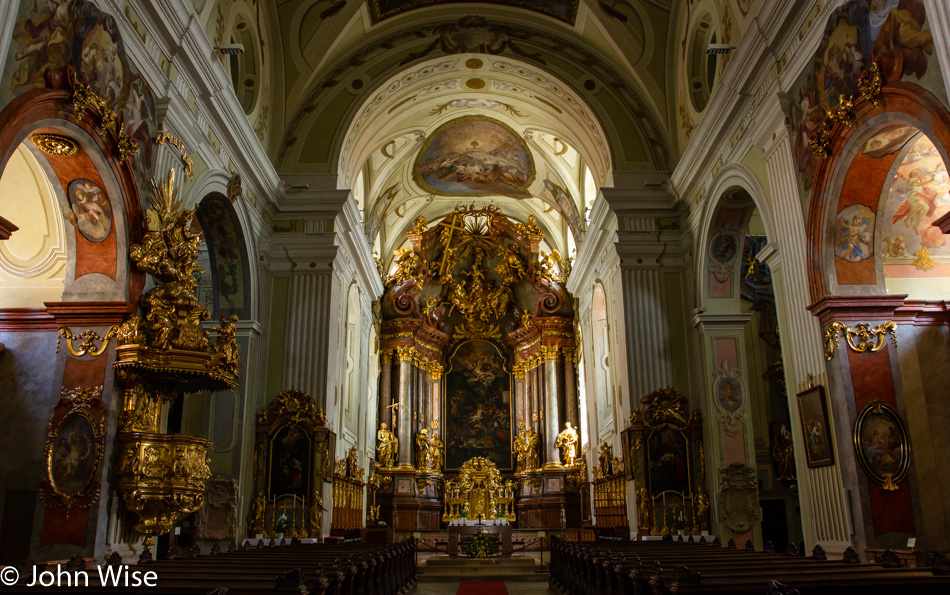
As part of a traveler’s experience, I vote for churches featuring organ music, choirs, and bell-ringing seven days a week and multiple times a day to fit everyone else’s schedule. If only there was enough demand for experiential travel that could make my request financially viable.
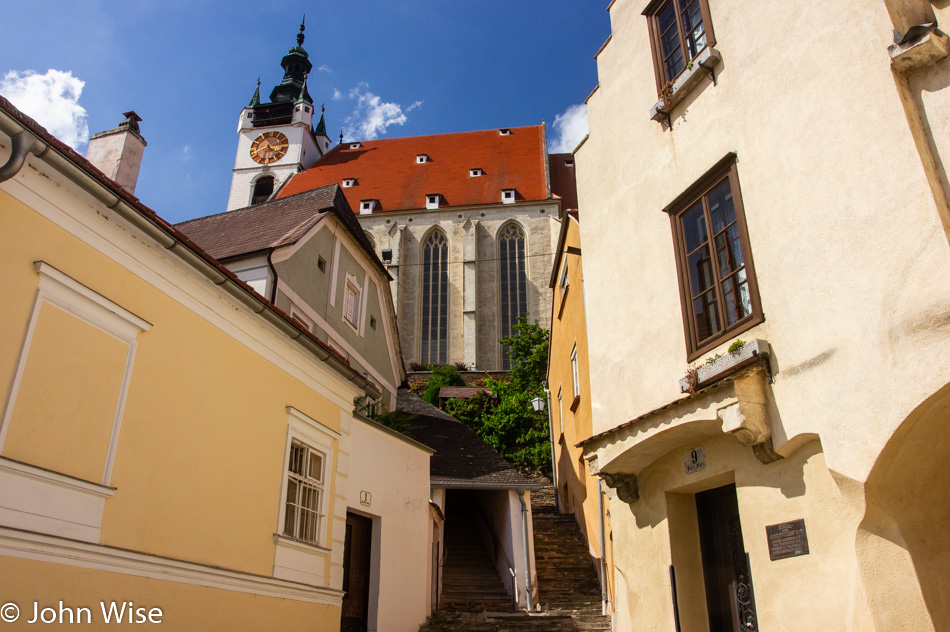
Around every corner is another church, and the one up the hill is our next stop: the Piaristenkirche. Krems is not built on flat land and these stairways up and down the hills are instantly attracting my curiosity. Caroline took the path on the left through the tunnel, and I took the right with open stairs.
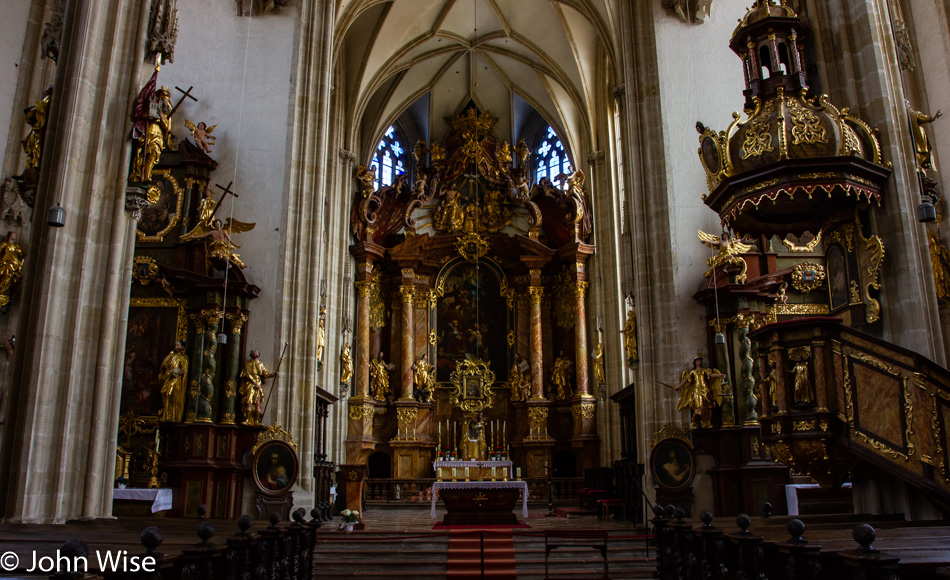
The Piaristenkirche is the oldest church in Krems and dates from 1475, though an older church has stood here since 1284.
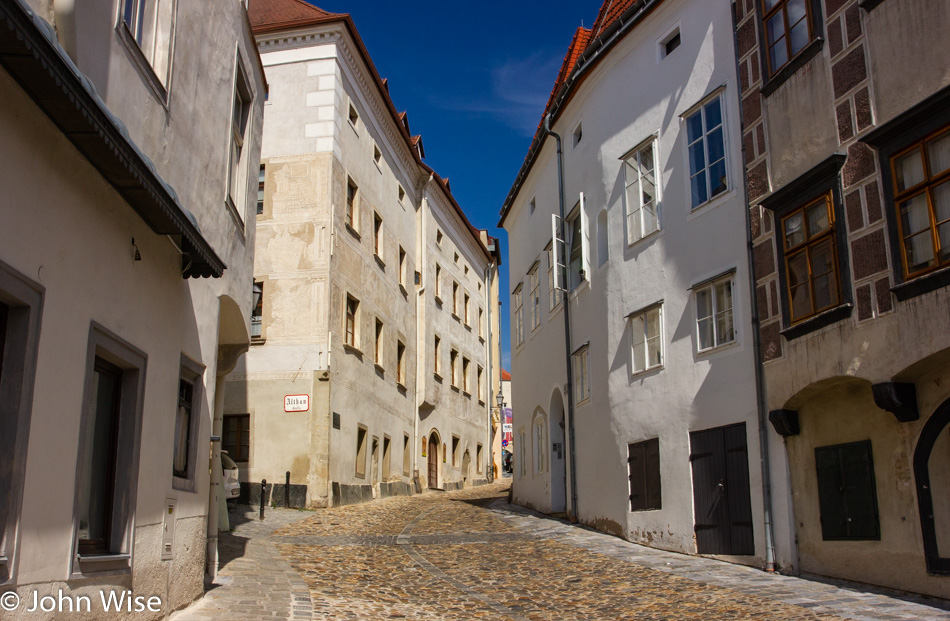
In these towns that escaped devastation from the countless wars that have wracked Europe, there is still that sense of what the medieval village might have looked like with winding streets prior to consideration being made for automobiles.
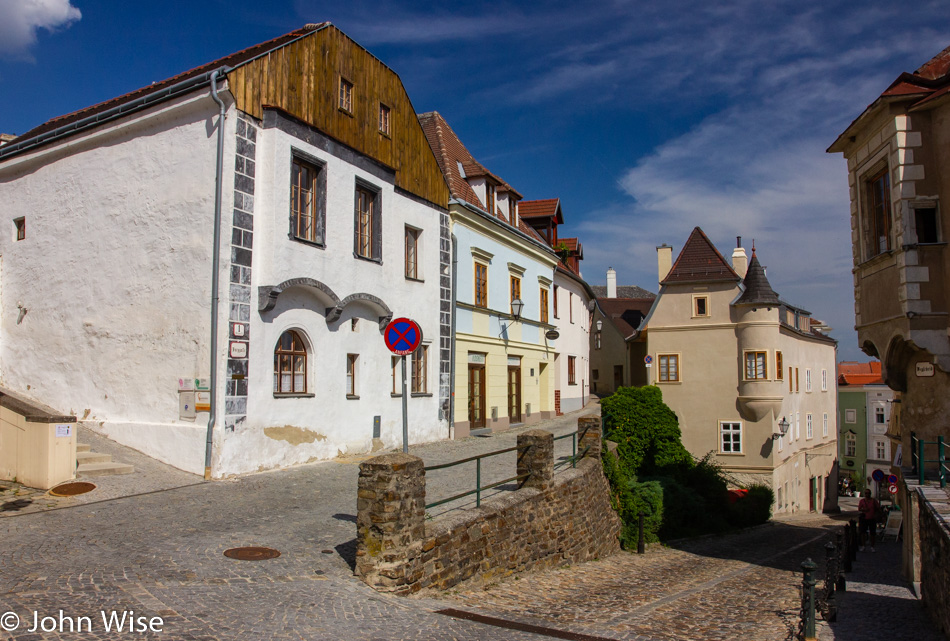
This is part of the perfect layout for a city I want to live in. A city where we wouldn’t need cars in the town center but with enough population density to support a vibrant shopping main street. Museums, music venues, and salons for learning and art exhibitions would also play a key role. My social network of synthesists, gourmet chefs, writers, filmmakers, and photographers would be part of this community. To me, the virtual world we should be building is the face of the next social space, but our obsession with sports and violence and lack of clear direction for the intellectual progress of humanity has us staring at our own belly buttons instead of honestly trying to make a better world. Sometimes, I hate being an idealist.
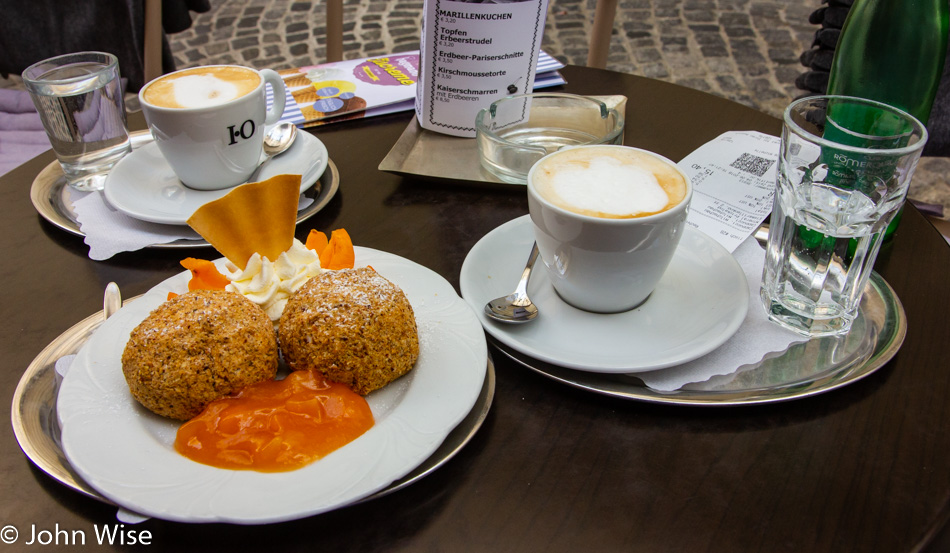
Feeling sorrowful? Drown that negativity at Café-Konditorei Hagmann with a Marilleneisknoedel mit Marillensauce und Schlagobers! It’s apricot season in Europe, and these crumb-covered ice cream balls stuffed with fresh apricot and sides of apricot compote and whipped cream are the perfect antidote to the heat, foot pain, or the blues should you be suffering from that or any other ailment. Add a cappuccino and some sparkling water and you’ll have entered travelers paradise.
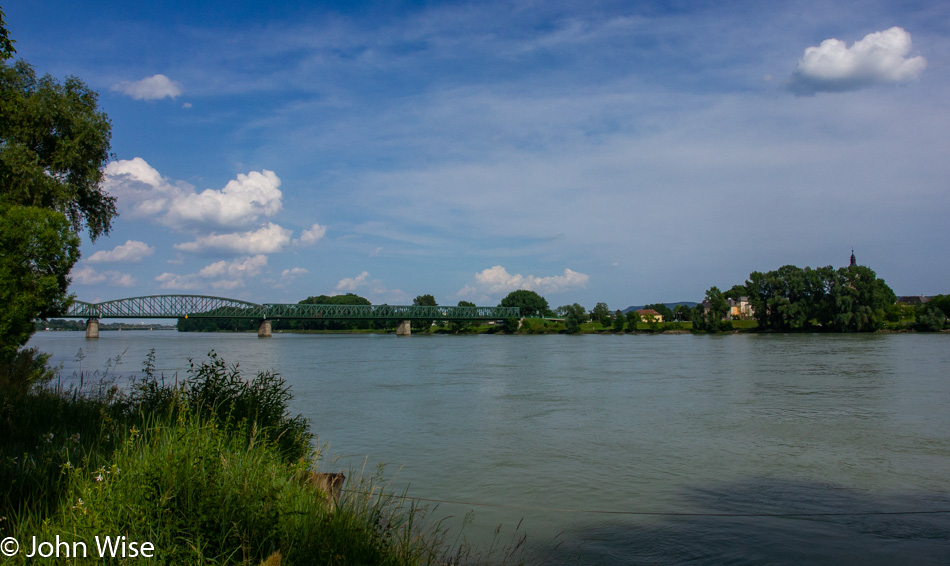
This is our last view of the Danube while on this particular journey across Europe. I hope to see it again someday.
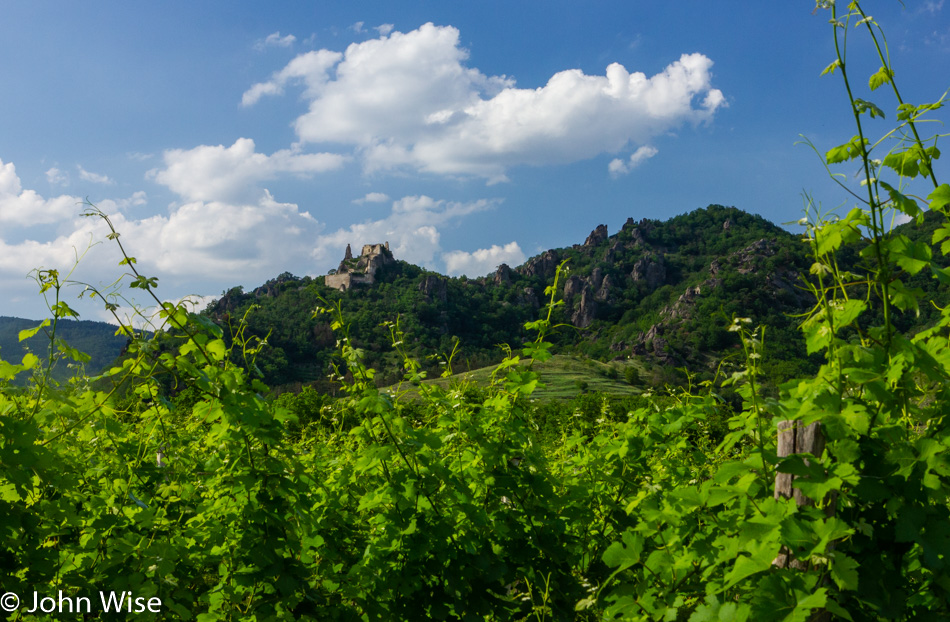
As in all river valleys across Europe, you will find grapes growing on the hillsides because other than great desserts, baked goods, exquisite art, and other luxuries for the soul, wine is as essential as water and air.
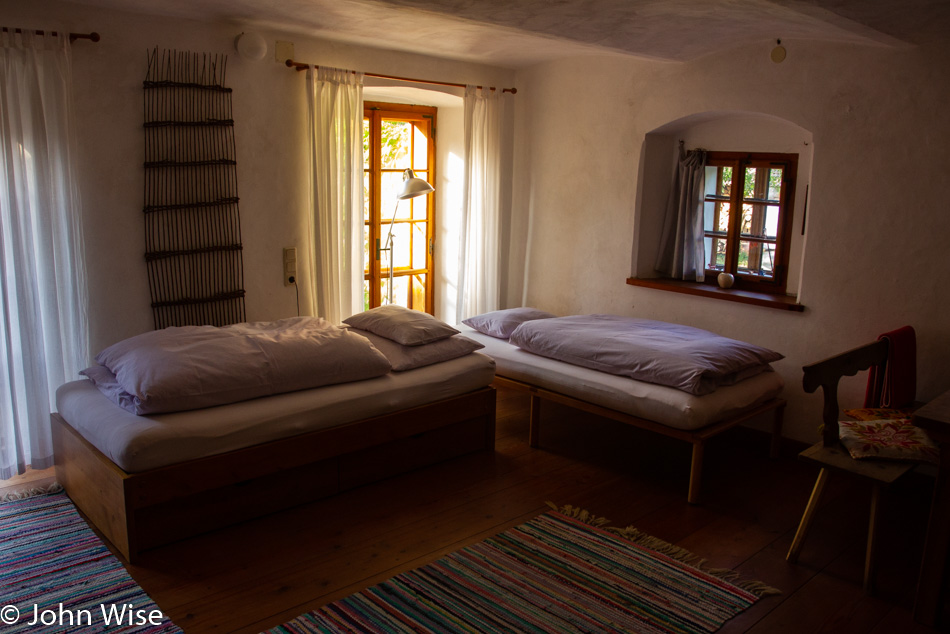
Our apartment for the night is not just an apartment; it is an old farmhouse. We are in Hörsching, Austria, outside of Linz, and while the intention was to visit Linz while we were in this corner of the world, we will not make it. Being out in the countryside spoke to us in an instant and warmly greeted us with recommendations to go slow tonight and stop rushing around.
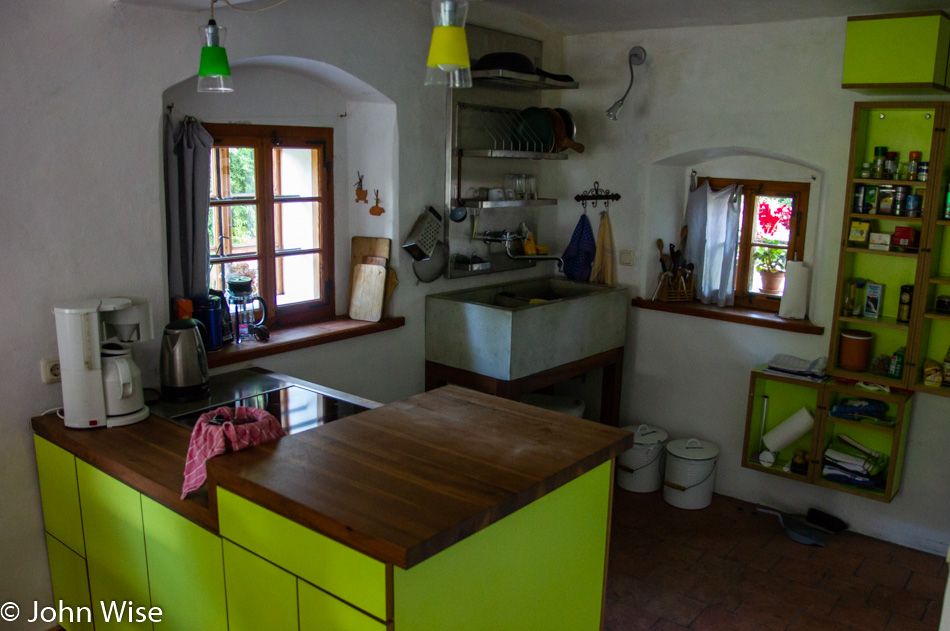
The first thing we learned here was that one night was not going to be enough, but due to our schedule, we would not be able to extend our visit.
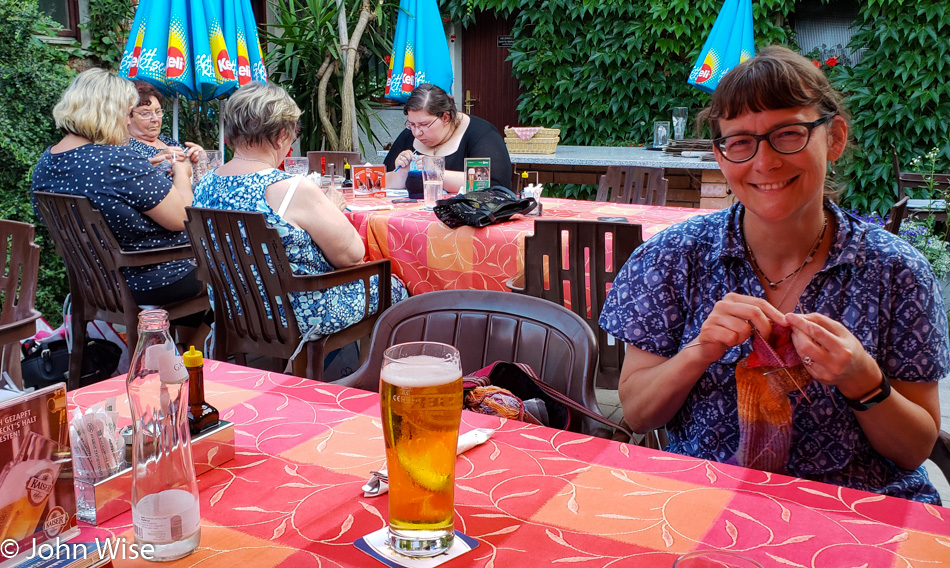
Peter and Greti were our hosts for this Airbnb (which you can find by clicking right here), and it was Peter who gave us a couple of recommendations for dinner just down the road. We pulled into the Gasthof Mandorfer, and maybe because it was still relatively early, the restaurant was mostly empty, except for a side room where about a dozen people were sitting with maybe six accordions on top of the tables or in people’s laps. Everyone else was out on the patio enjoying the great weather. With five days to go before the World Wide Knit in Public Day, there were four women on one of the other tables practicing for the global event, so Caroline went back to the car to grab her yarn because nothing is quite as good as a beer, knitting, dinner, and sunset all at the same time.
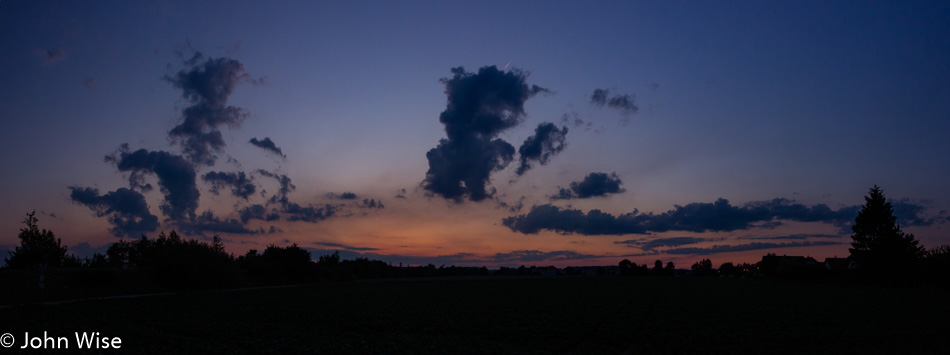
Closing thoughts for the day:
Between churches, food, and photos, we enjoy simply walking through the city and, in part, doing some window shopping, people watching and talking about what we’ve seen interspersed with fragments of history Caroline is pulling off the internet or taking from her memory.
In the early morning, before breakfast, while on vacation, I try to prep some photos should I get the opportunity during the day to sit in a coffee shop and write, although this hasn’t been possible since we were in Italy. Caroline, on the other hand, tends to read about places we’ll be going, where we’ve been, or the people and history we learned of when visiting a place.
Once we get underway, it’s time to find some breakfast, which we hope will be some bread, butter, jam, a boiled egg, and coffee. An outdoor breakfast while people-watching remains my all-time favorite way of starting the day.
Where we go next sometimes depends on where we ate and what is relatively nearby, or we might have to take into consideration what opens where and when. In any case, there is some amount of travel, and as much as possible, we will try to walk a street we’ve not yet traveled. An app that draws highlights over the streets we’ve already walked would be ideal for this so we could easily see the streets we’d still like to explore; you never know what you might find down some random way.
As we walk along, we are looking at chipped and aged wood doors and window frames, curtains, cobblestones, roofs, signage, facades, people, dog poop, trees, moss, graffiti, old gates, keyholes, how cars park, bicycles including rusted hulks of bikes missing parts, occasionally I’ll ring a bike bell (maybe too often), glance at musty books in windows, names on door buzzers, and birds scurrying about.
Stickers on poles and electricity boxes get extra scrutiny. Antennas on roofs, while rarer these days, spark my imagination into thinking of the old guy in some apartment upstairs who’s lived there for 60 years and never felt the need to get cable and now is one of the last people to get poor reception on his TV as he tunes in the World Cup. Occasionally, an item left next to the trash will invite me to have a closer look and wonder why the person was getting rid of this particular thing.
Menus on the outside of restaurants is an absolute luxury, though with the internet I suppose I could look up a menu online. Passing by a place and checking out their menu without someone asking if I want a table allows me to find inspiration or lack of interest, and should I find the menu inviting, I put a virtual bookmark in my spatial memory to remember that this eatery might offer me a meal someday.
Soon, the day is coming to an end, and I can’t believe all the impressions that were made; this is the luxury of wandering around.
Walking stats: 17,650 steps for 8.25 miles or 13.4 km and 28 floors climbed.
